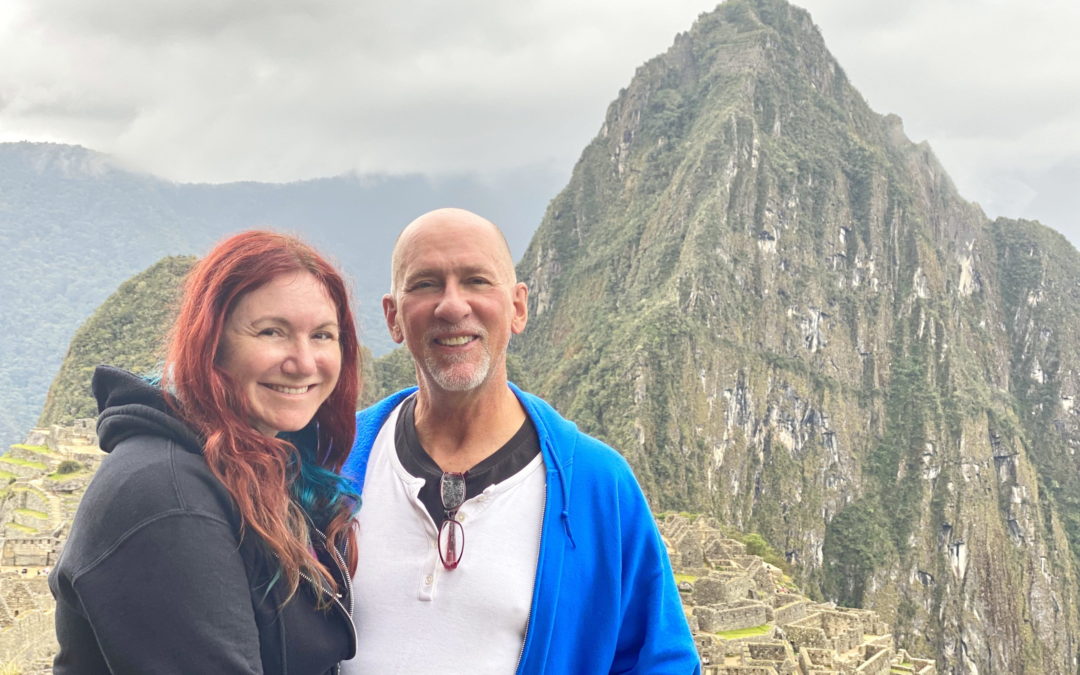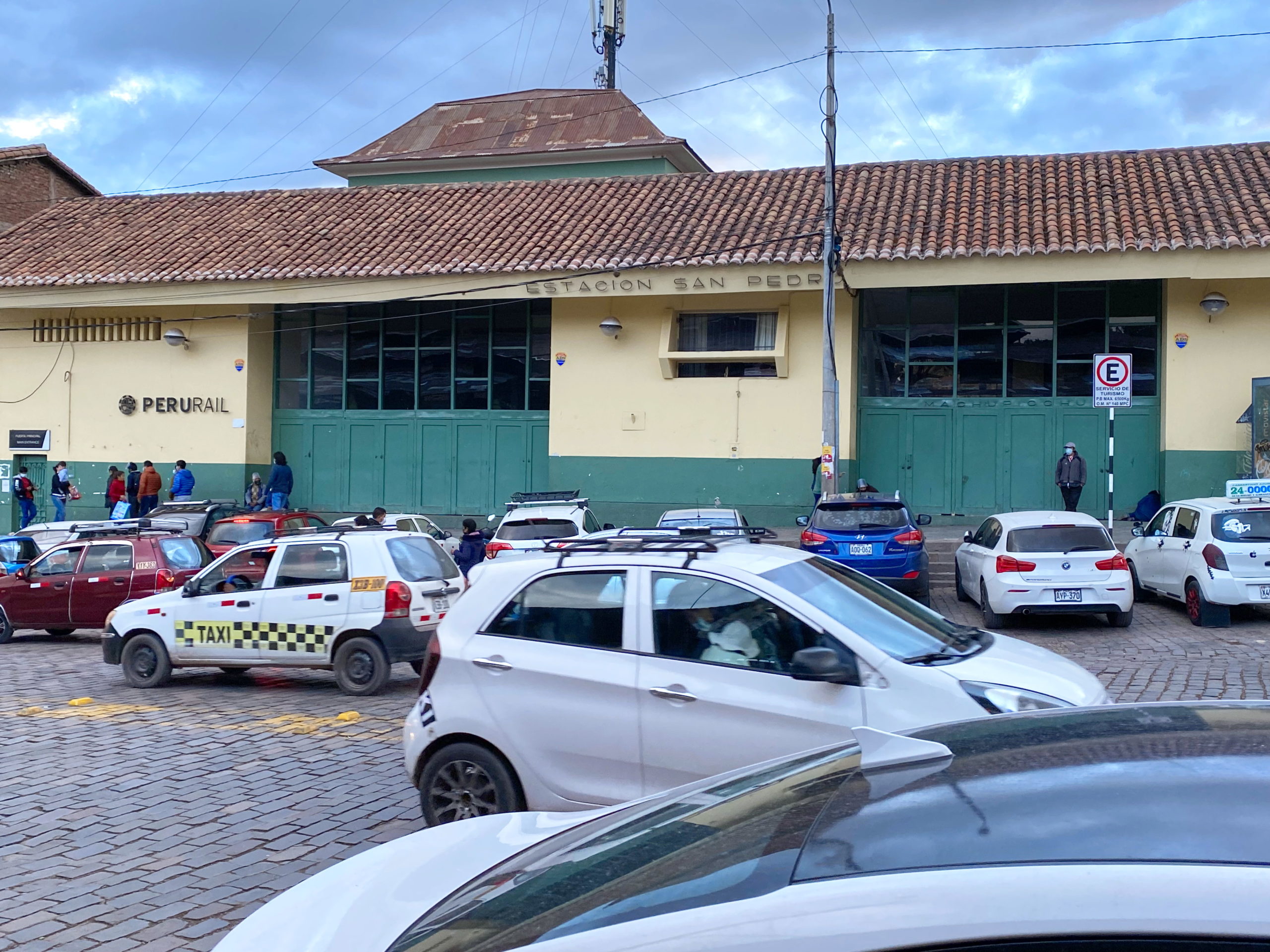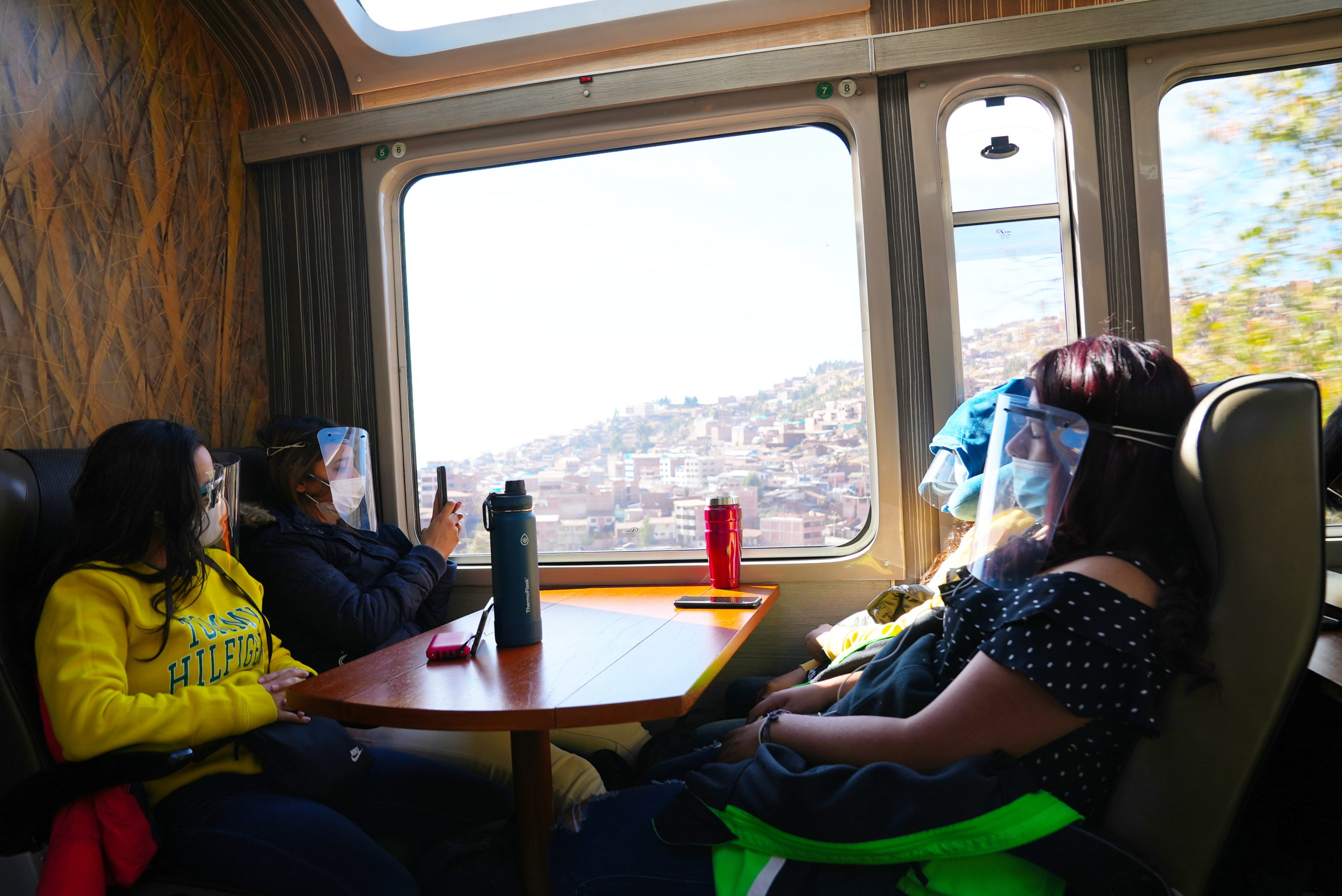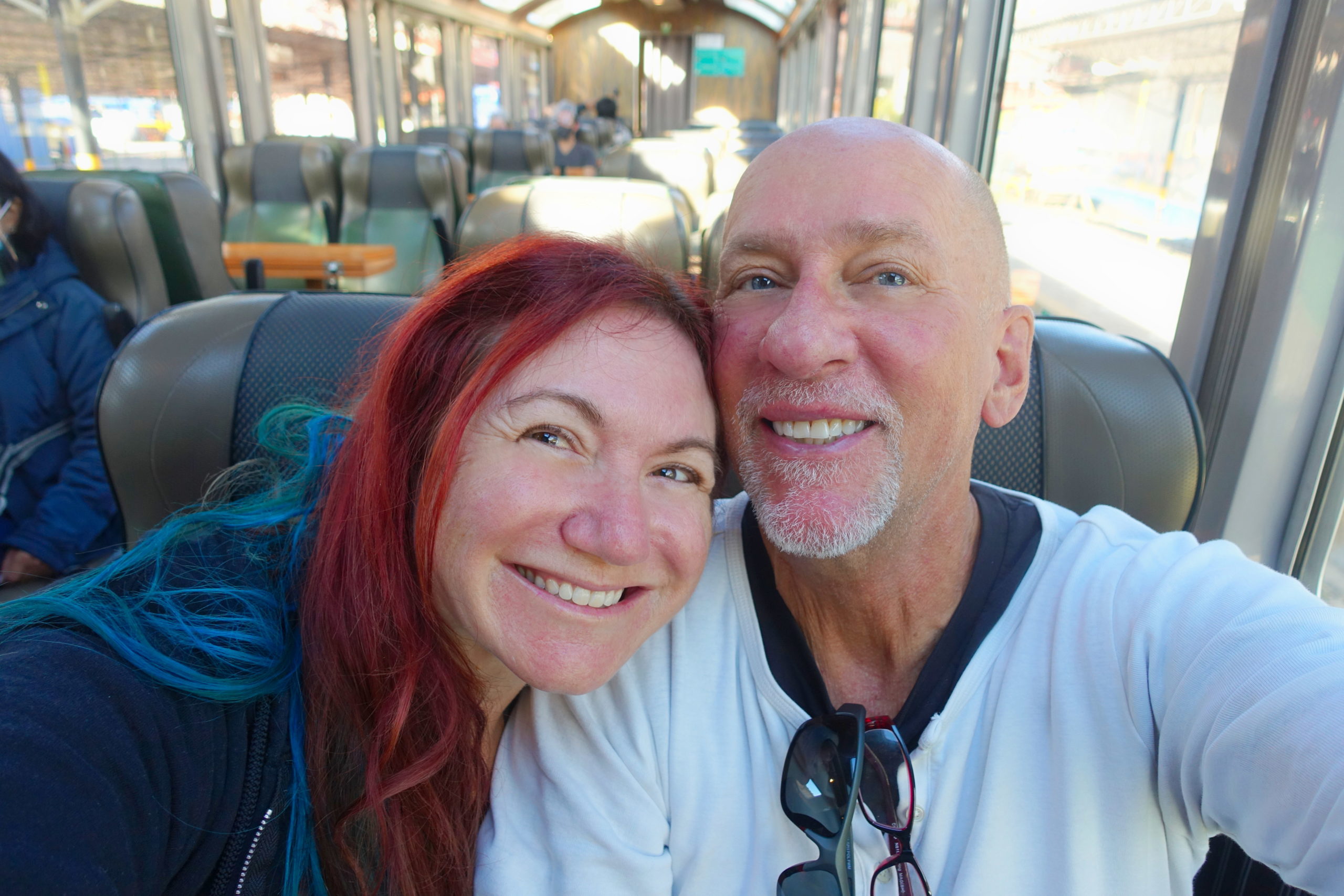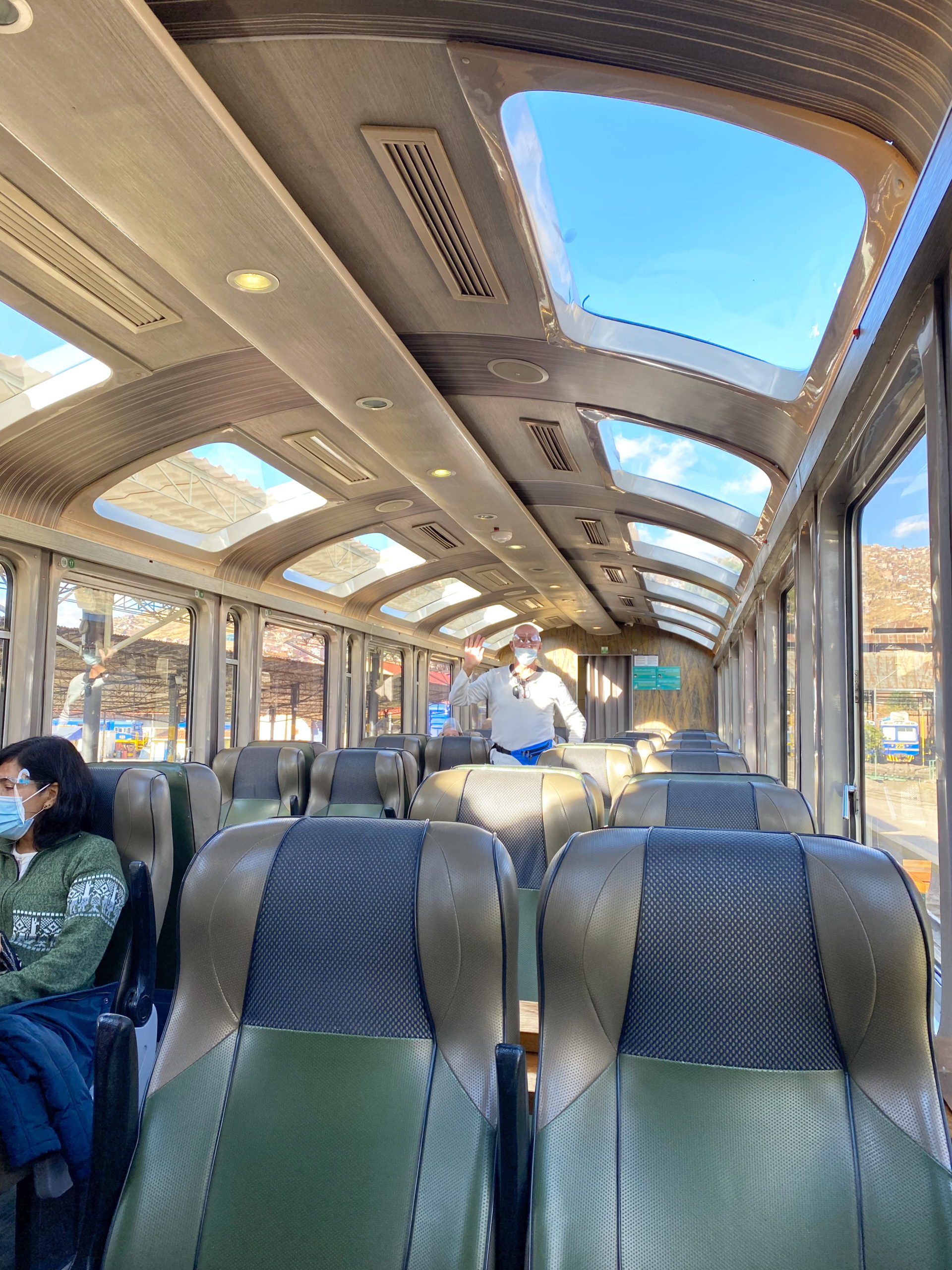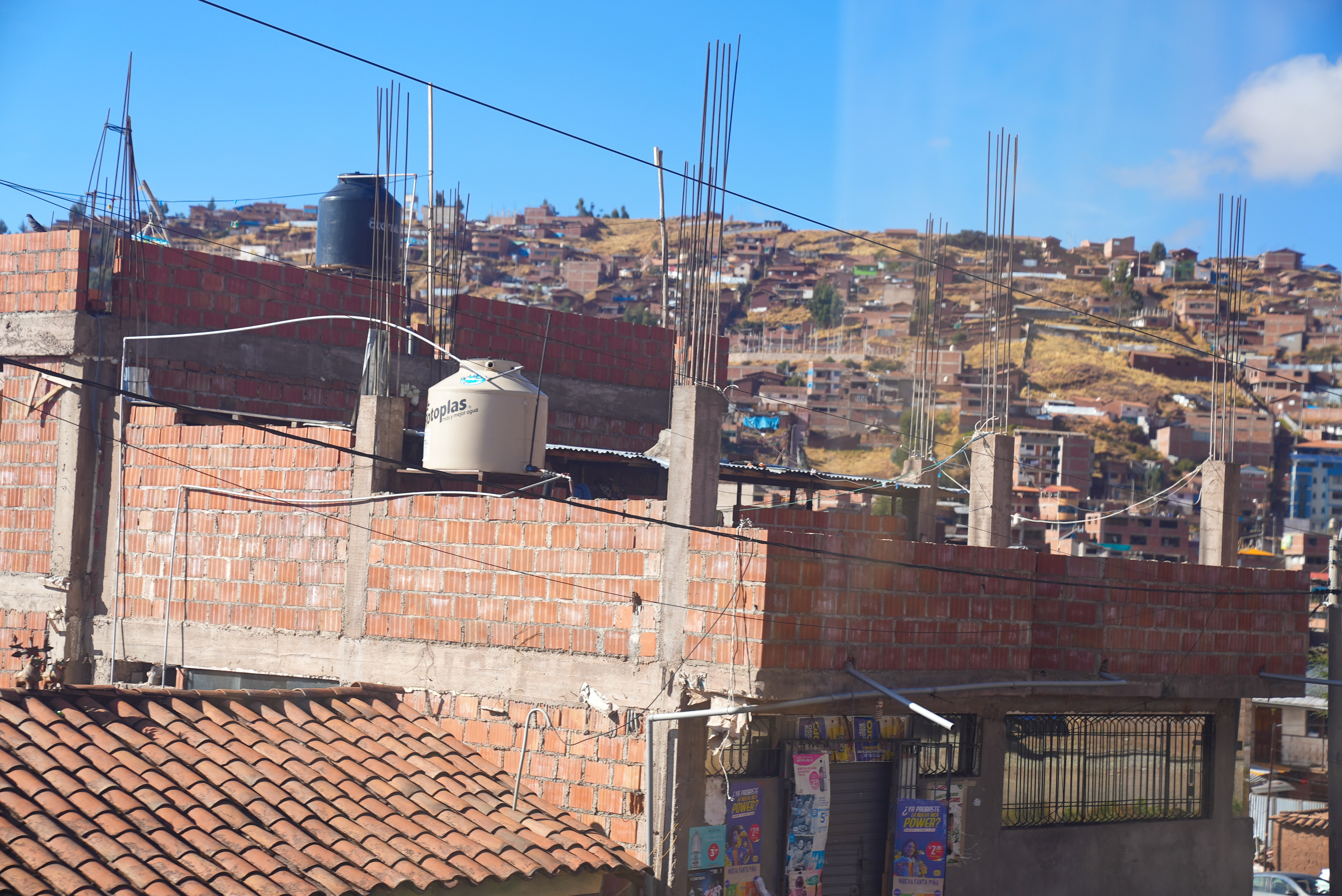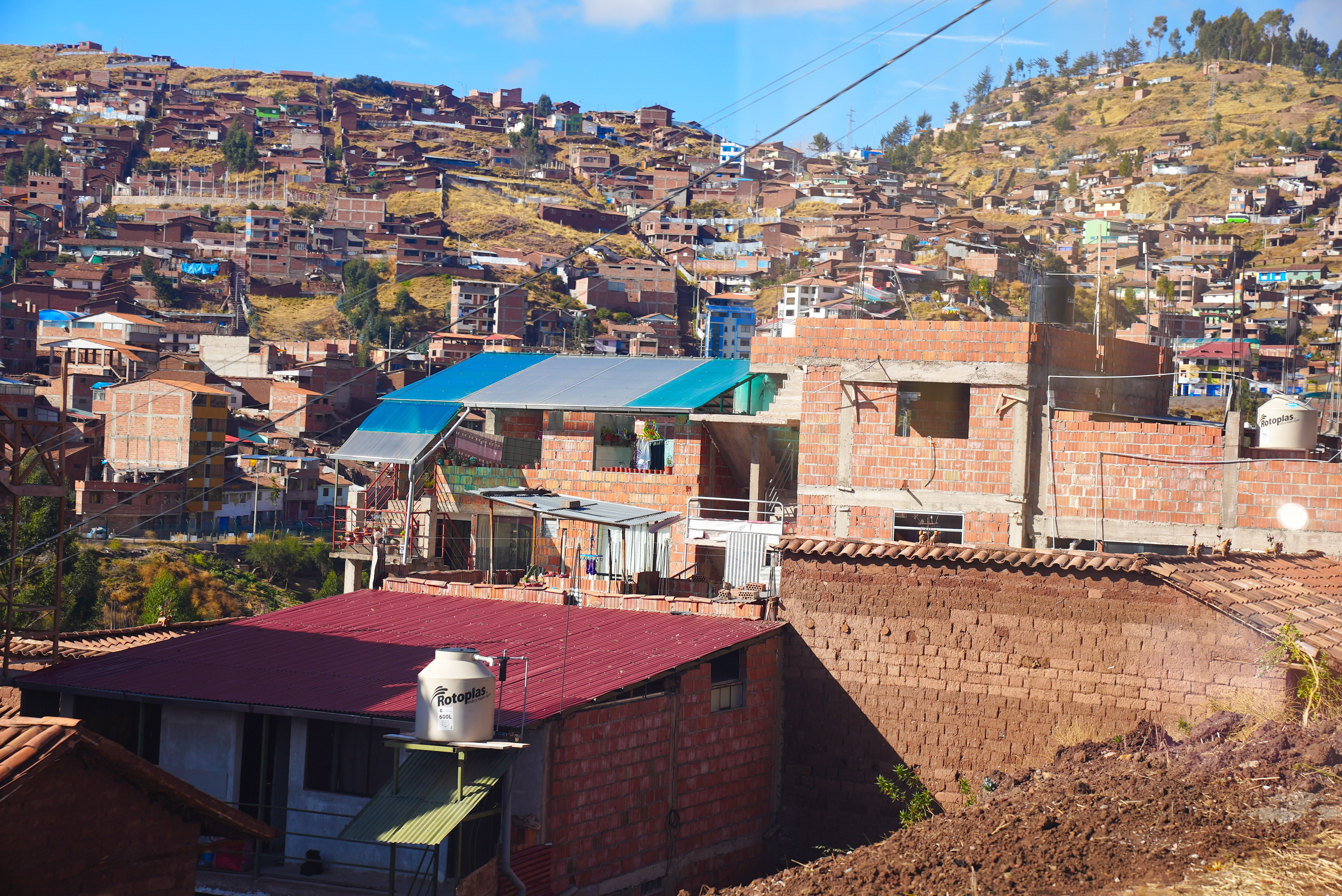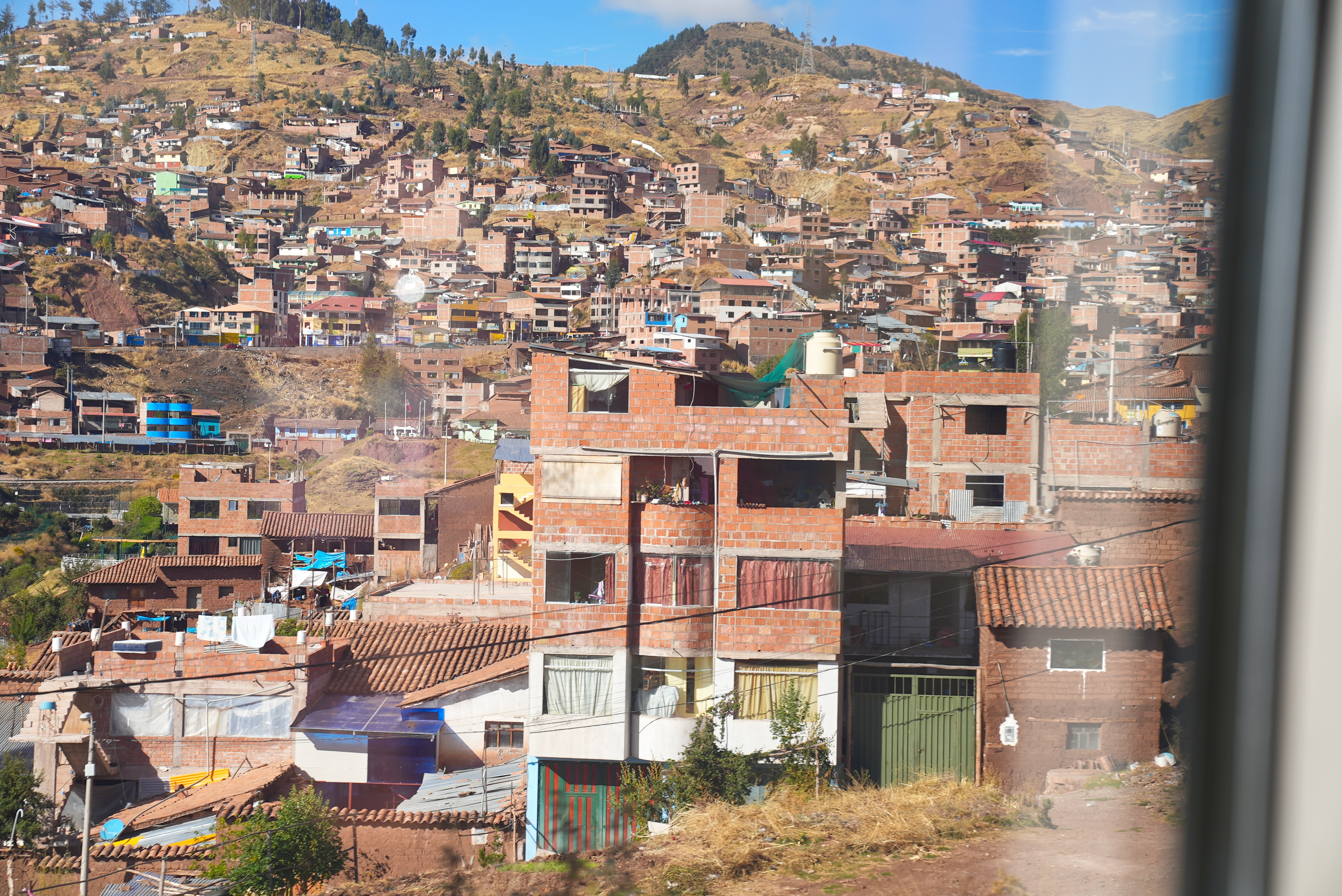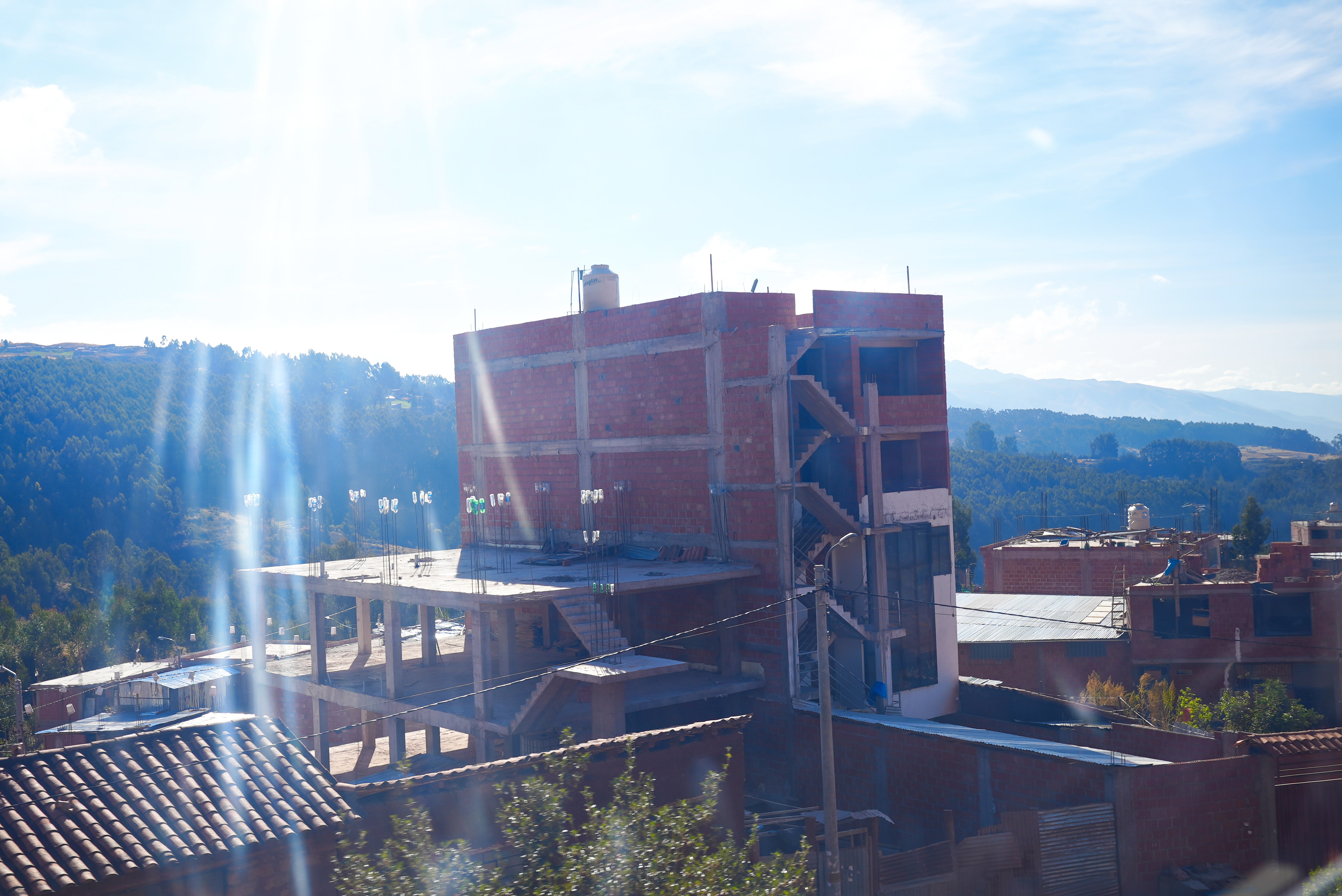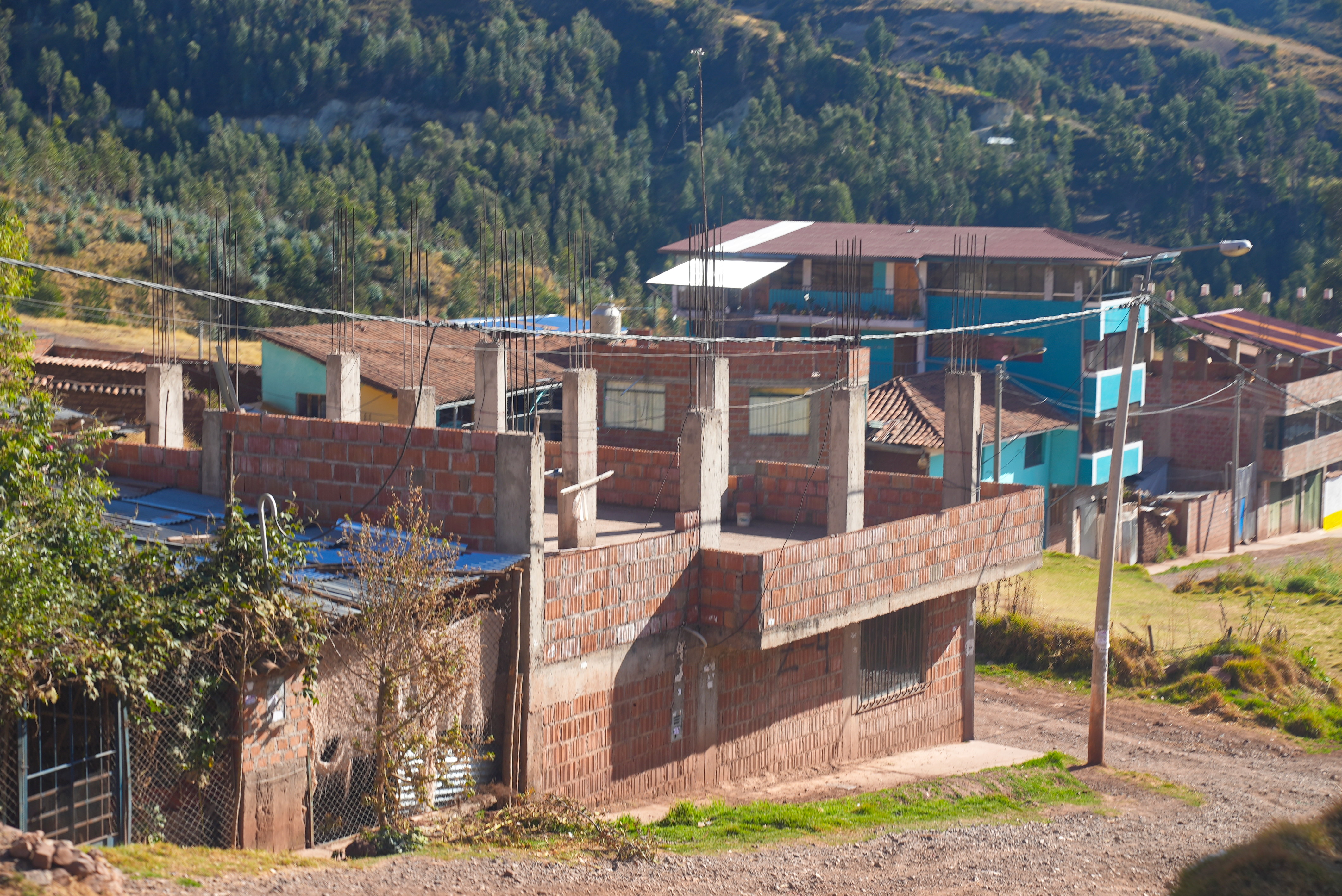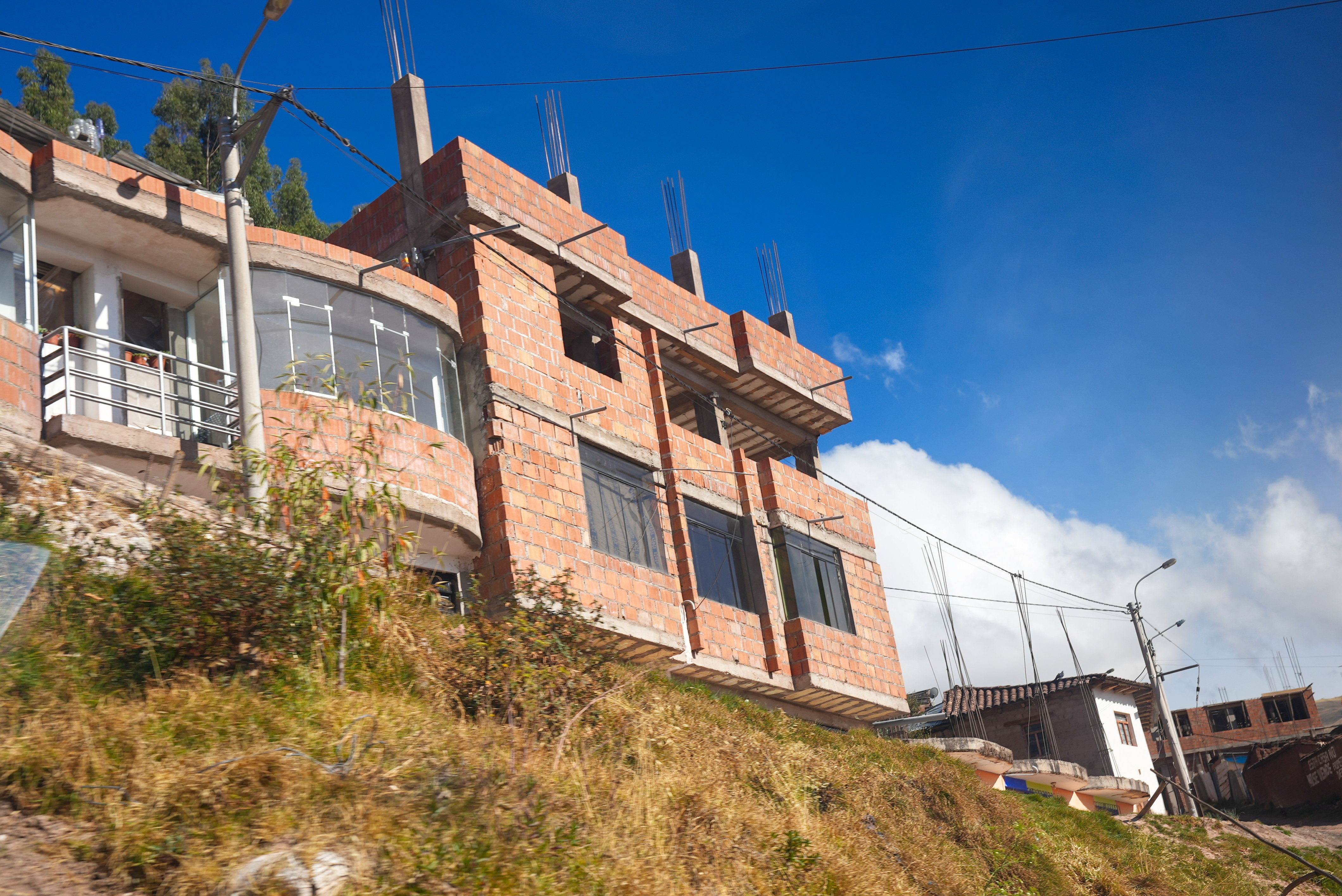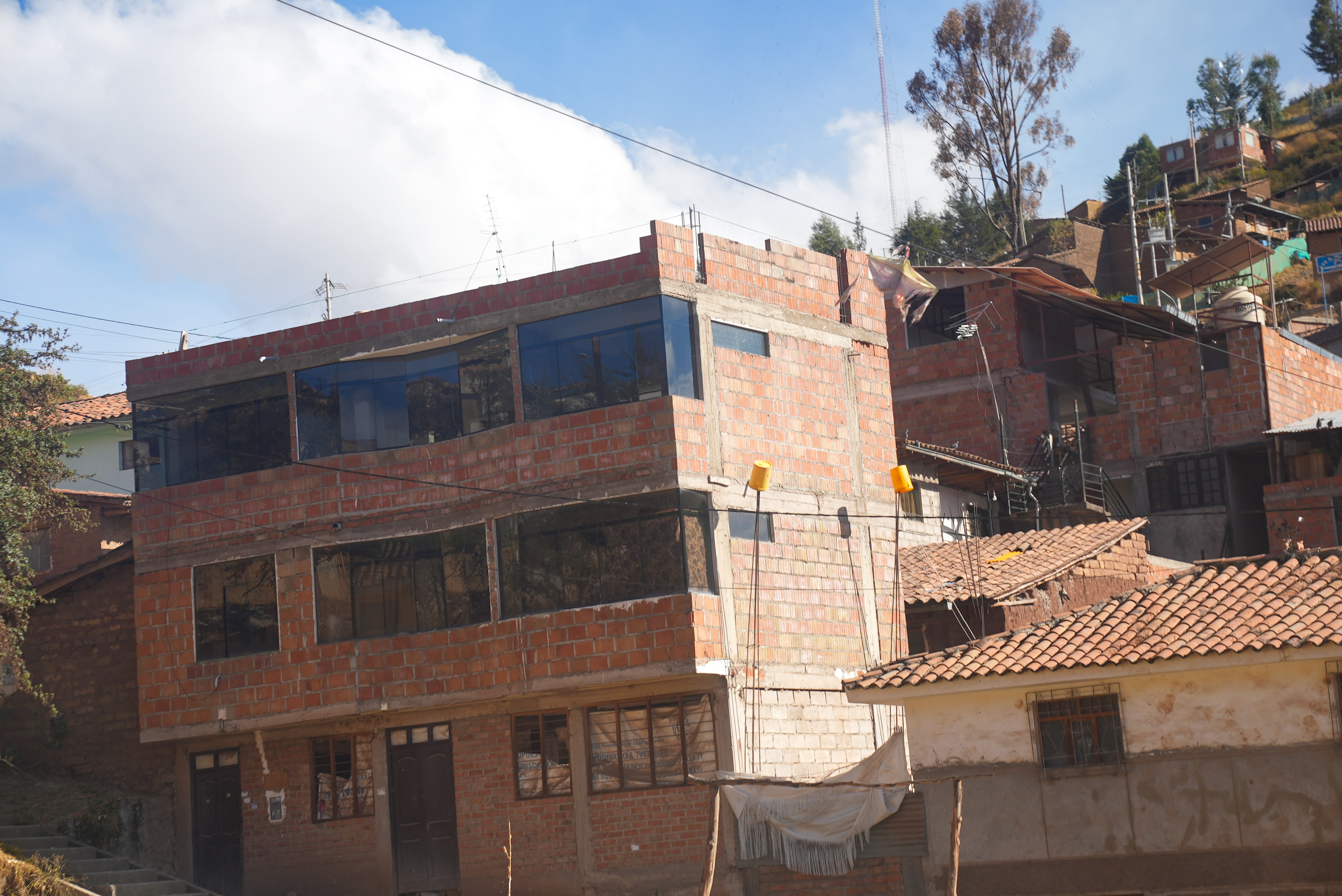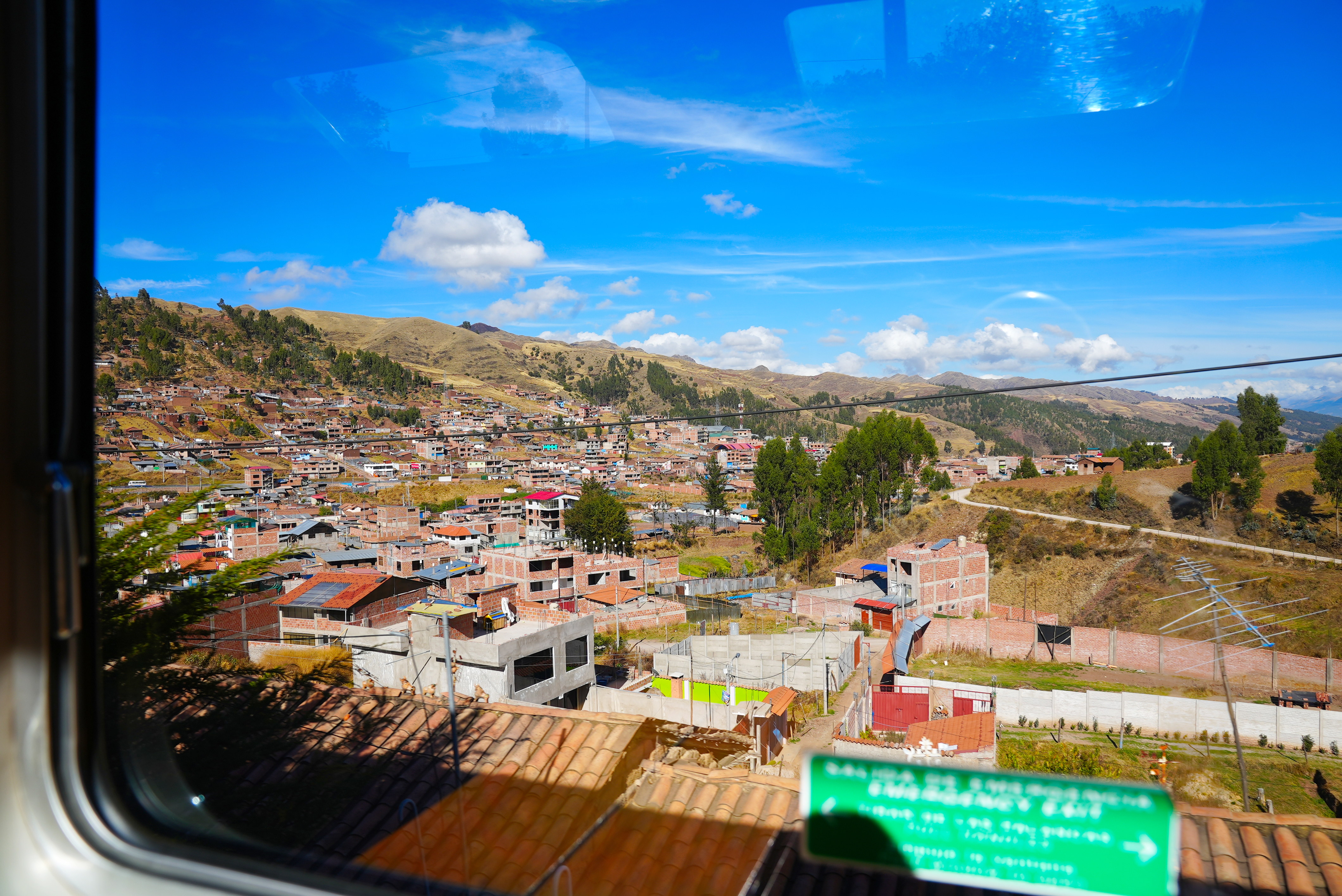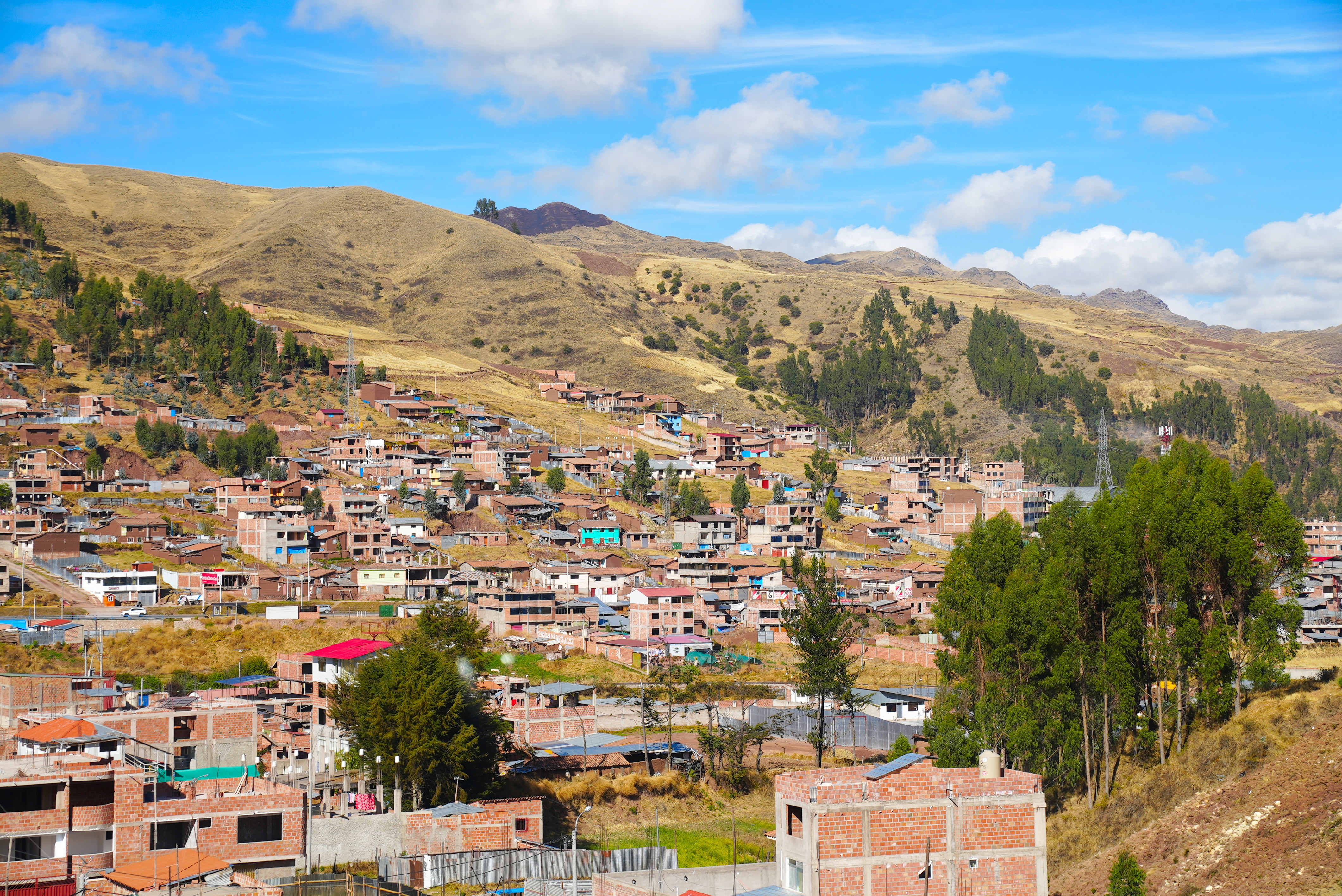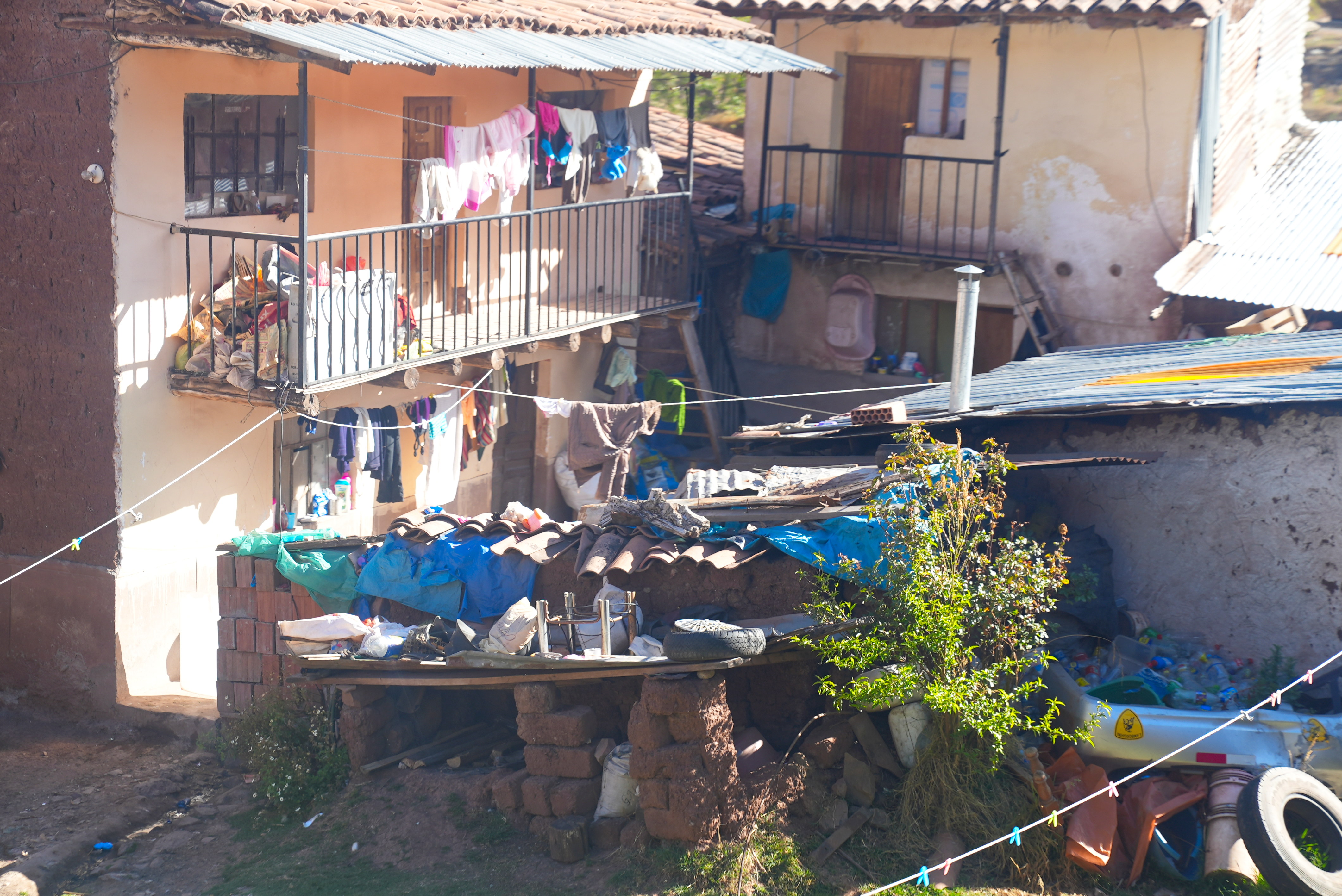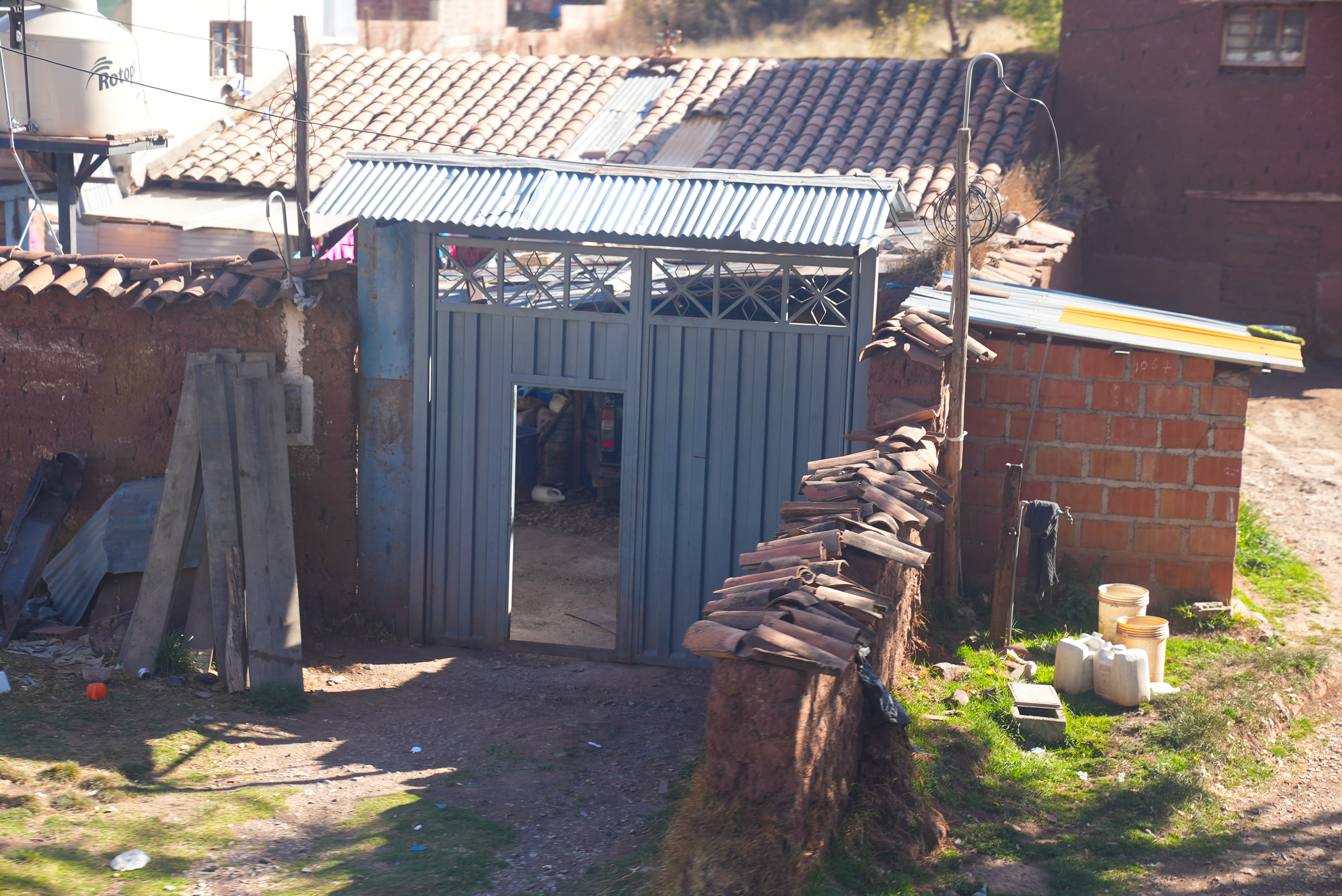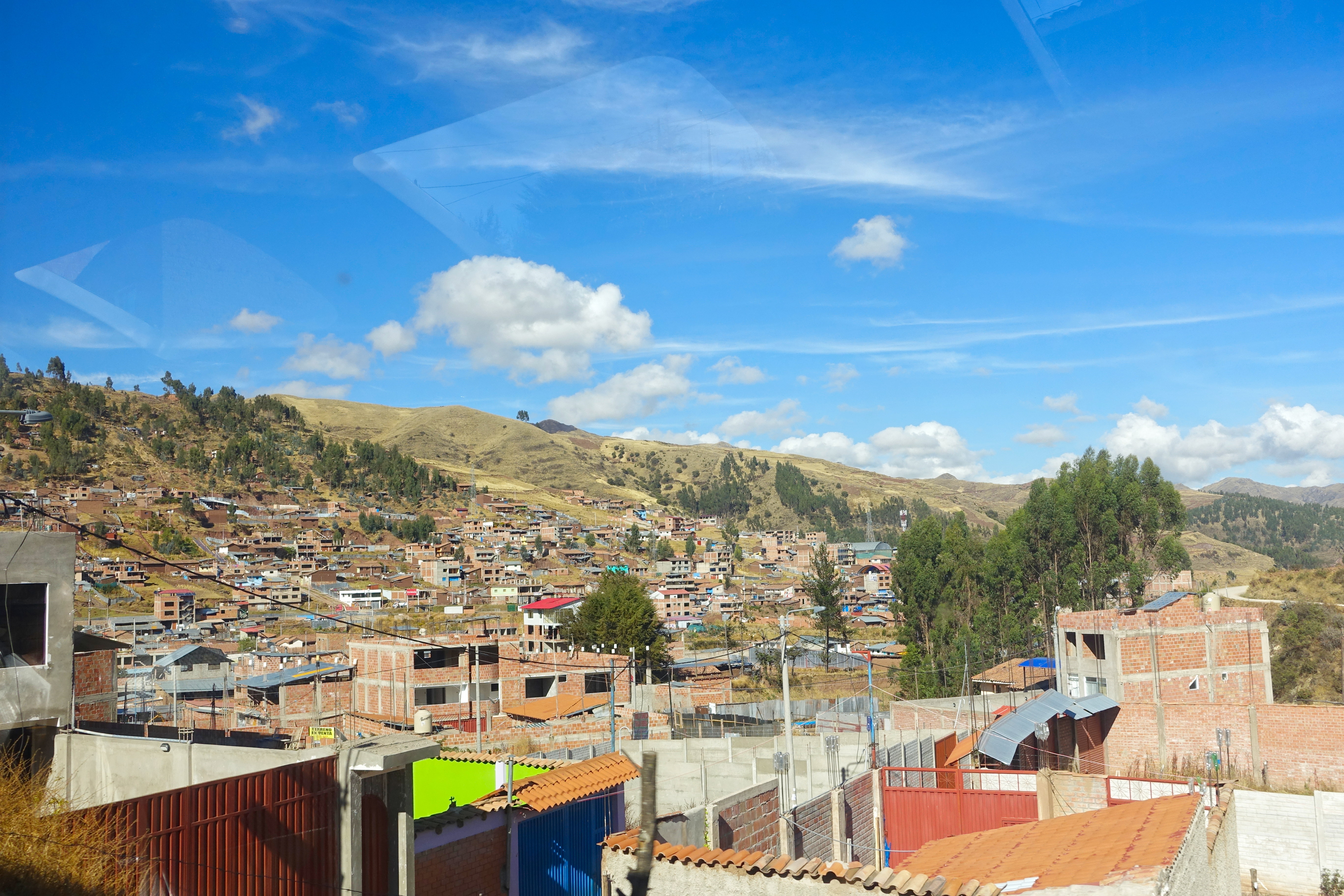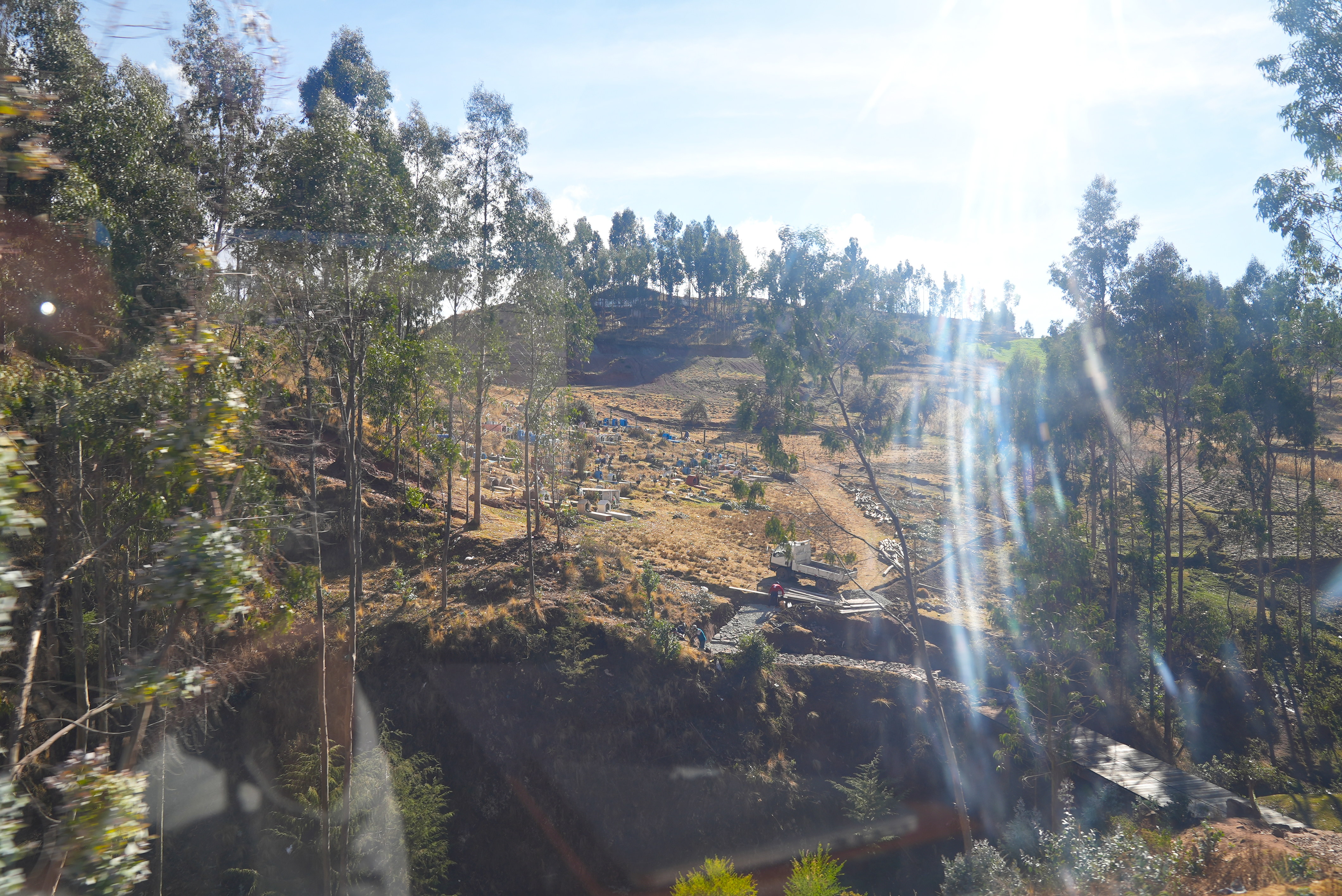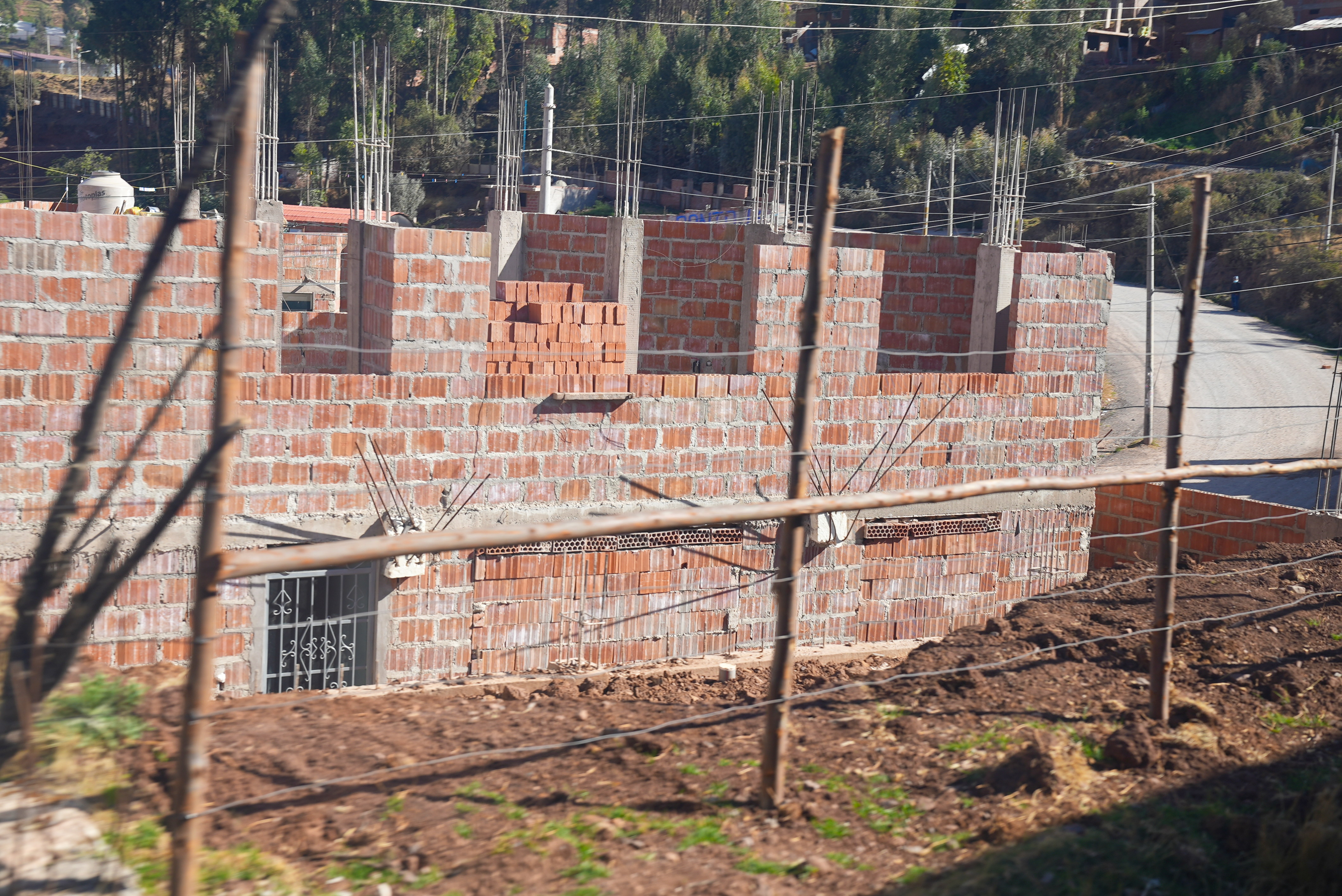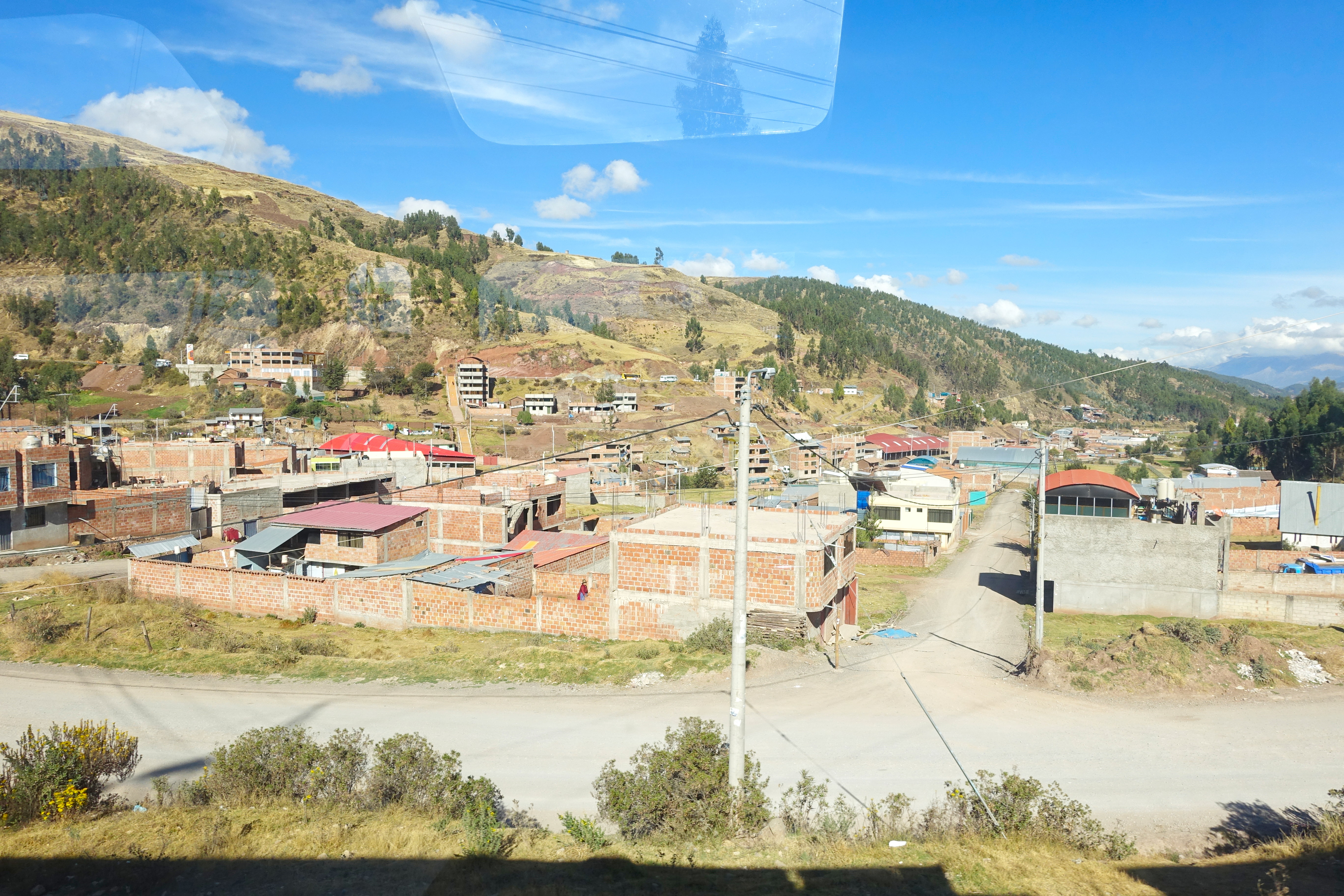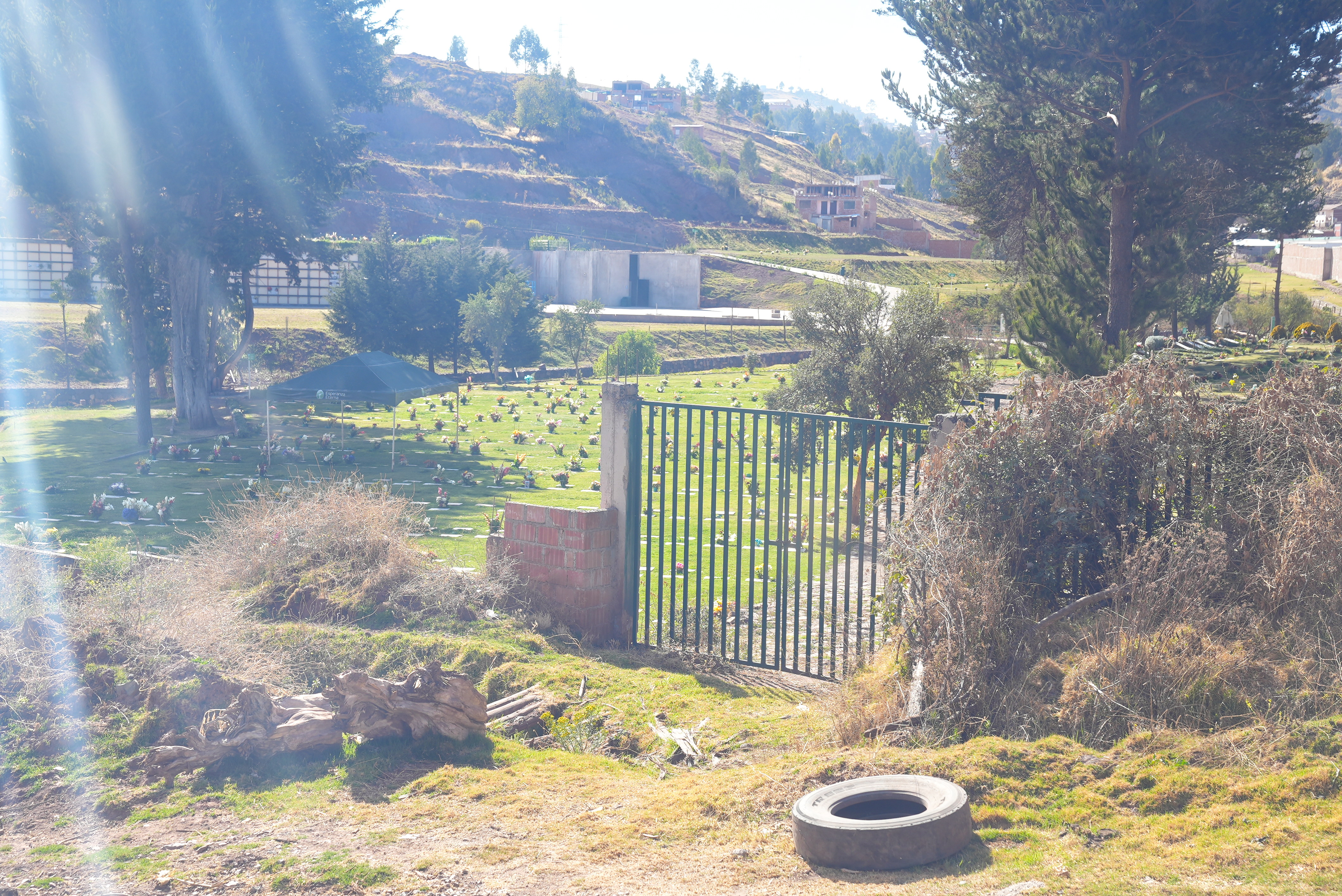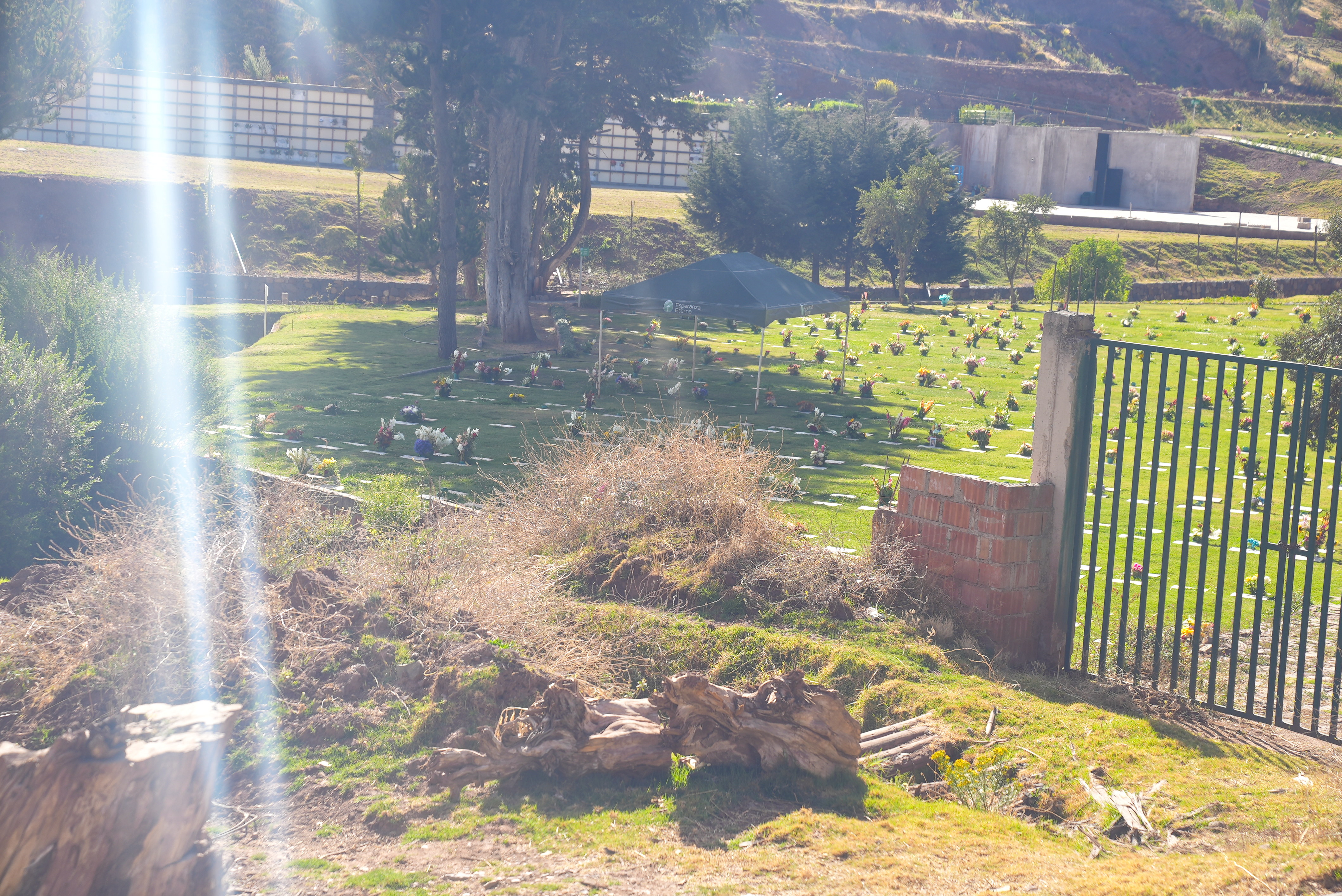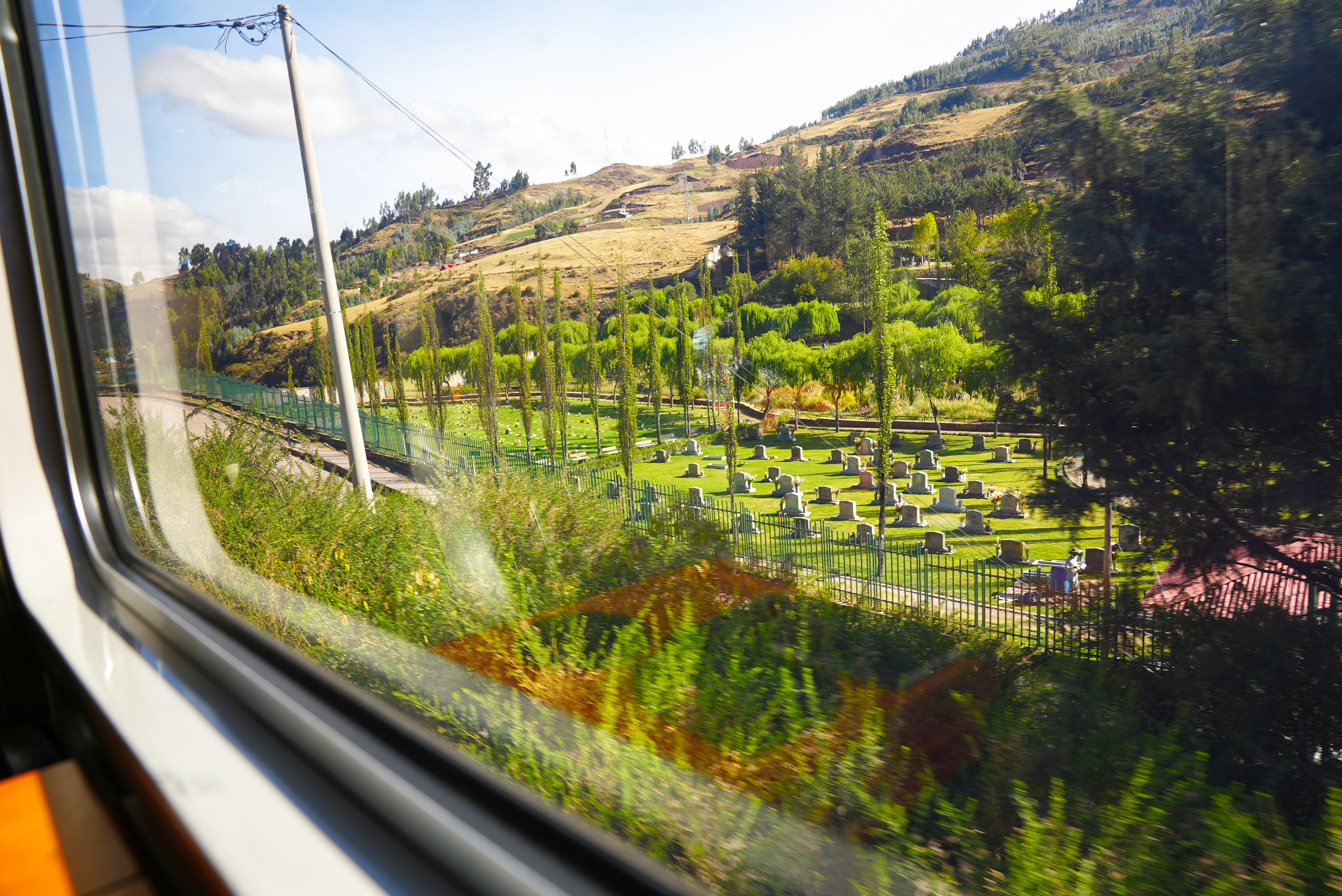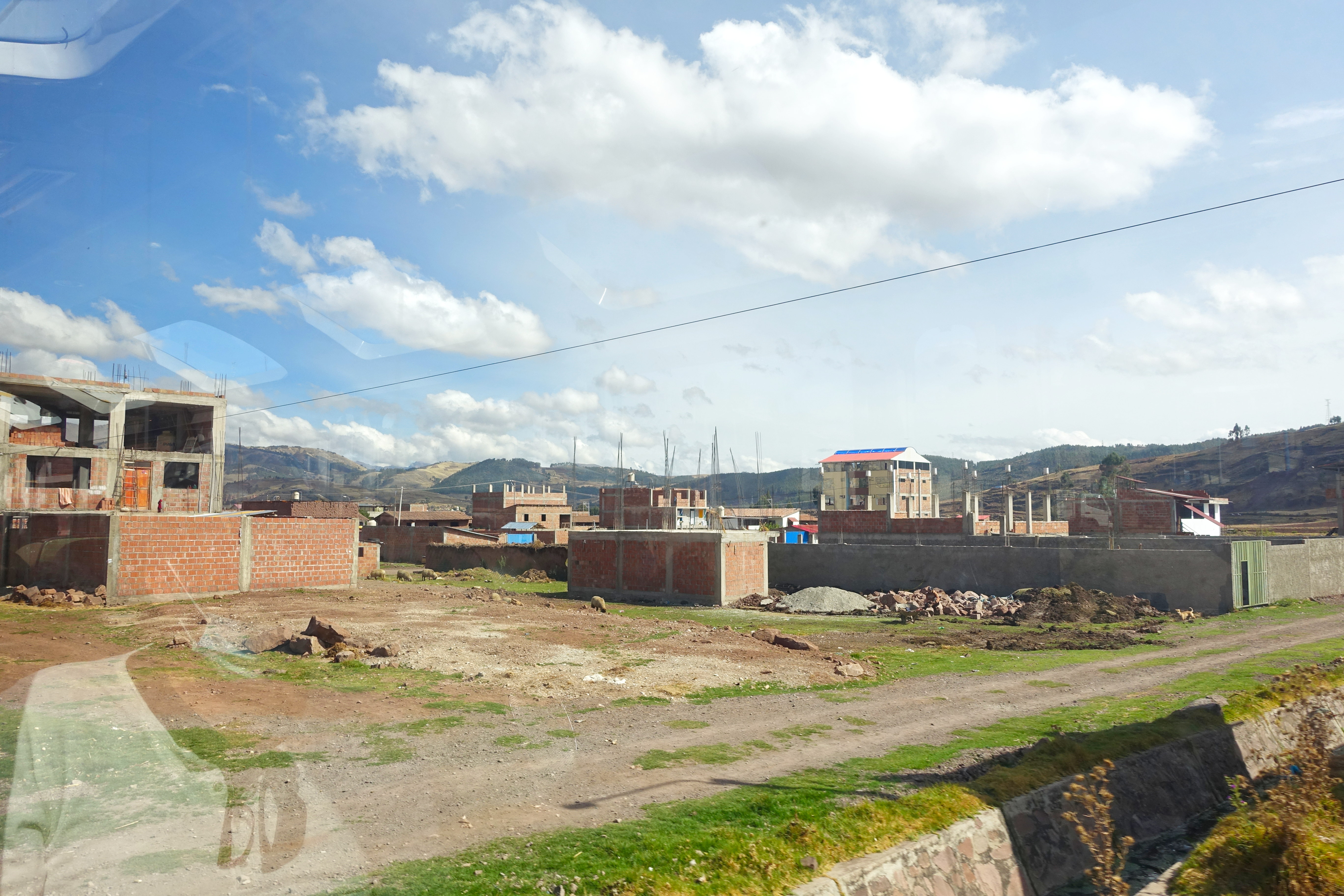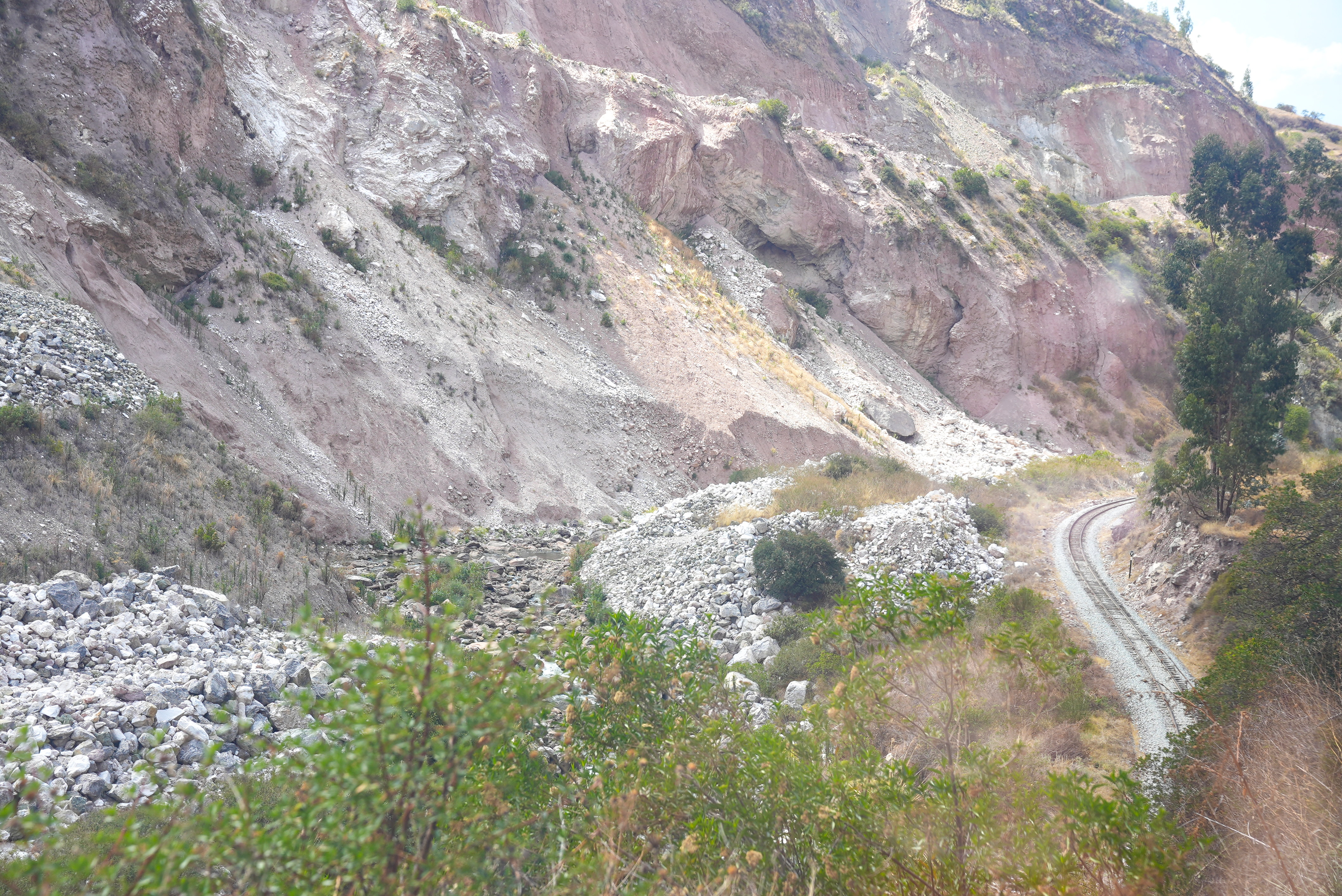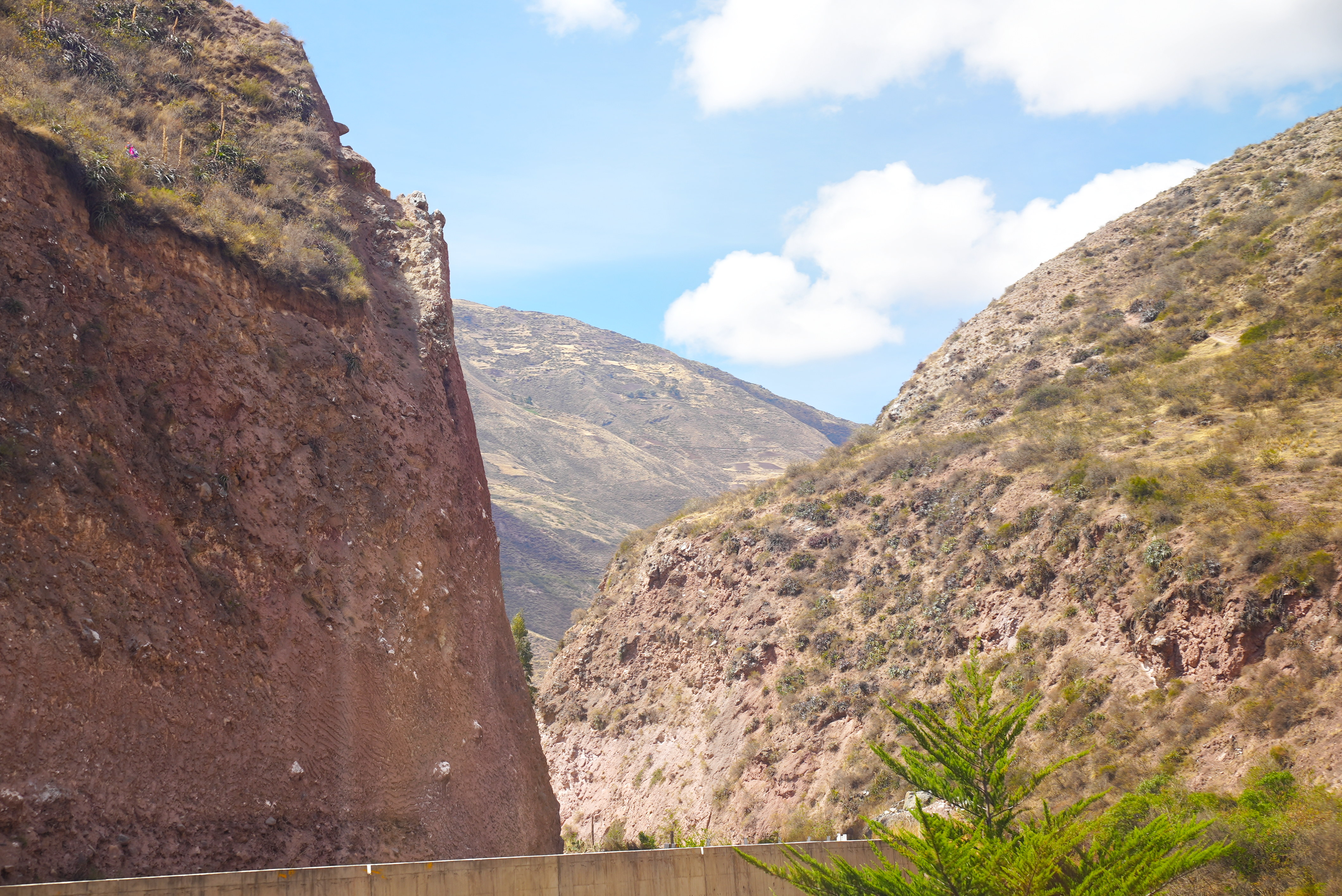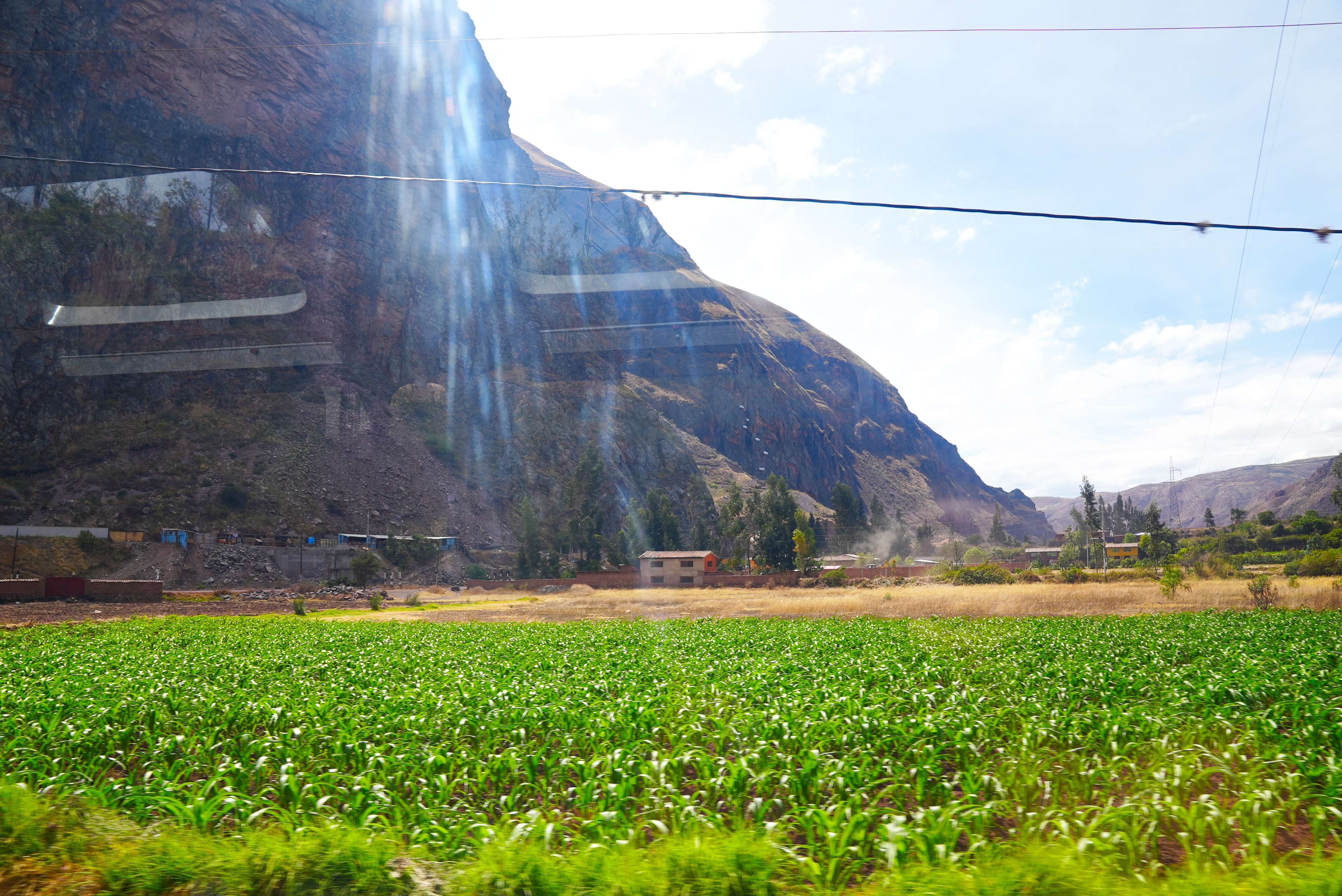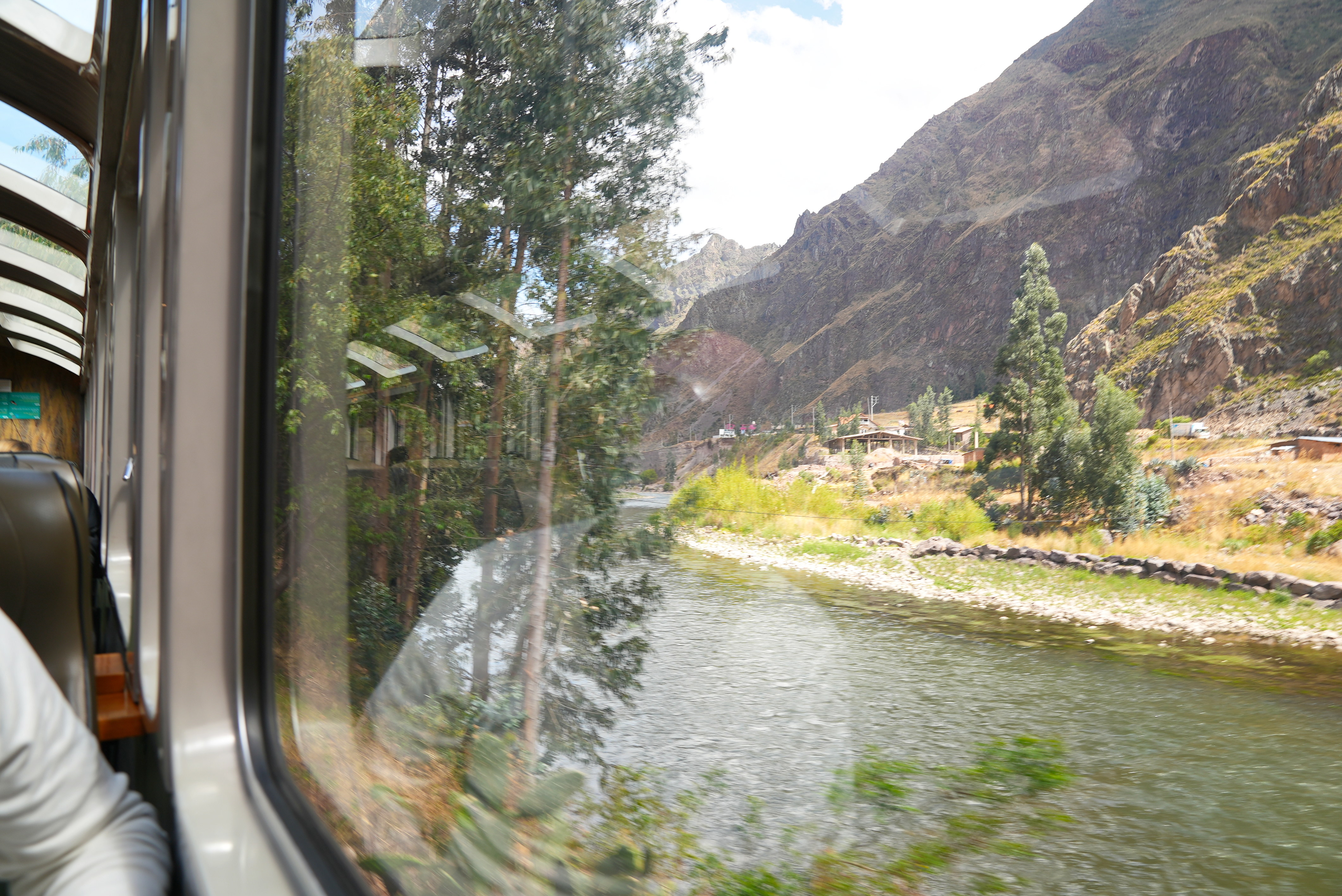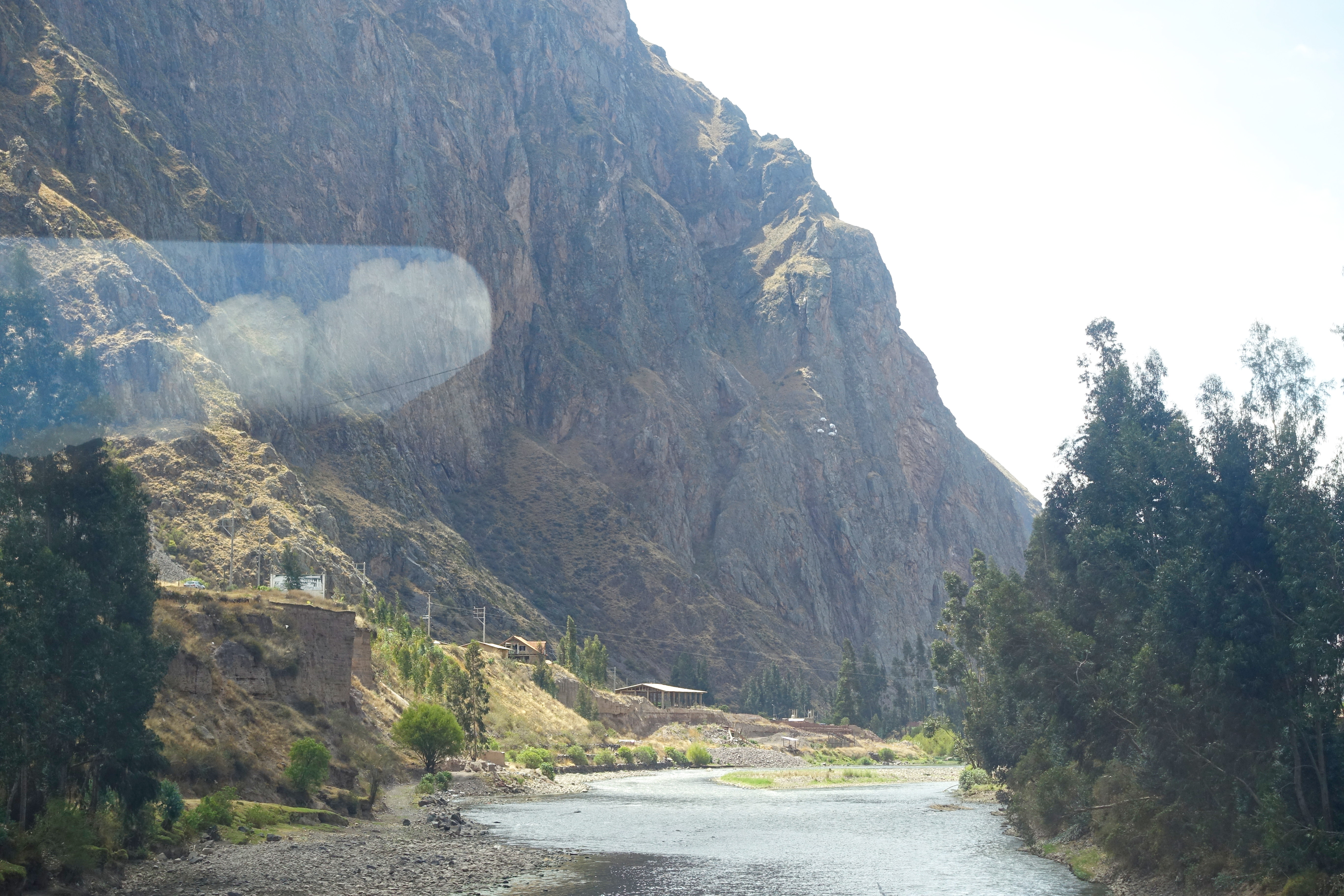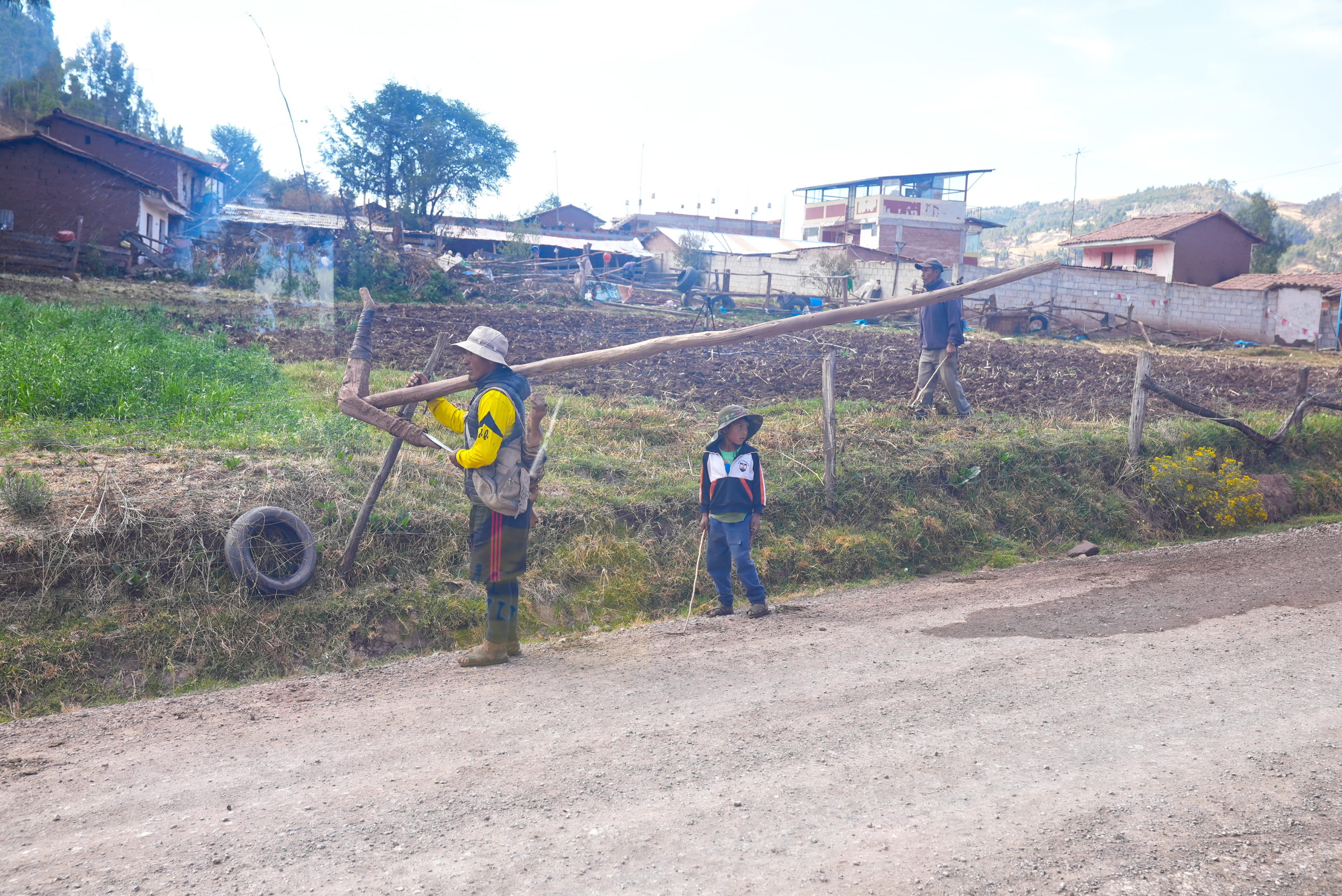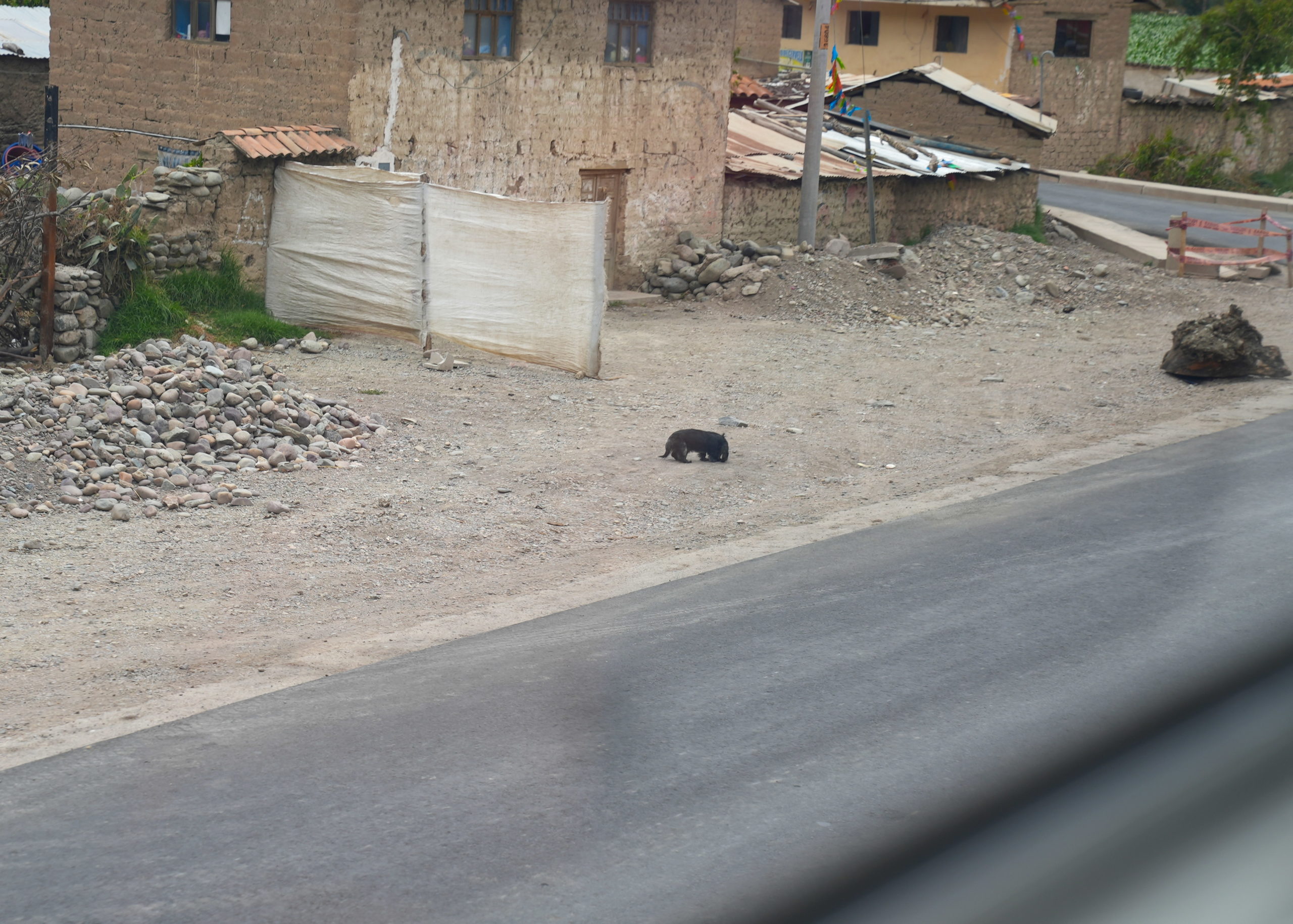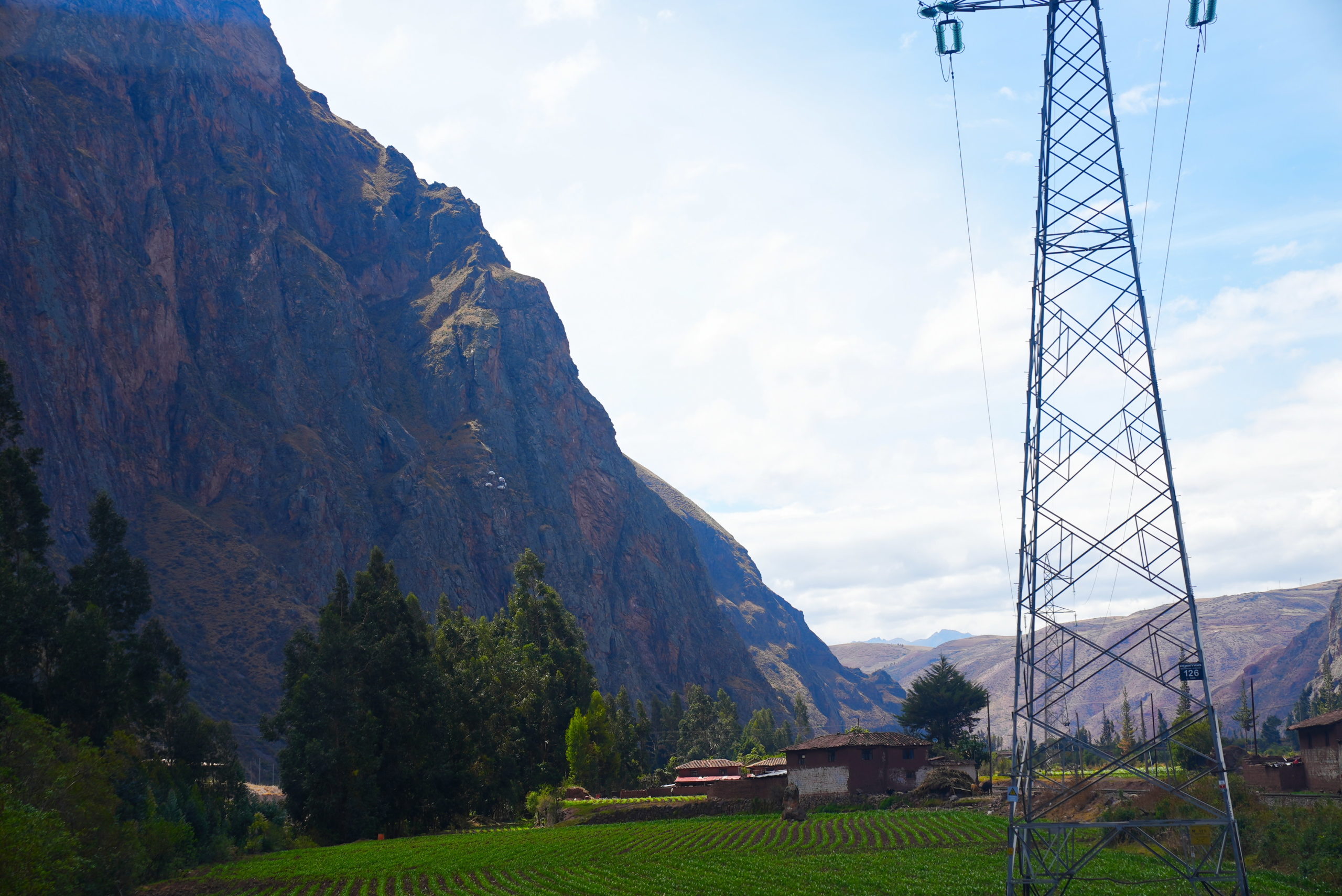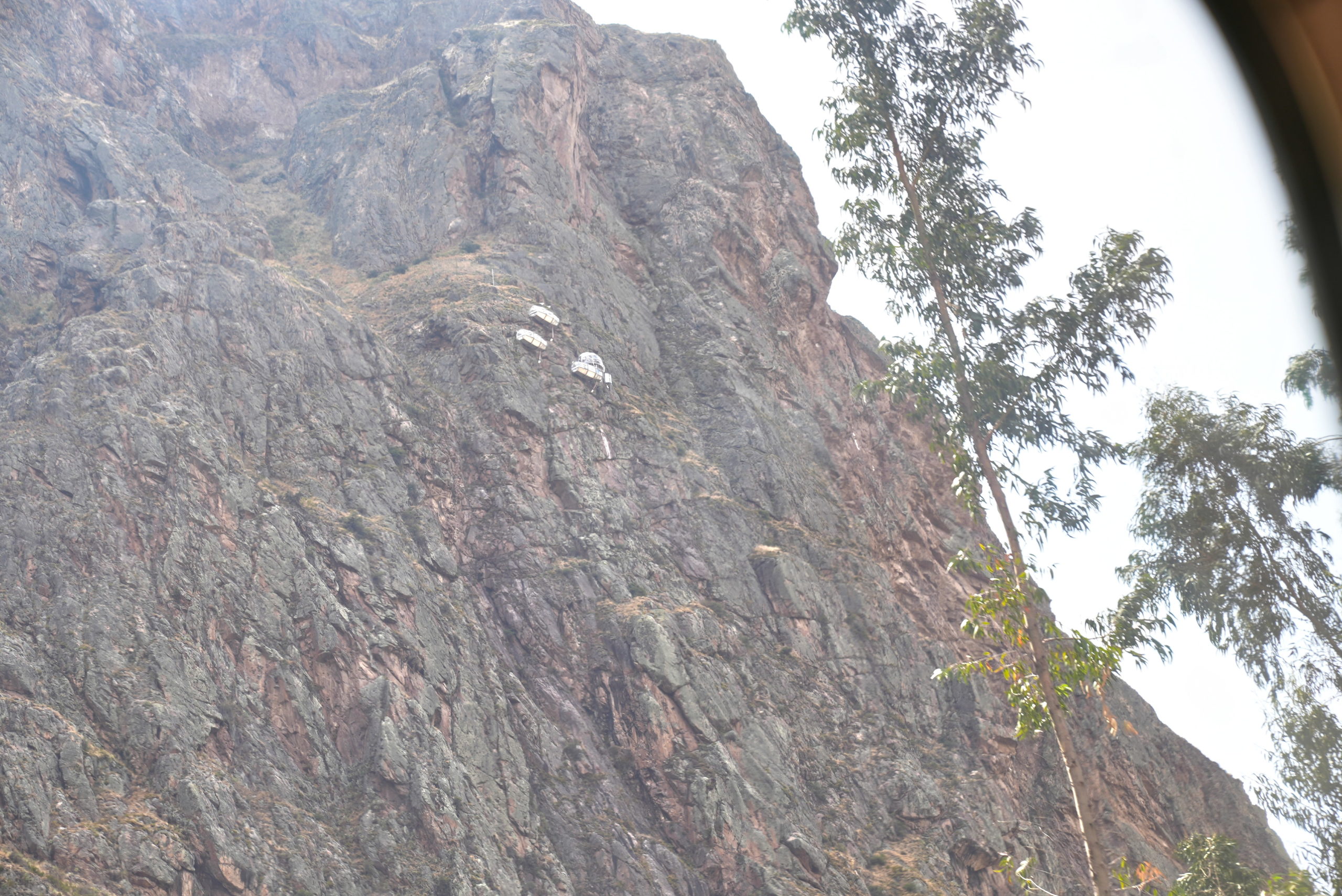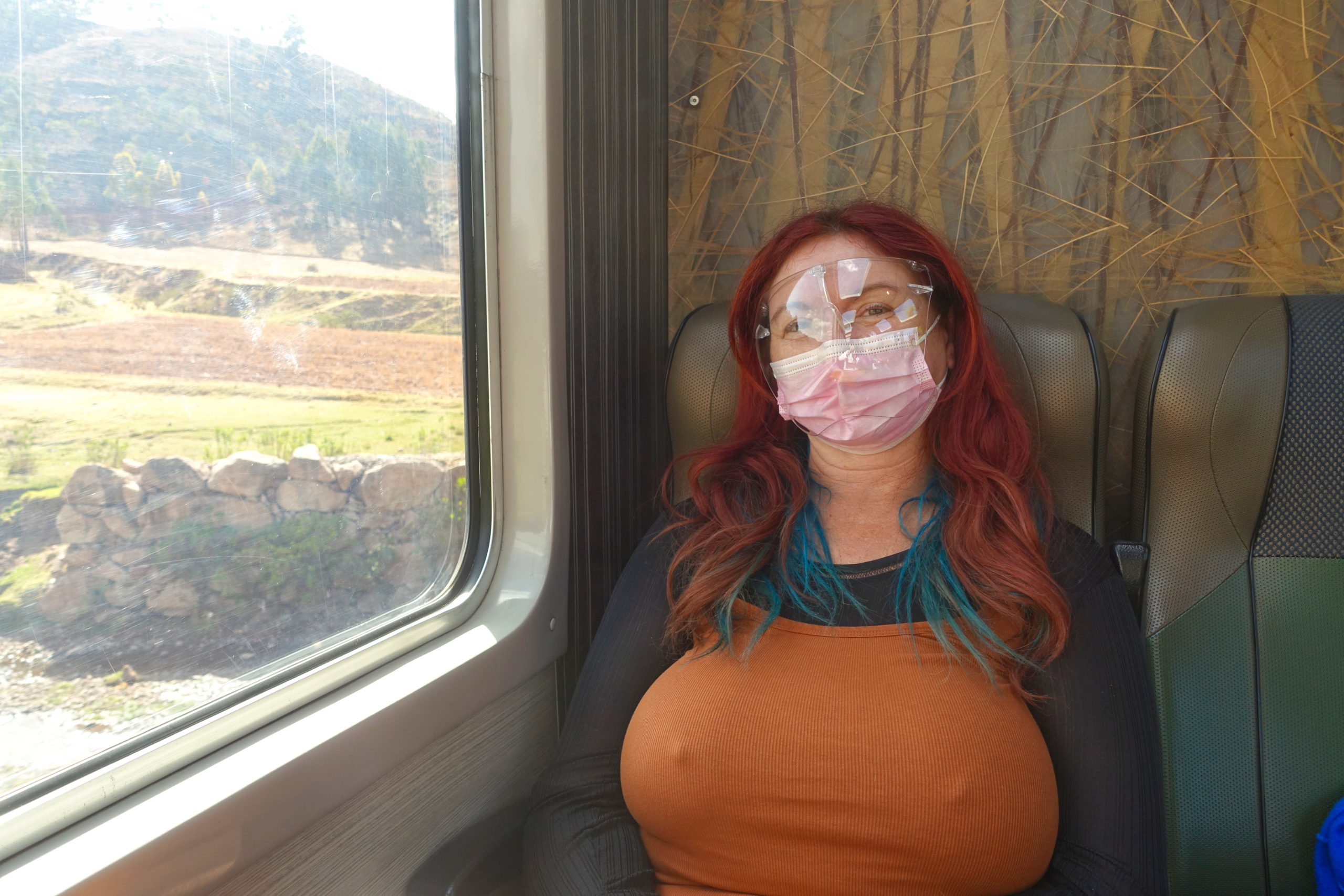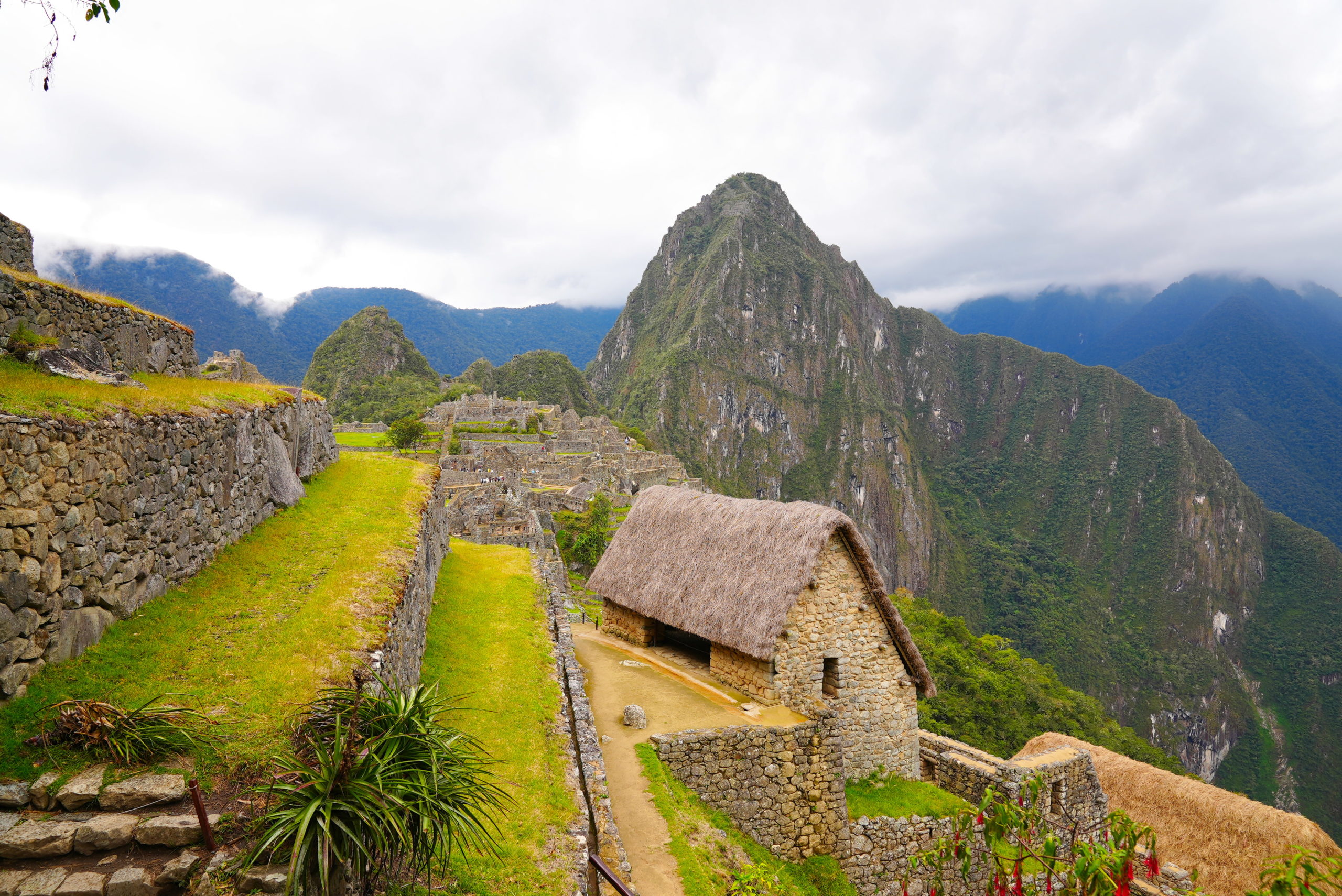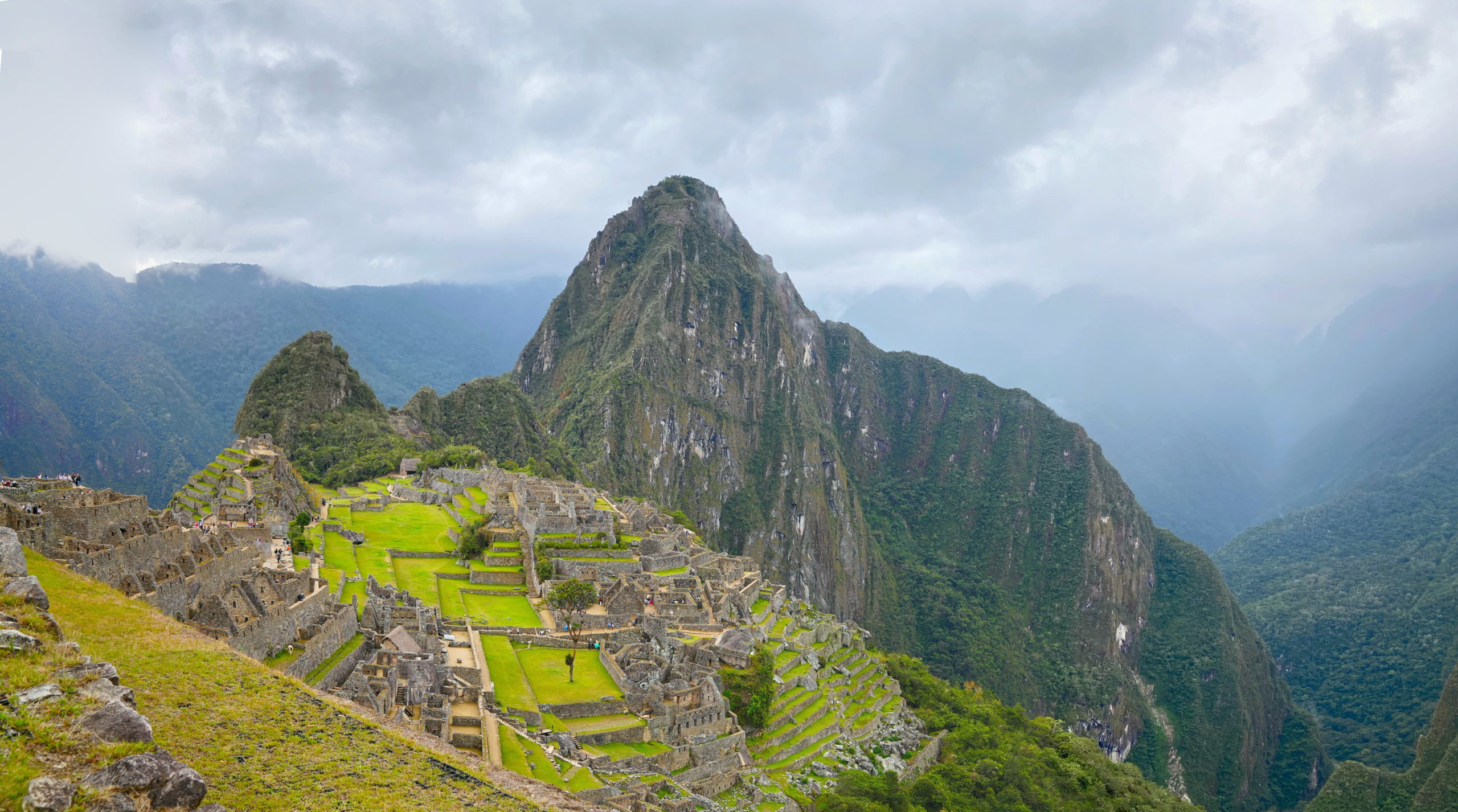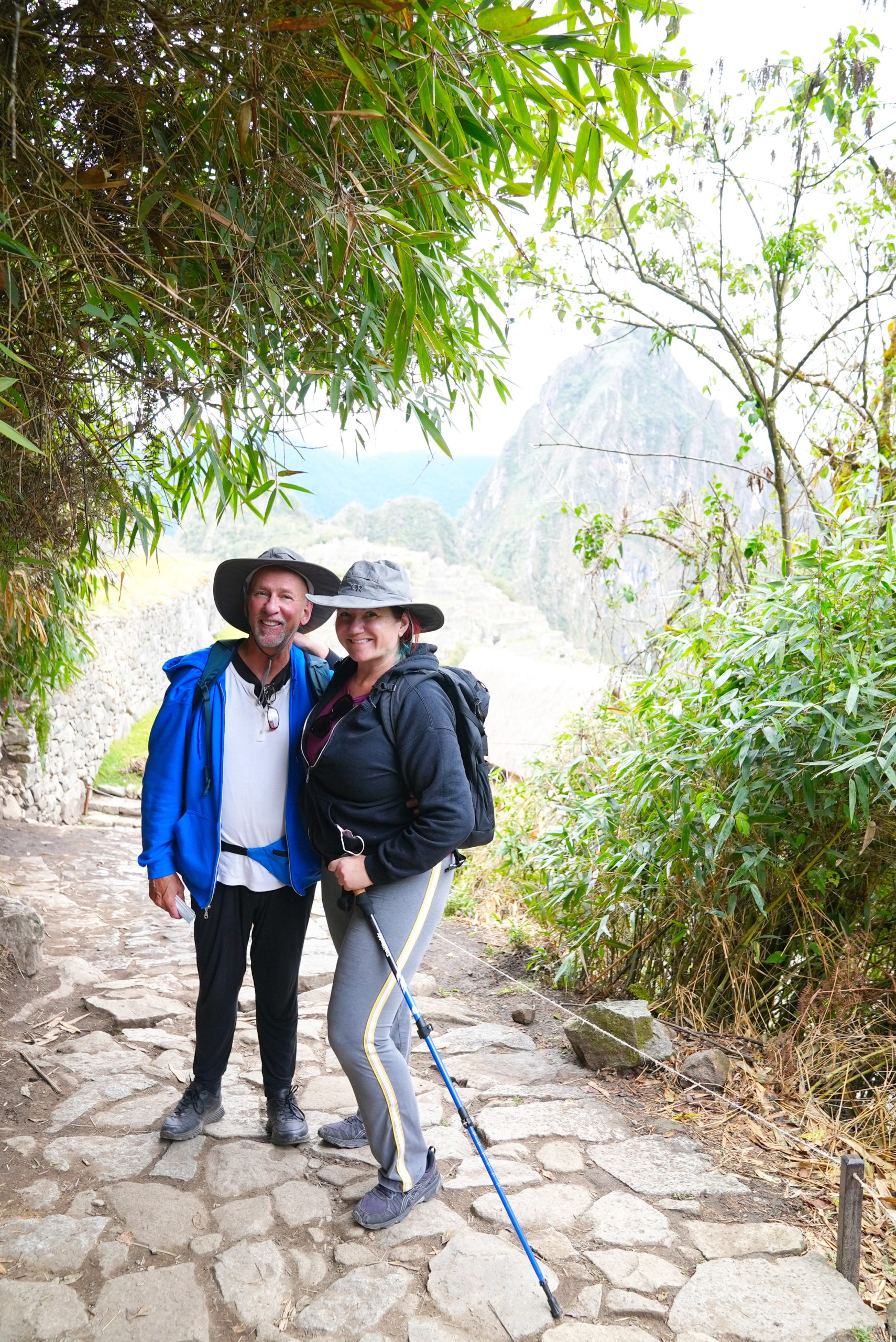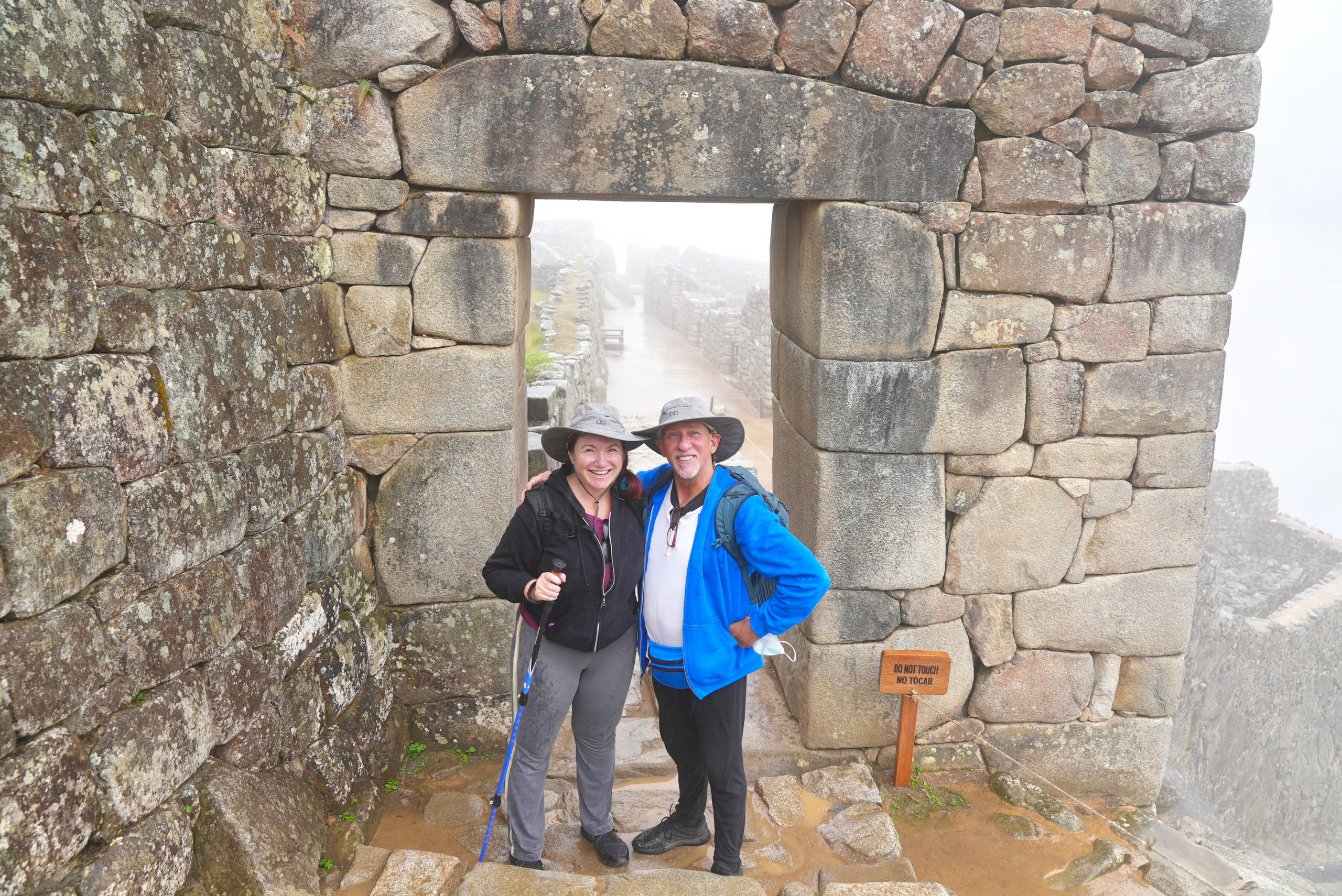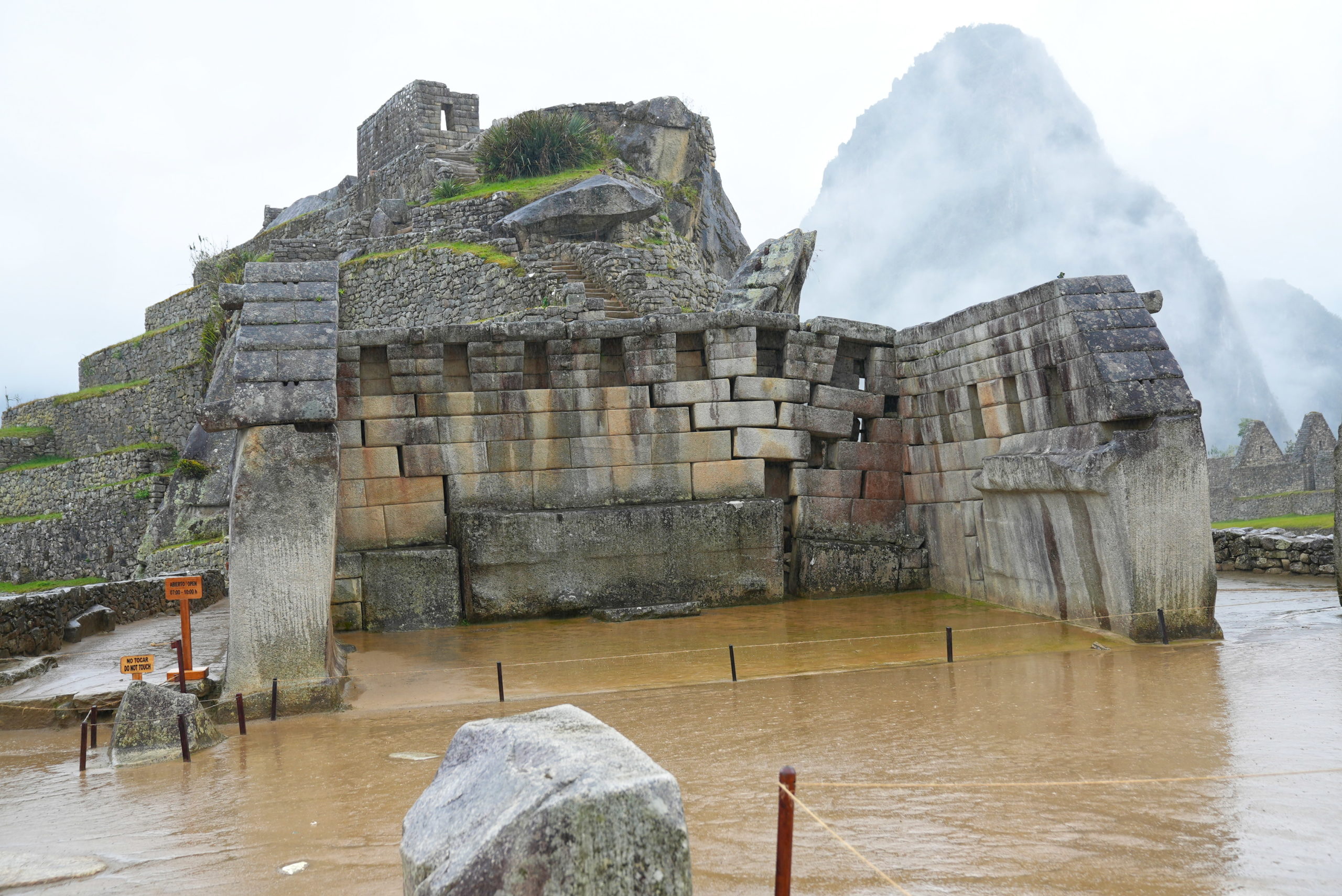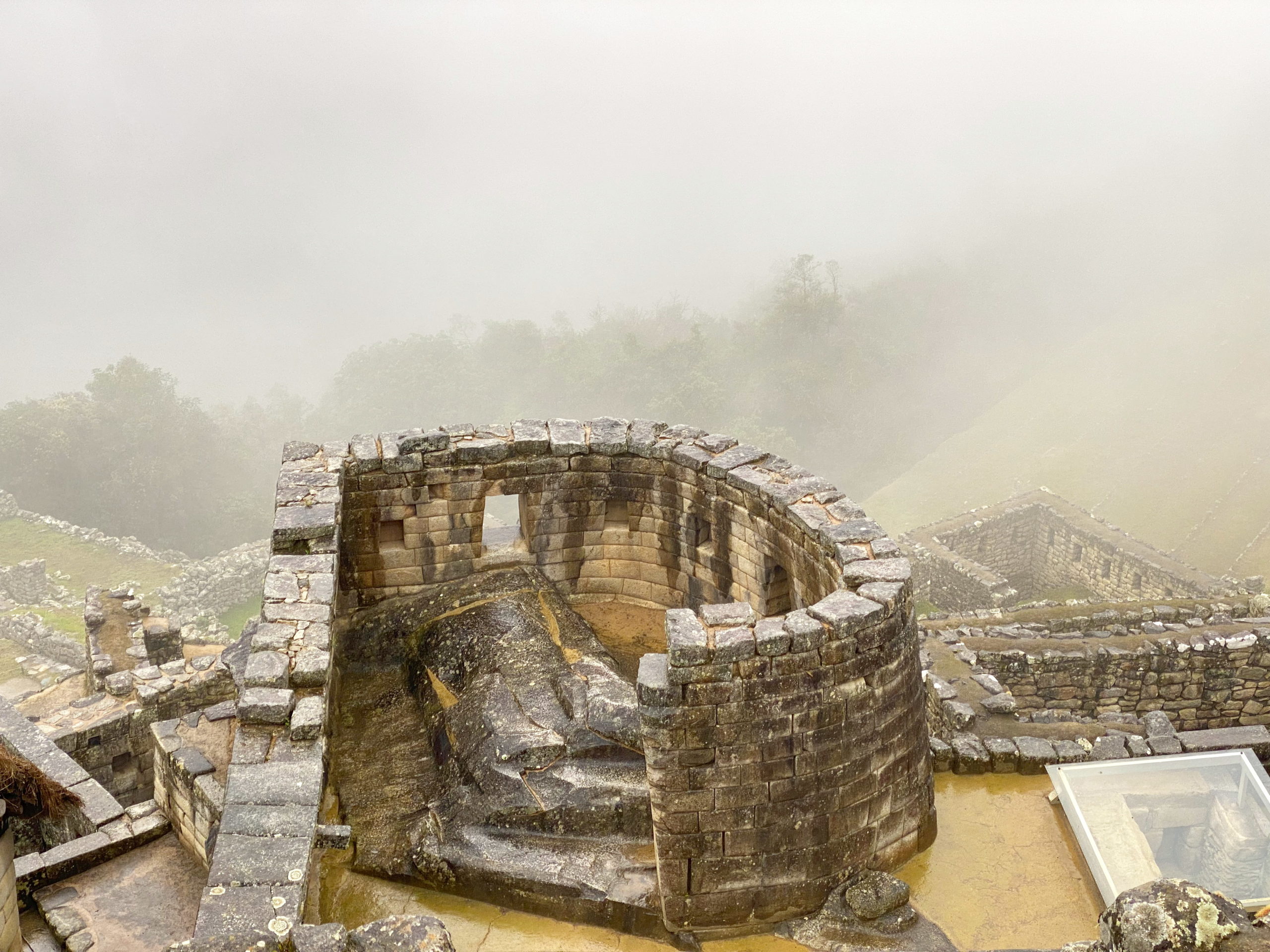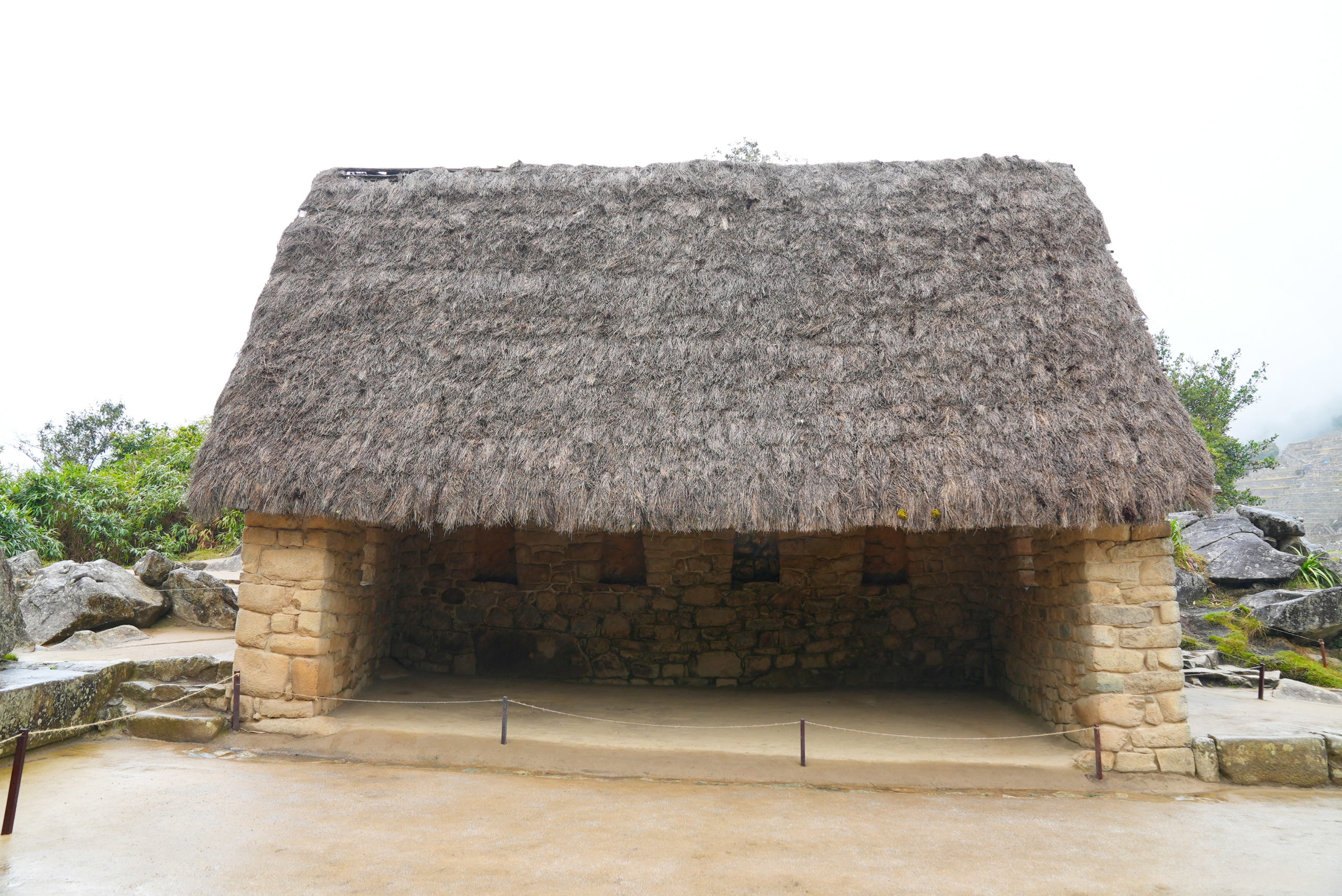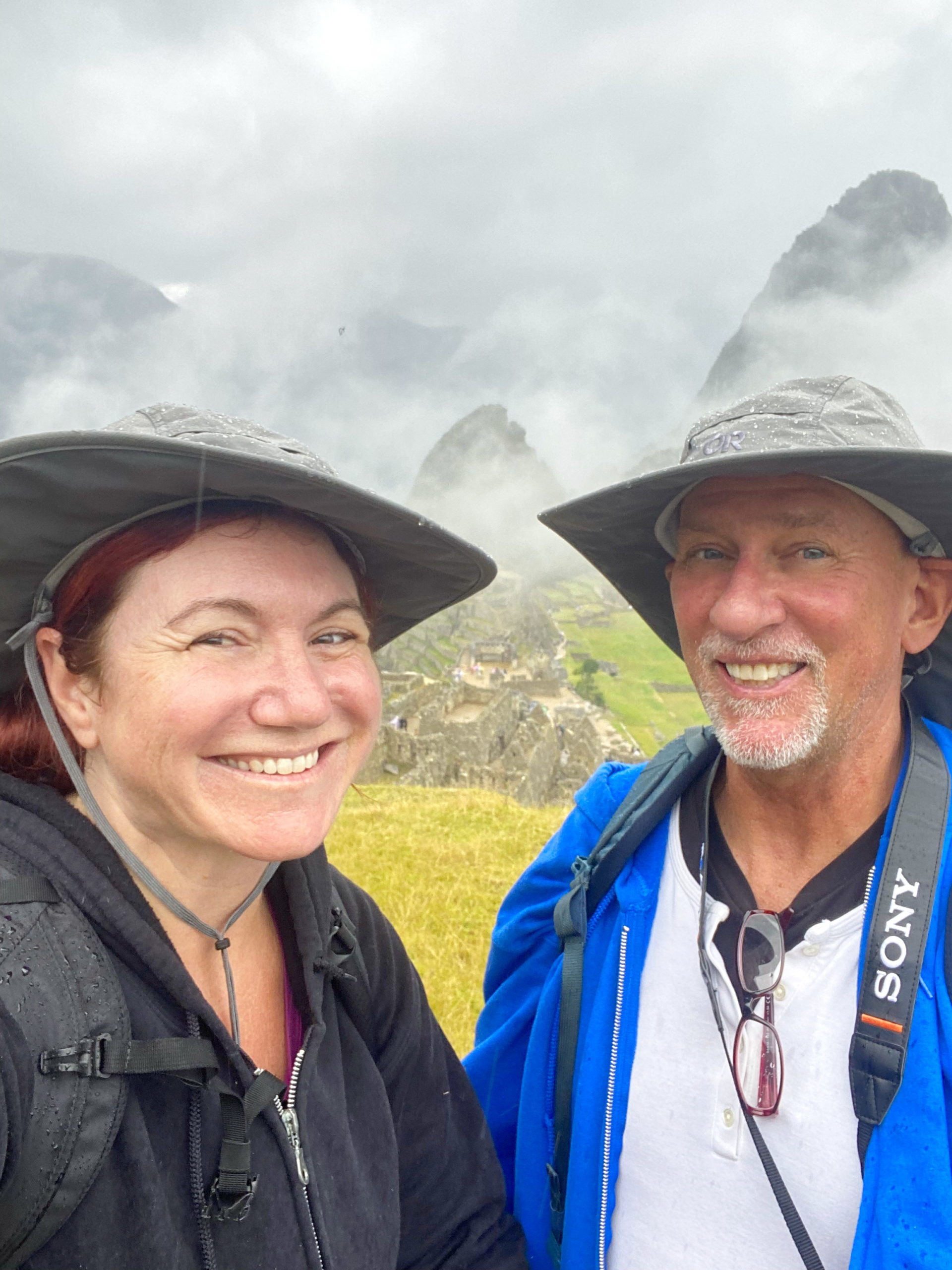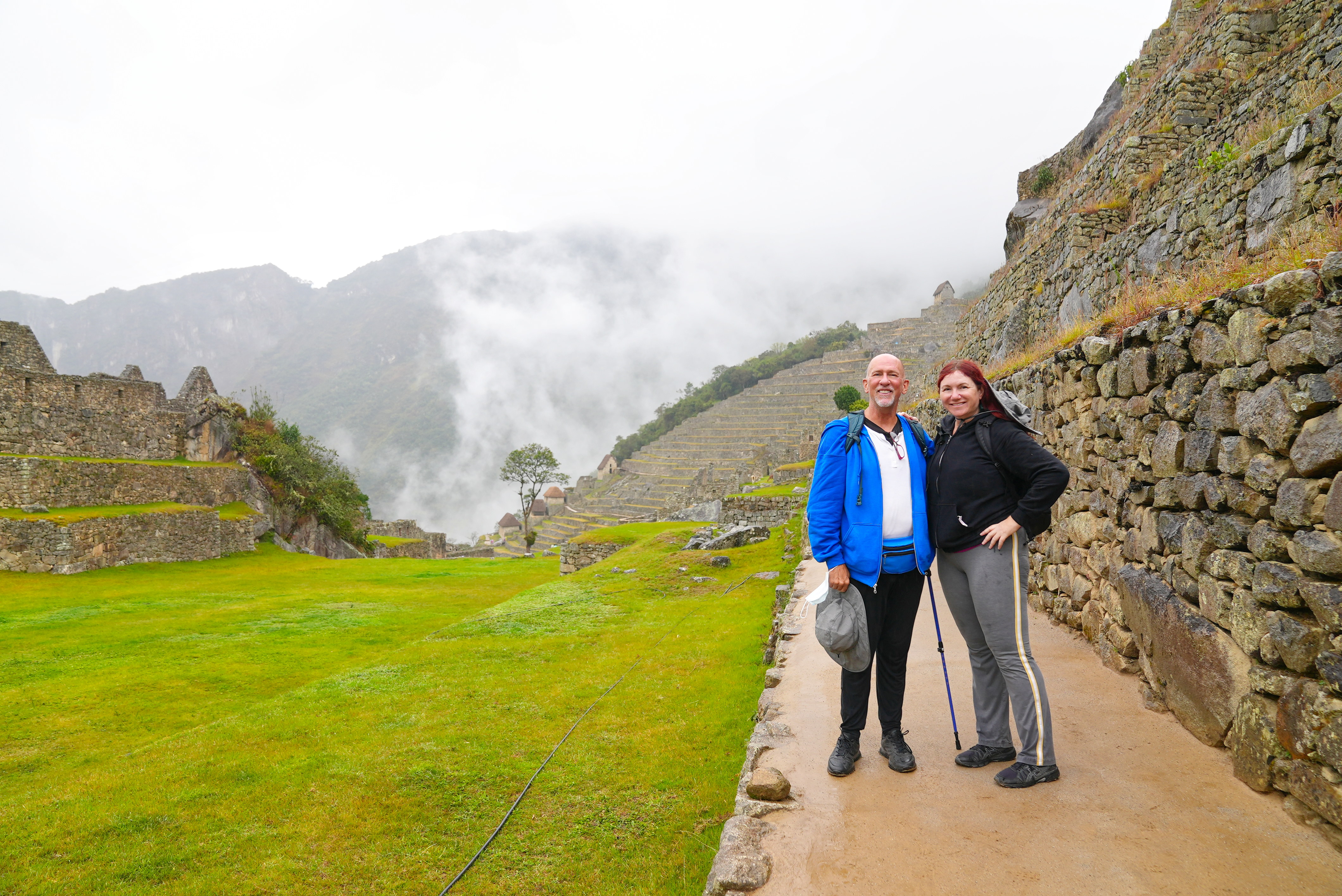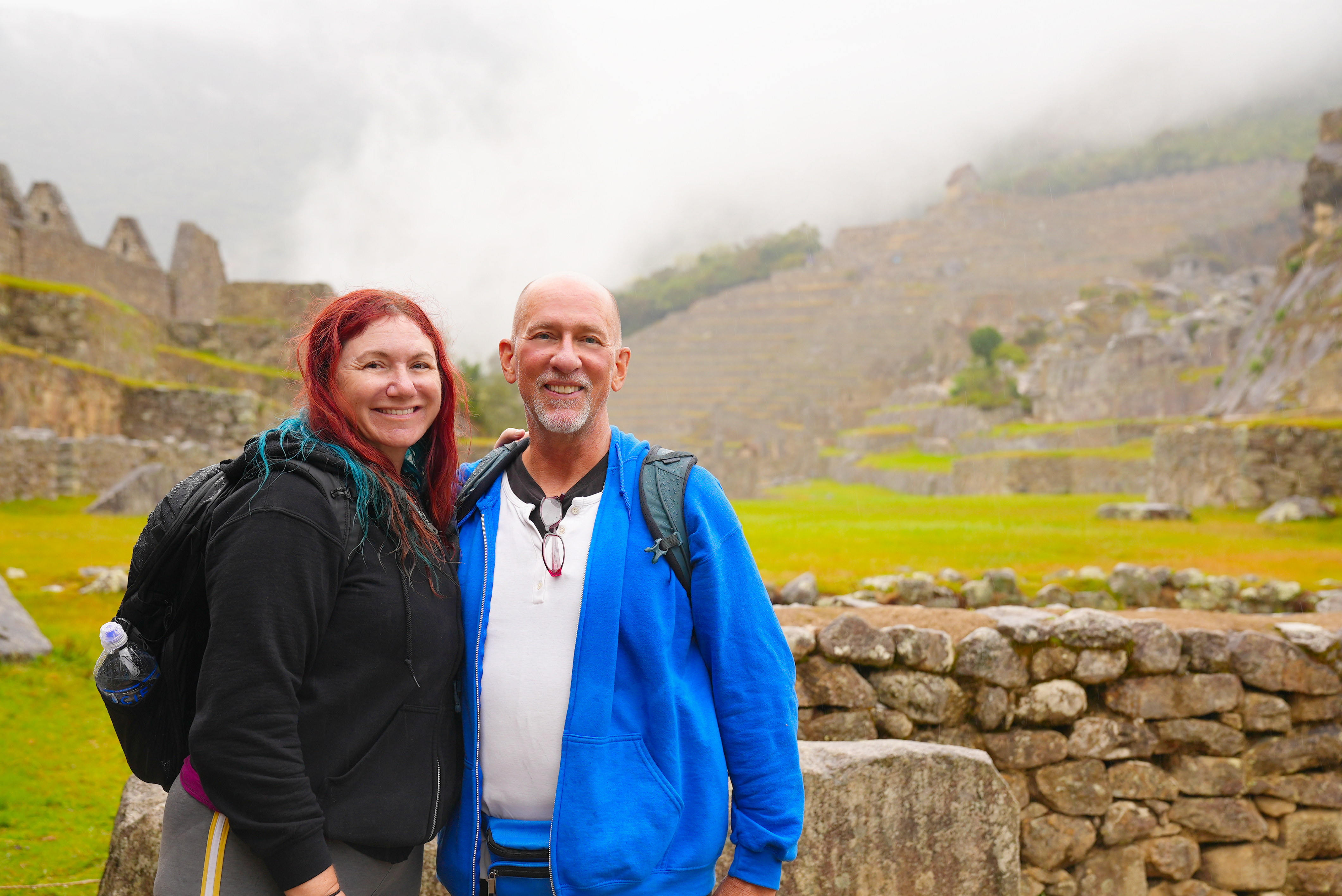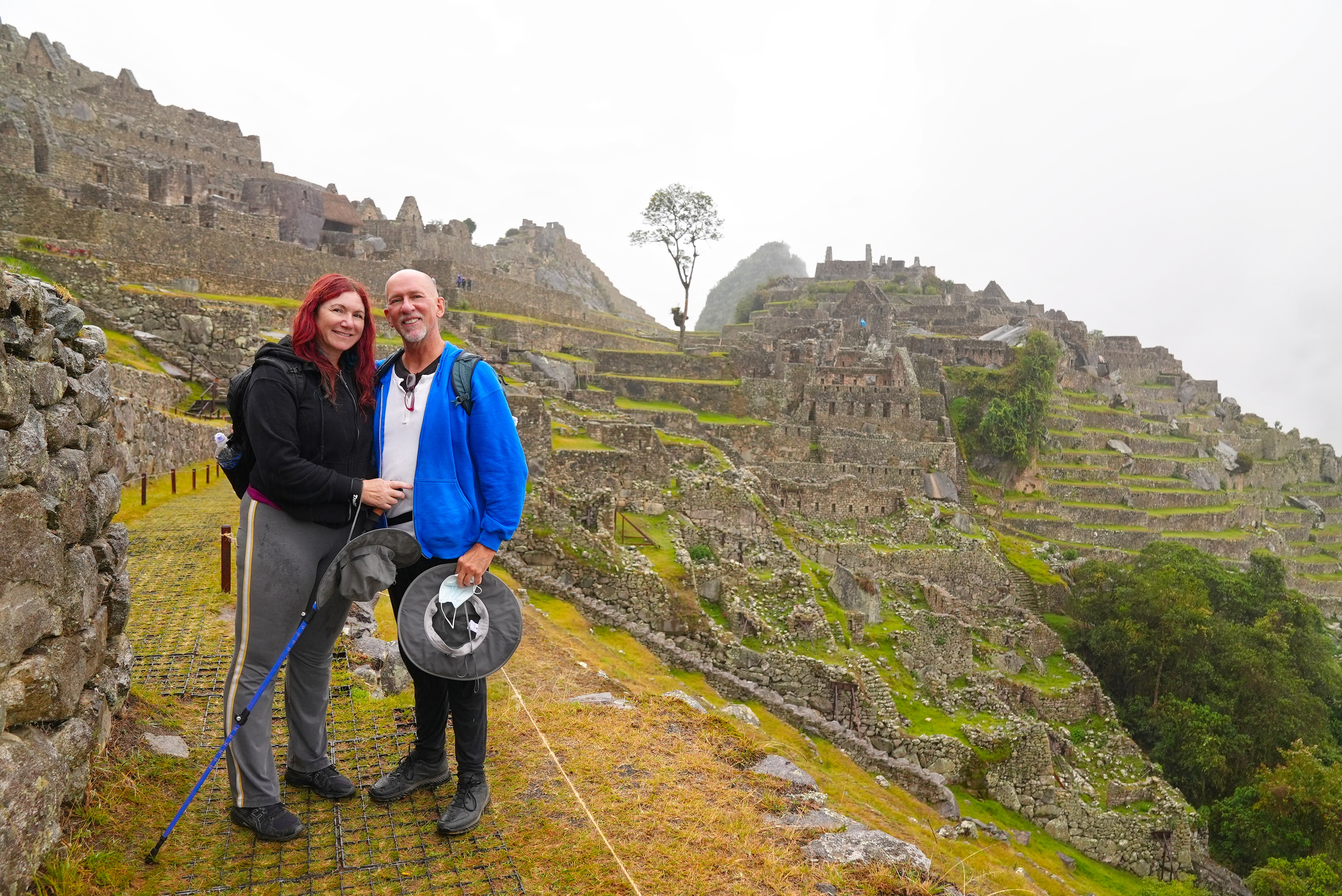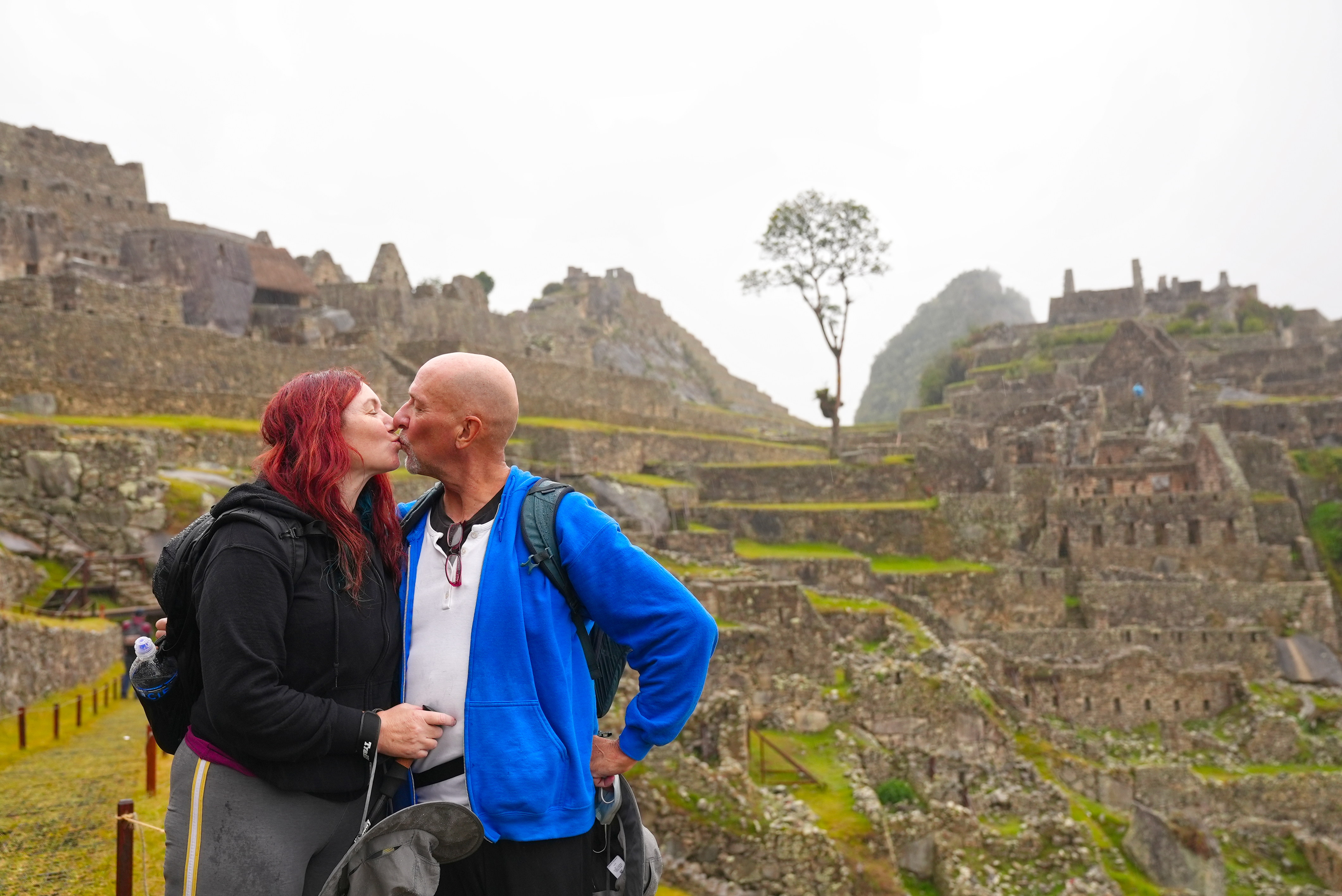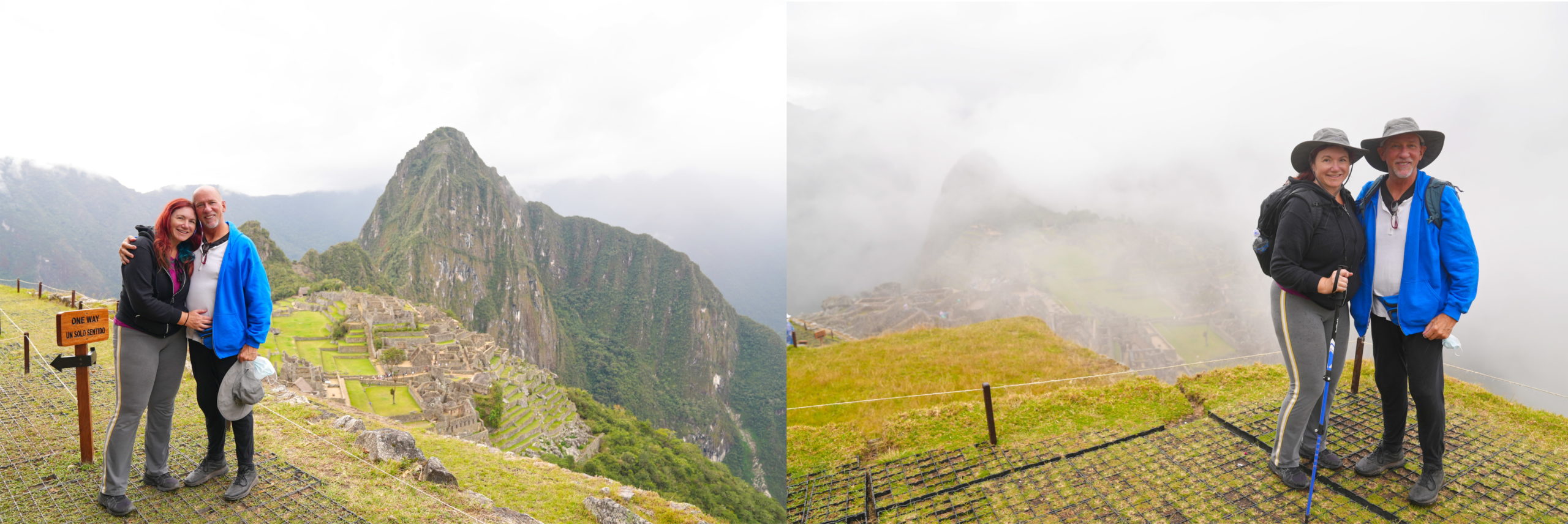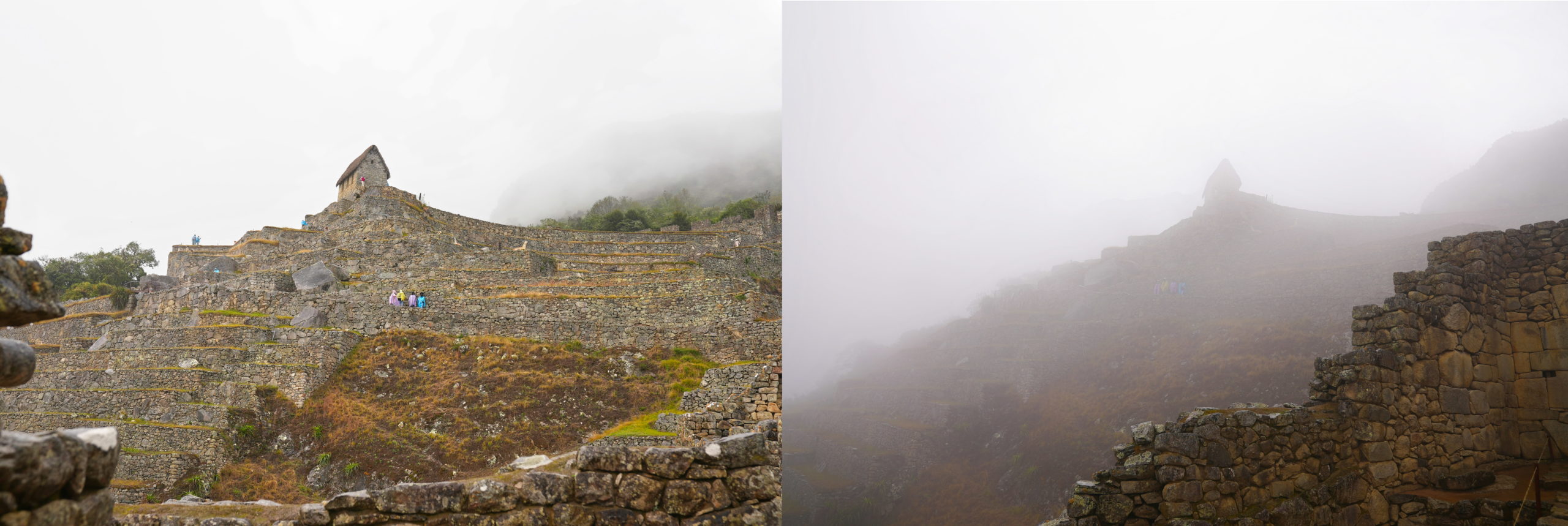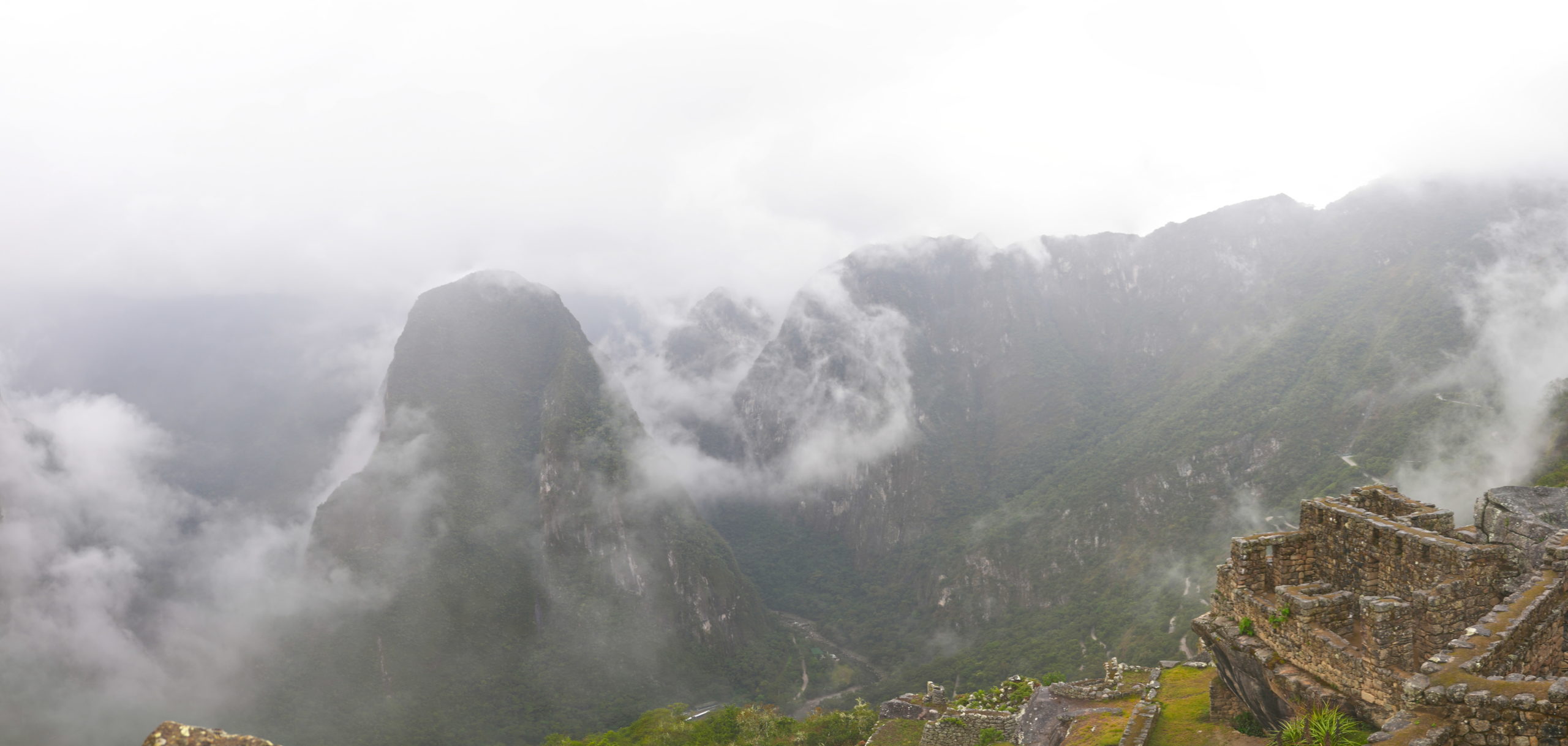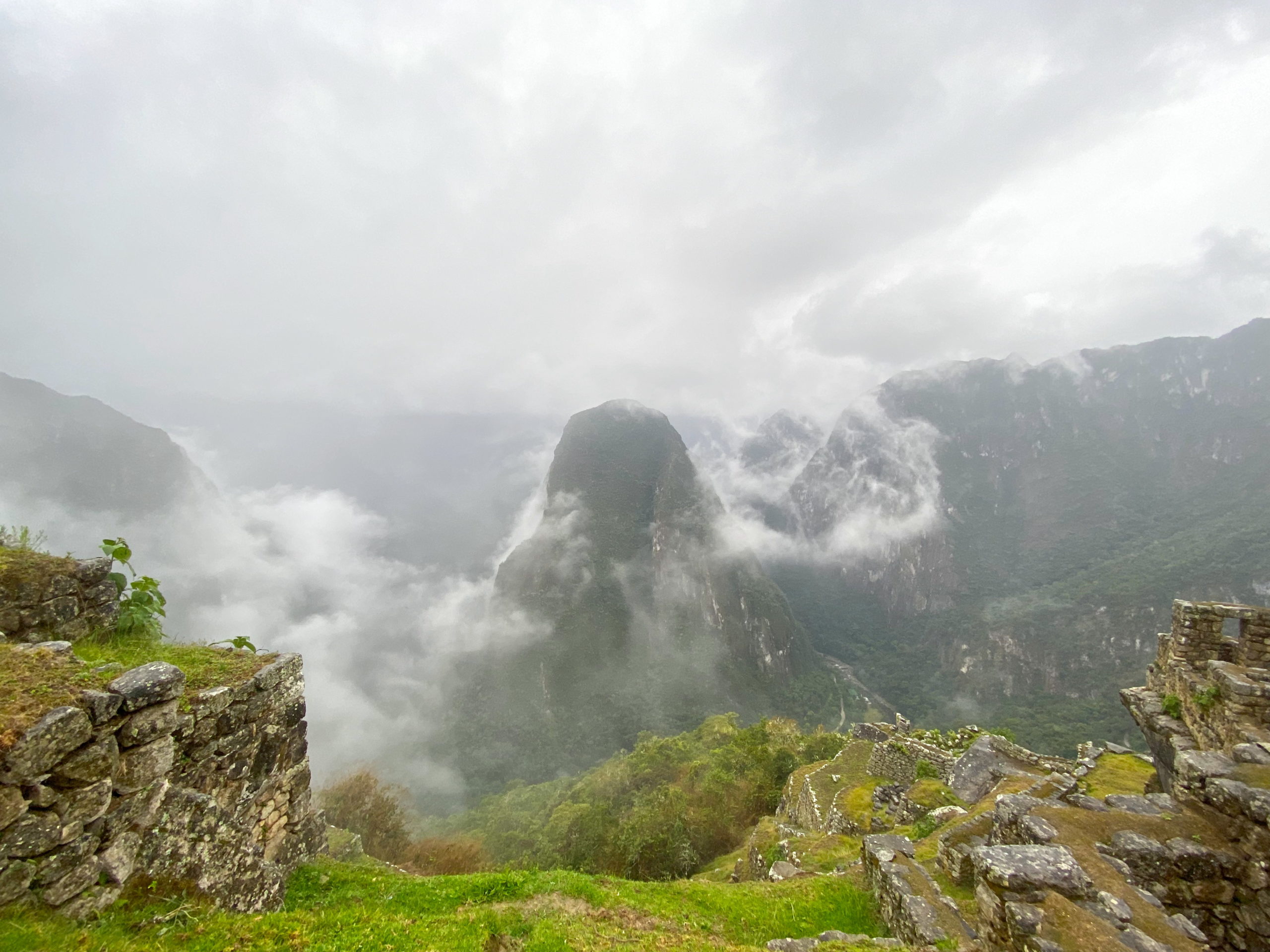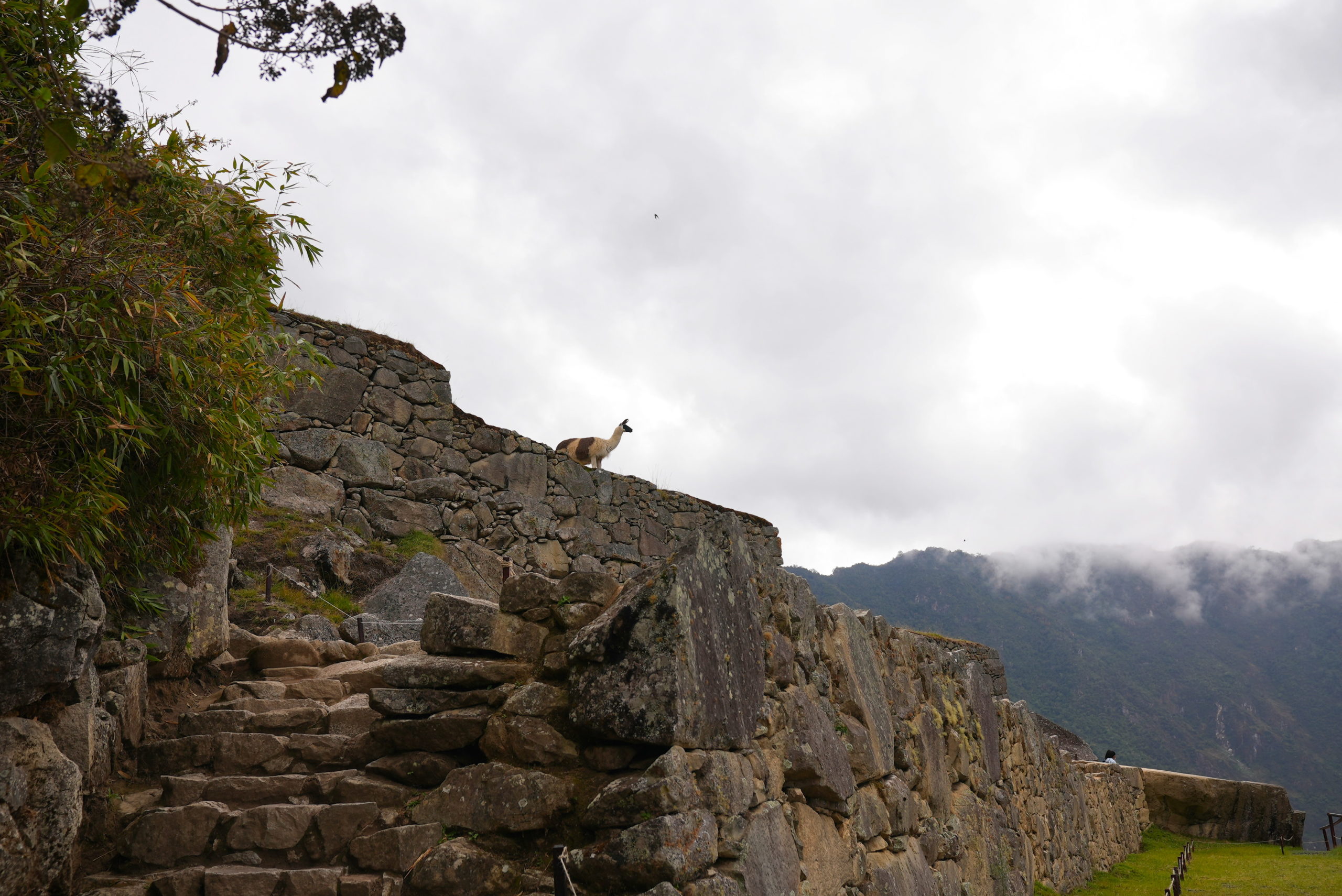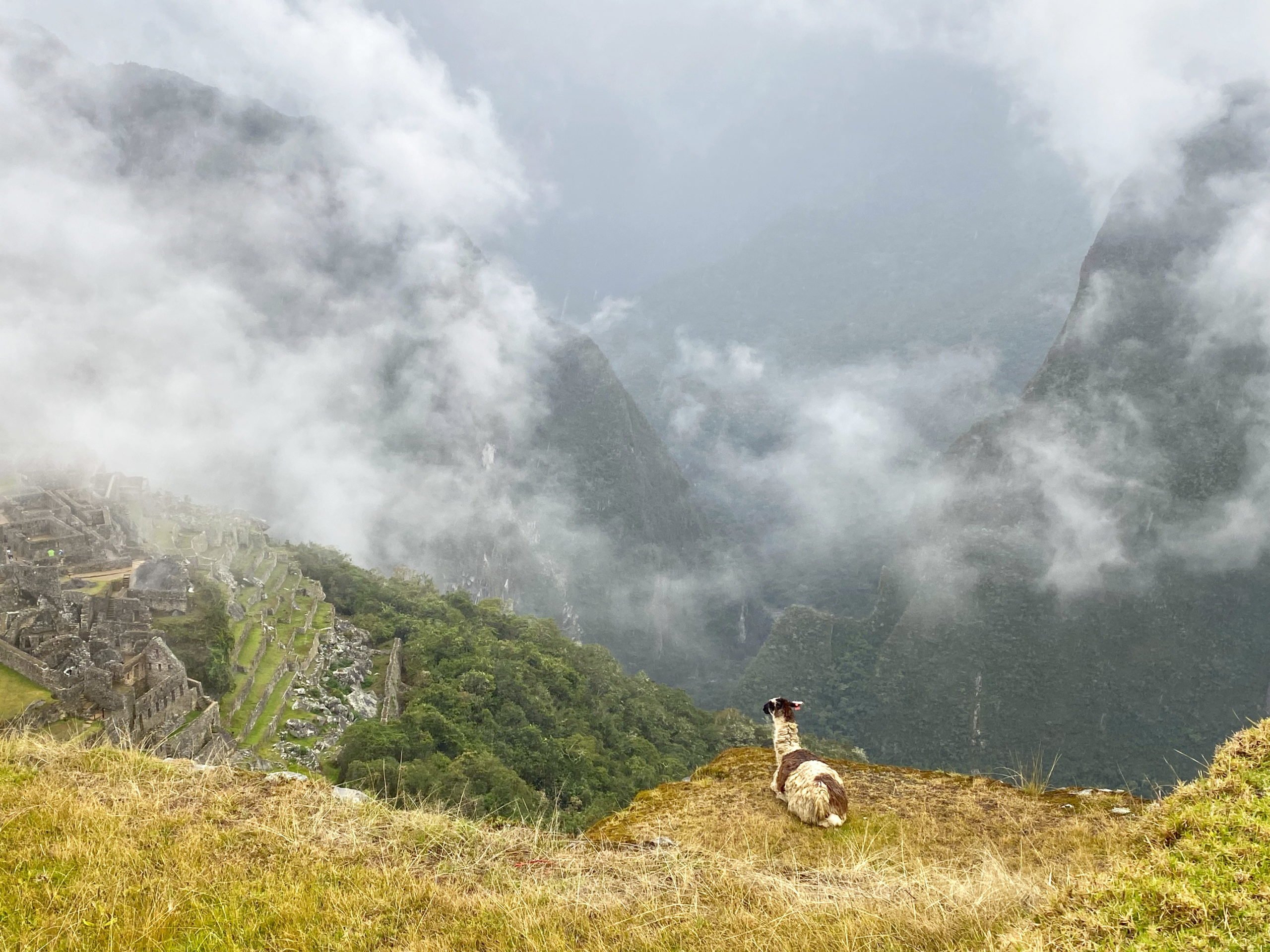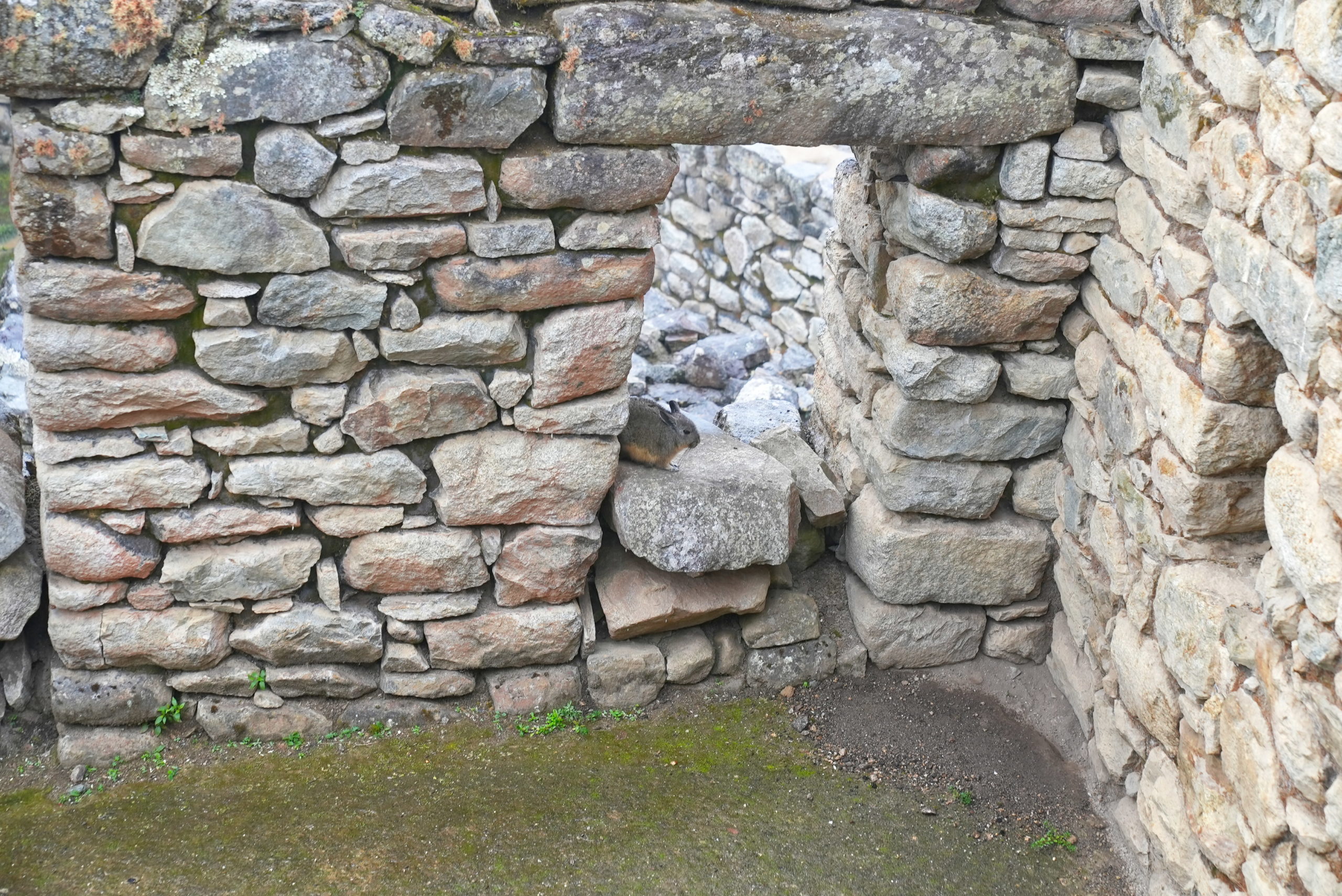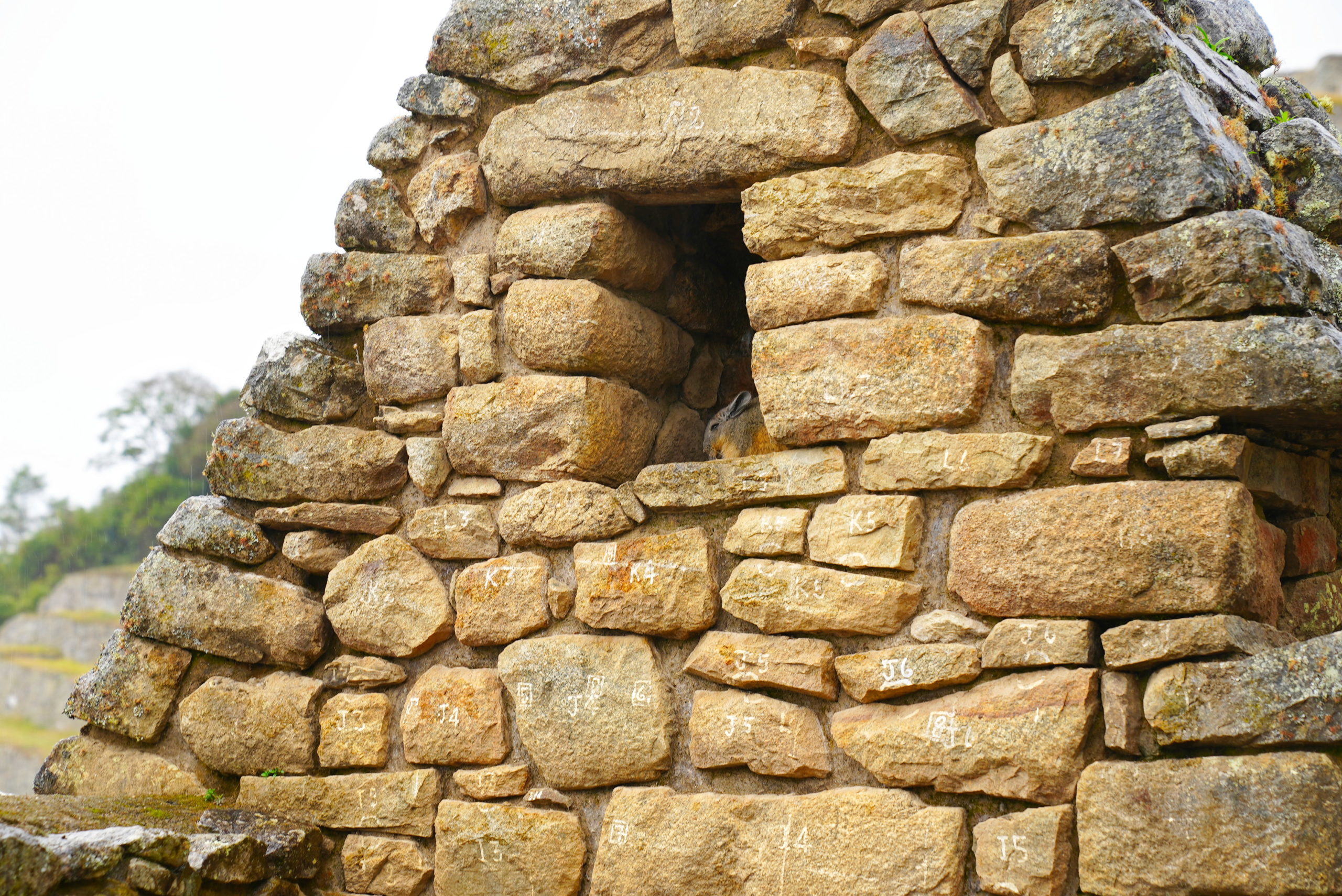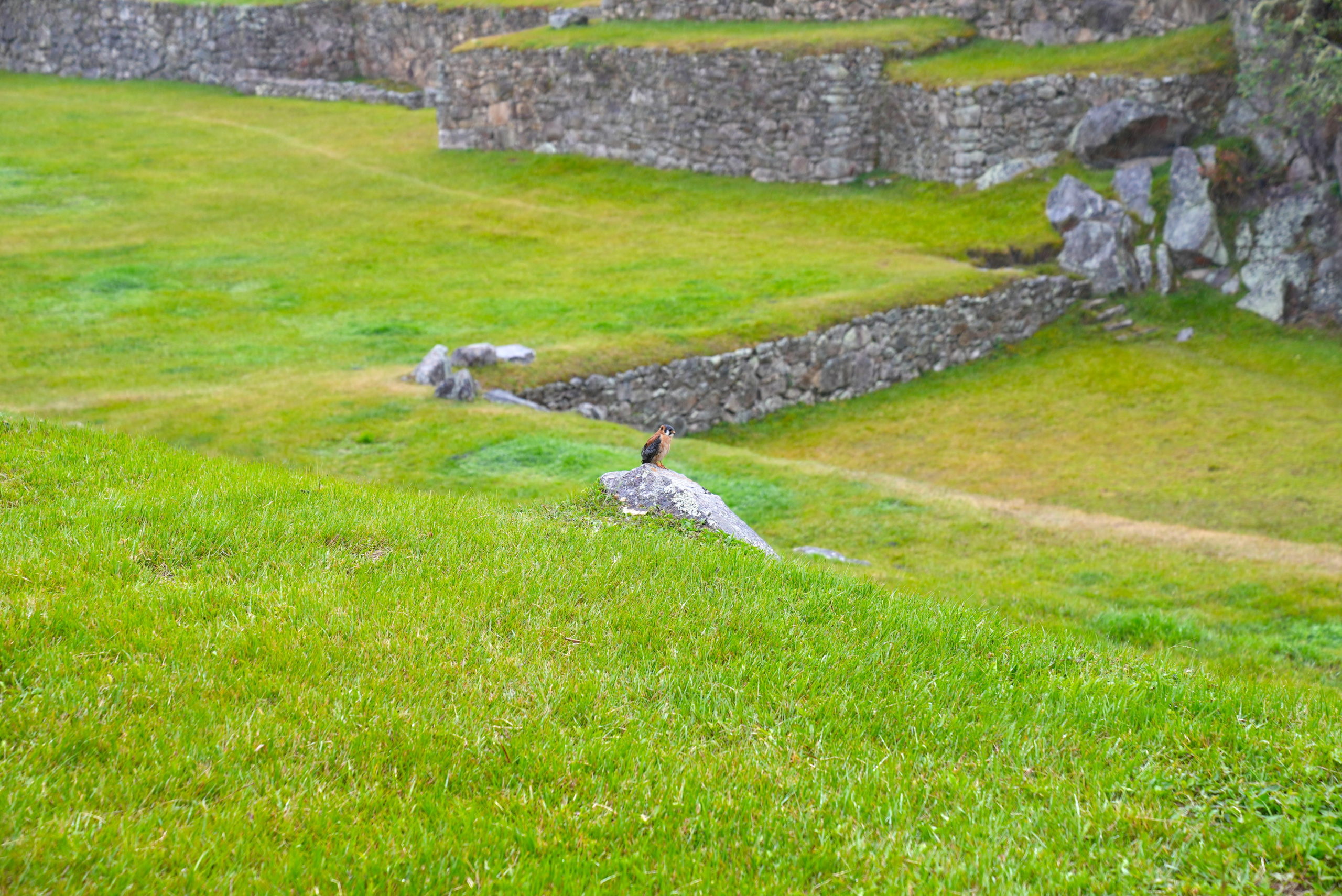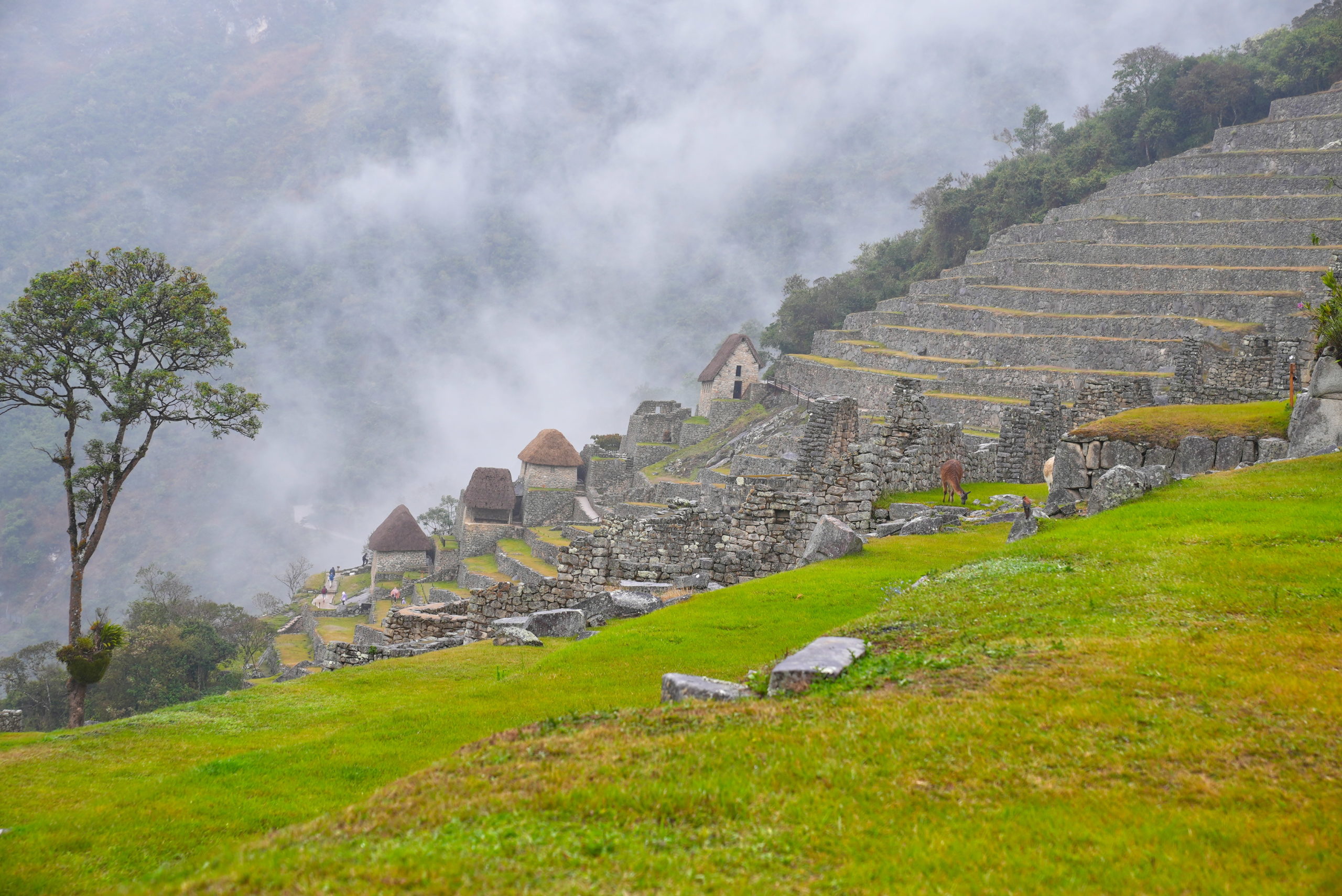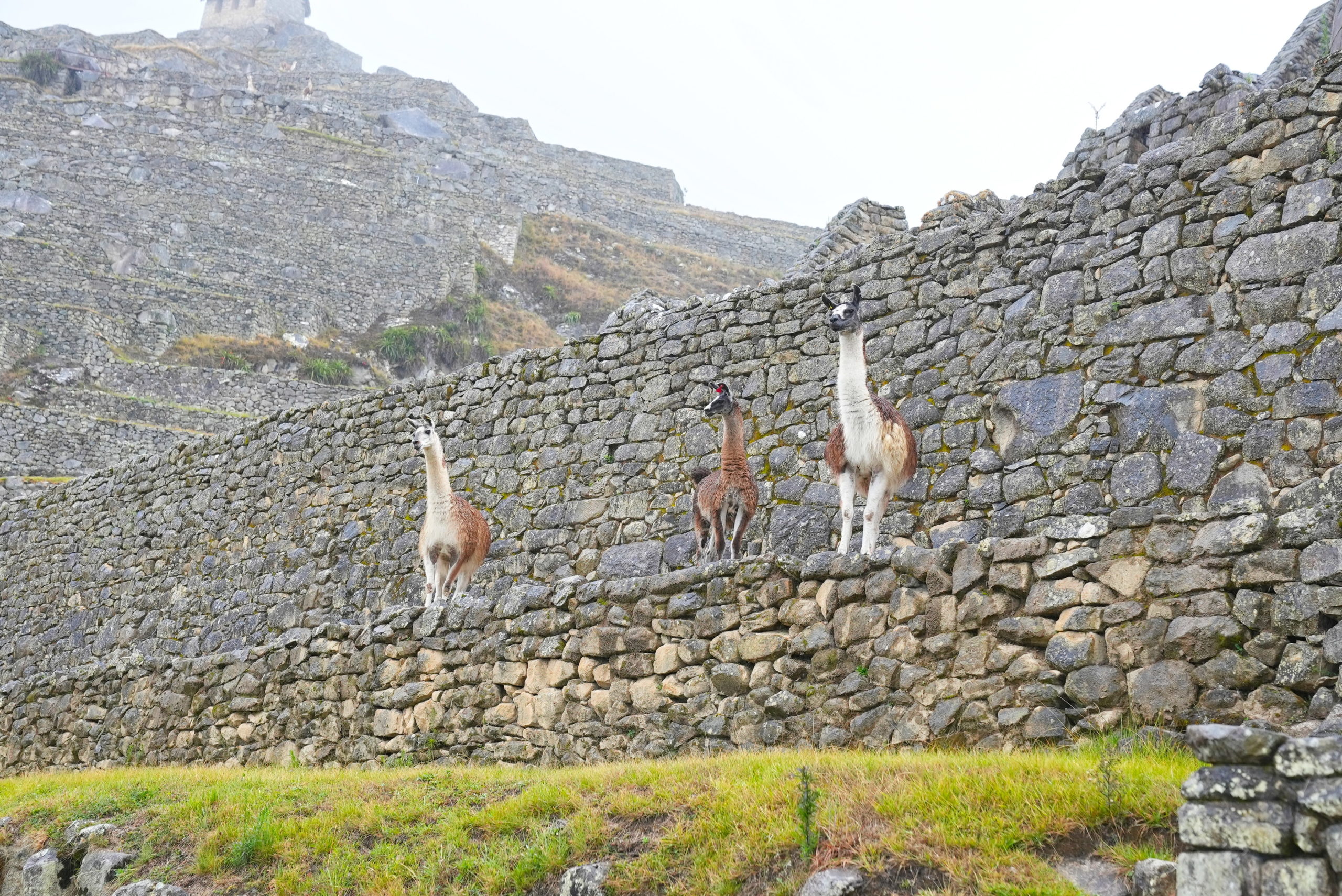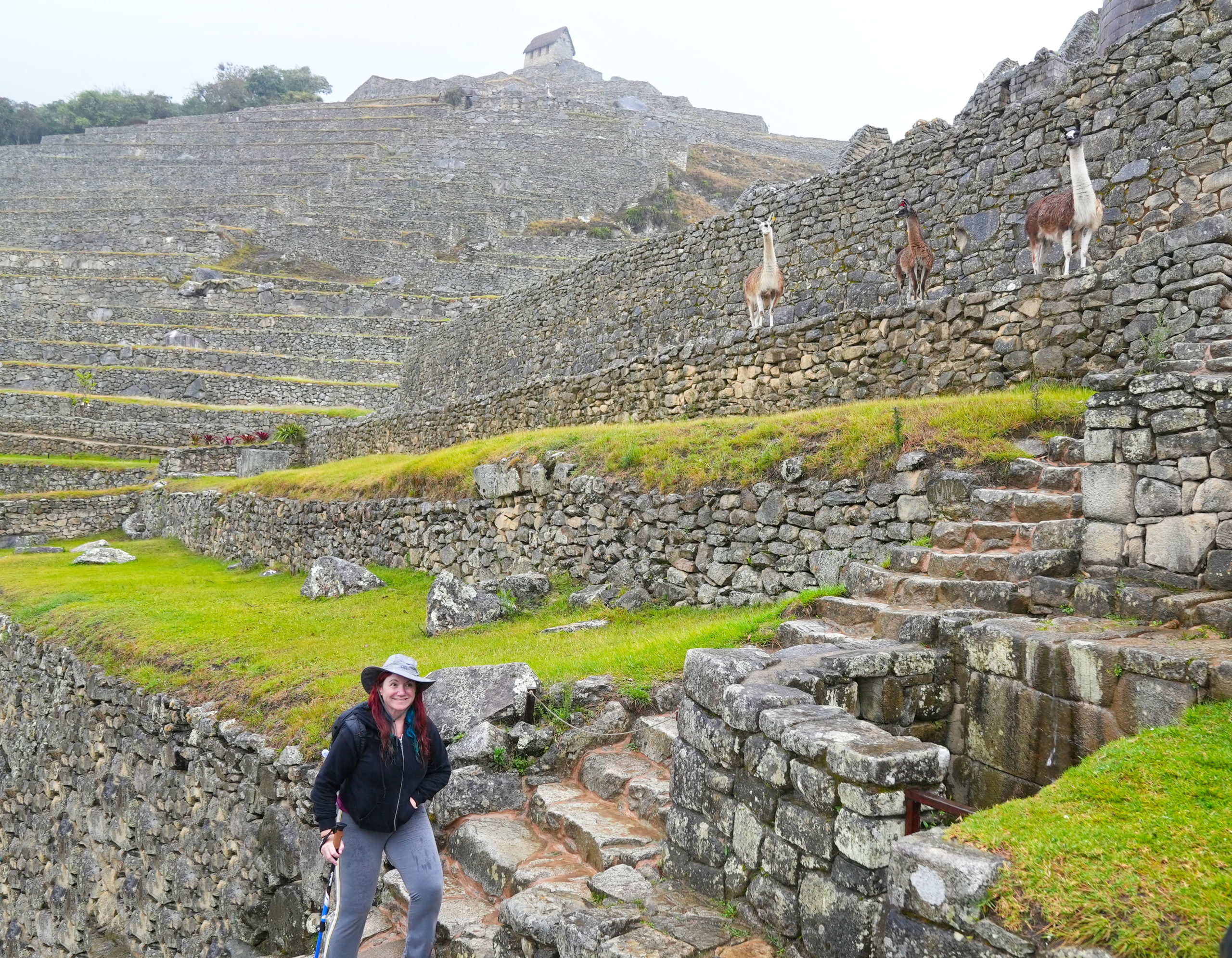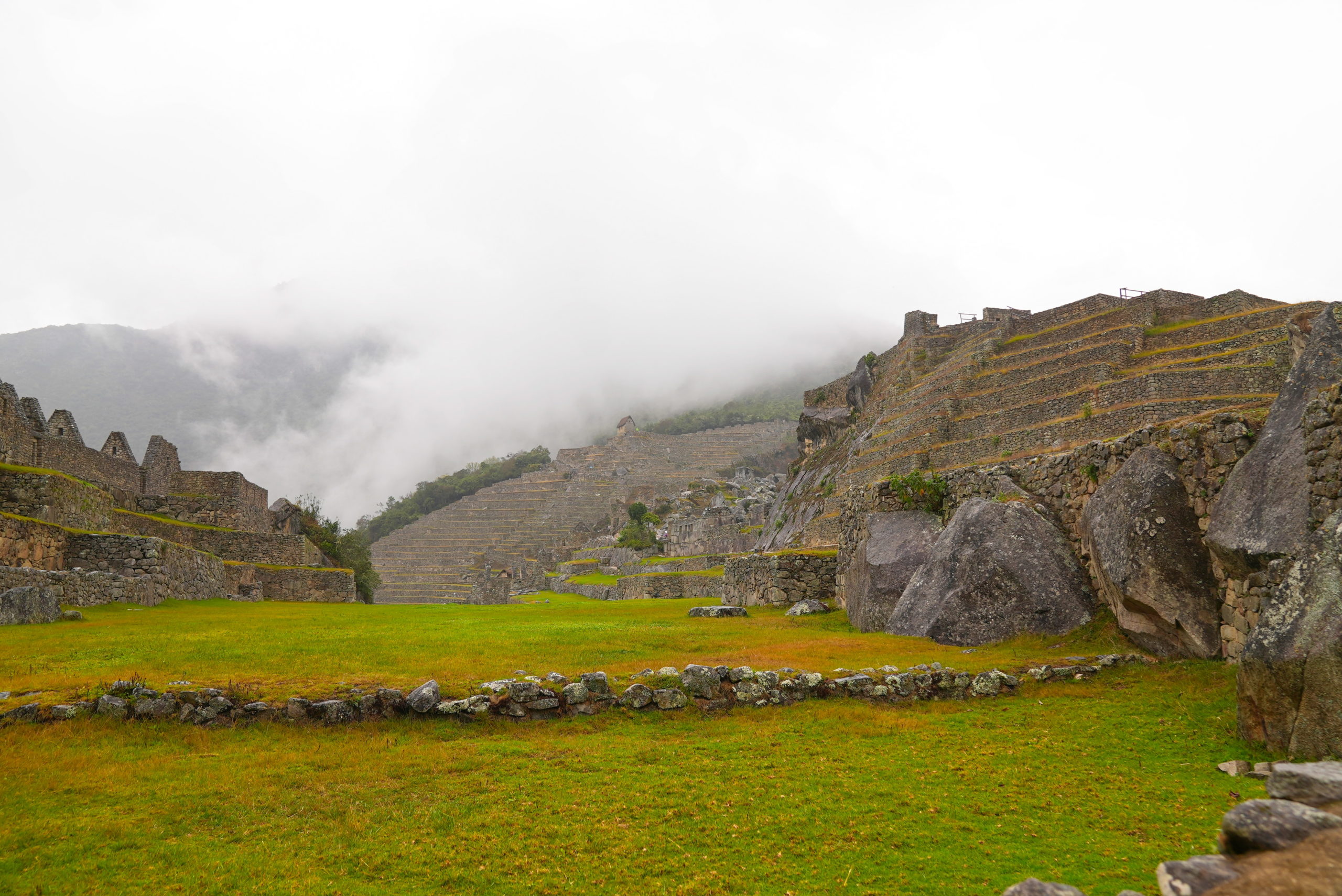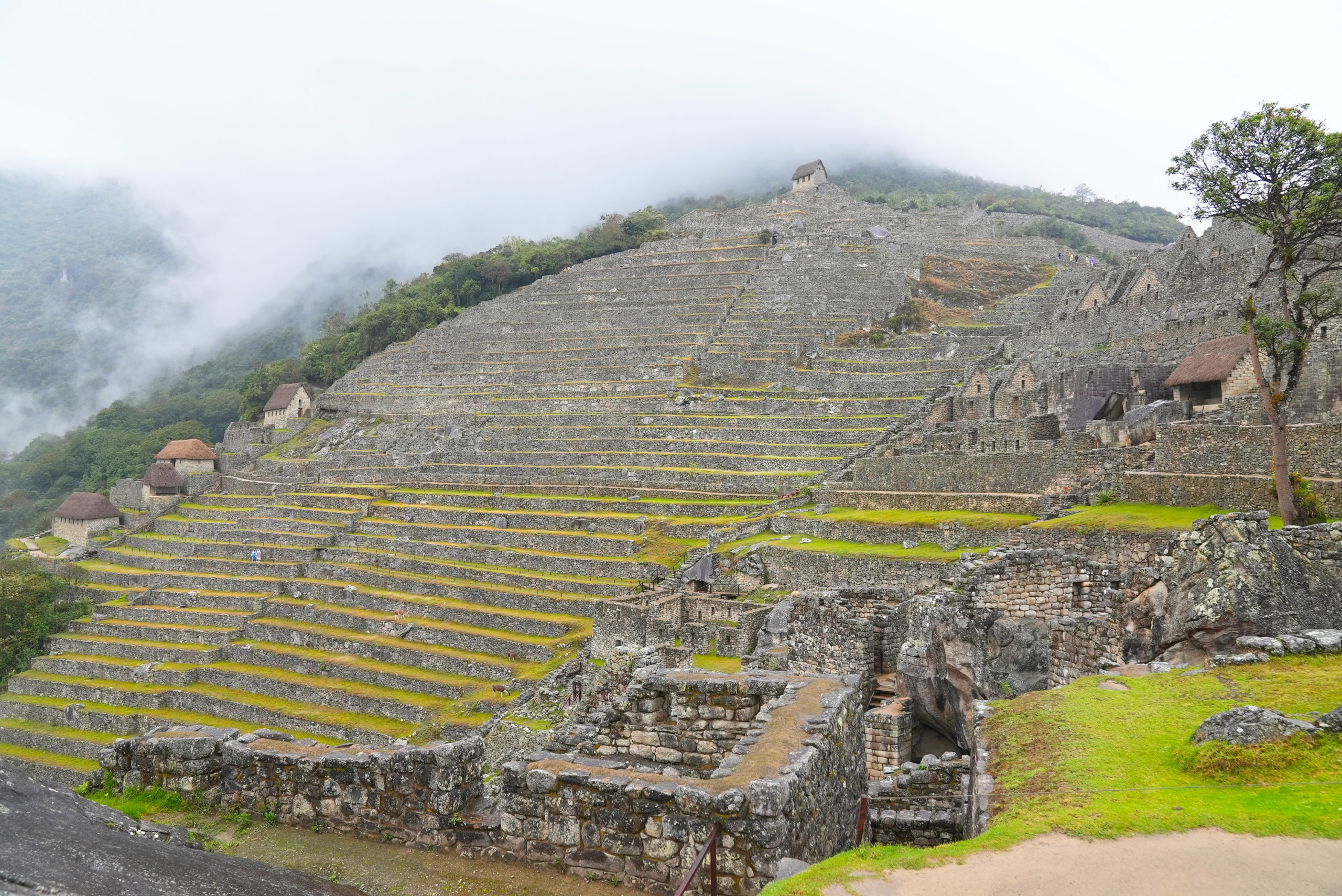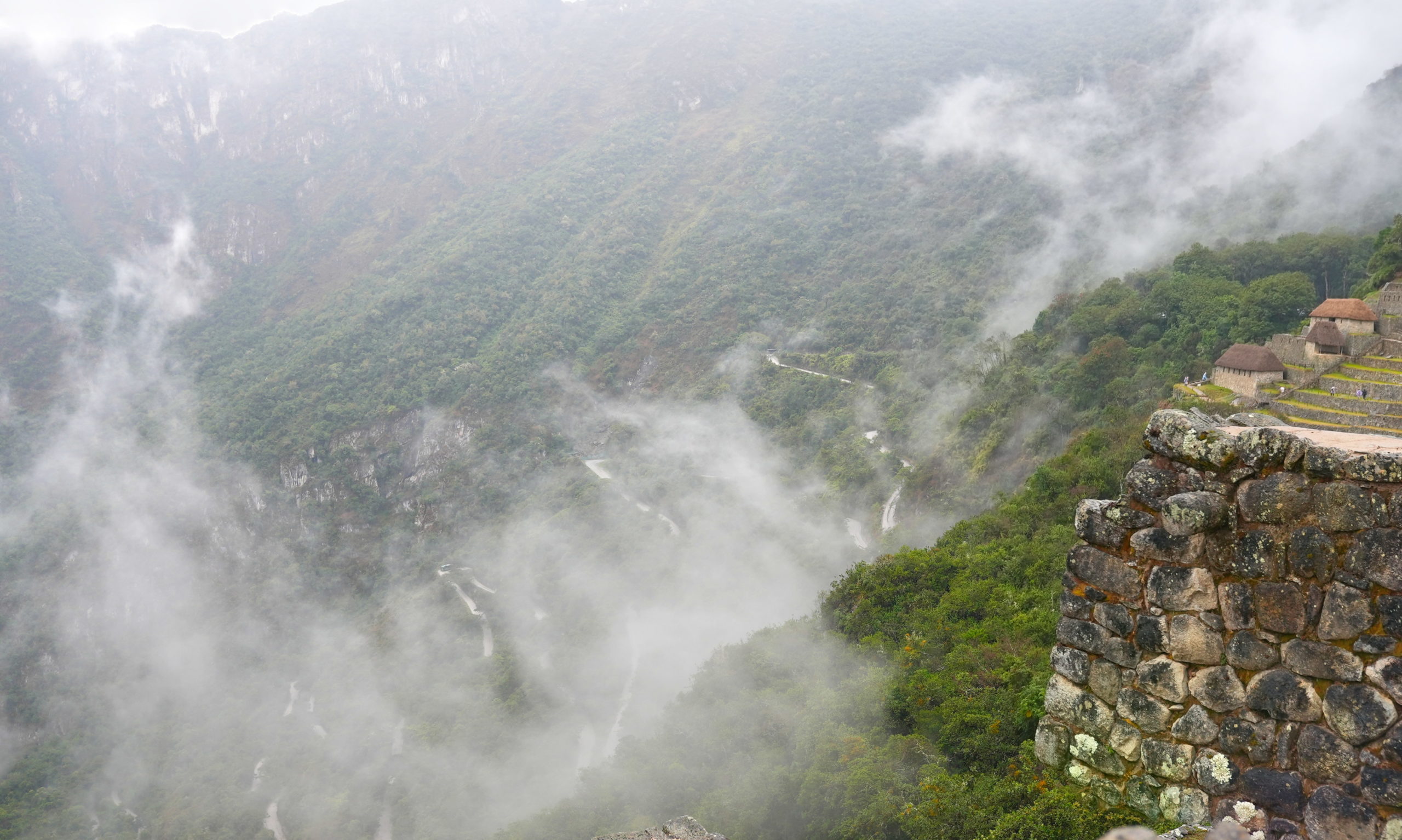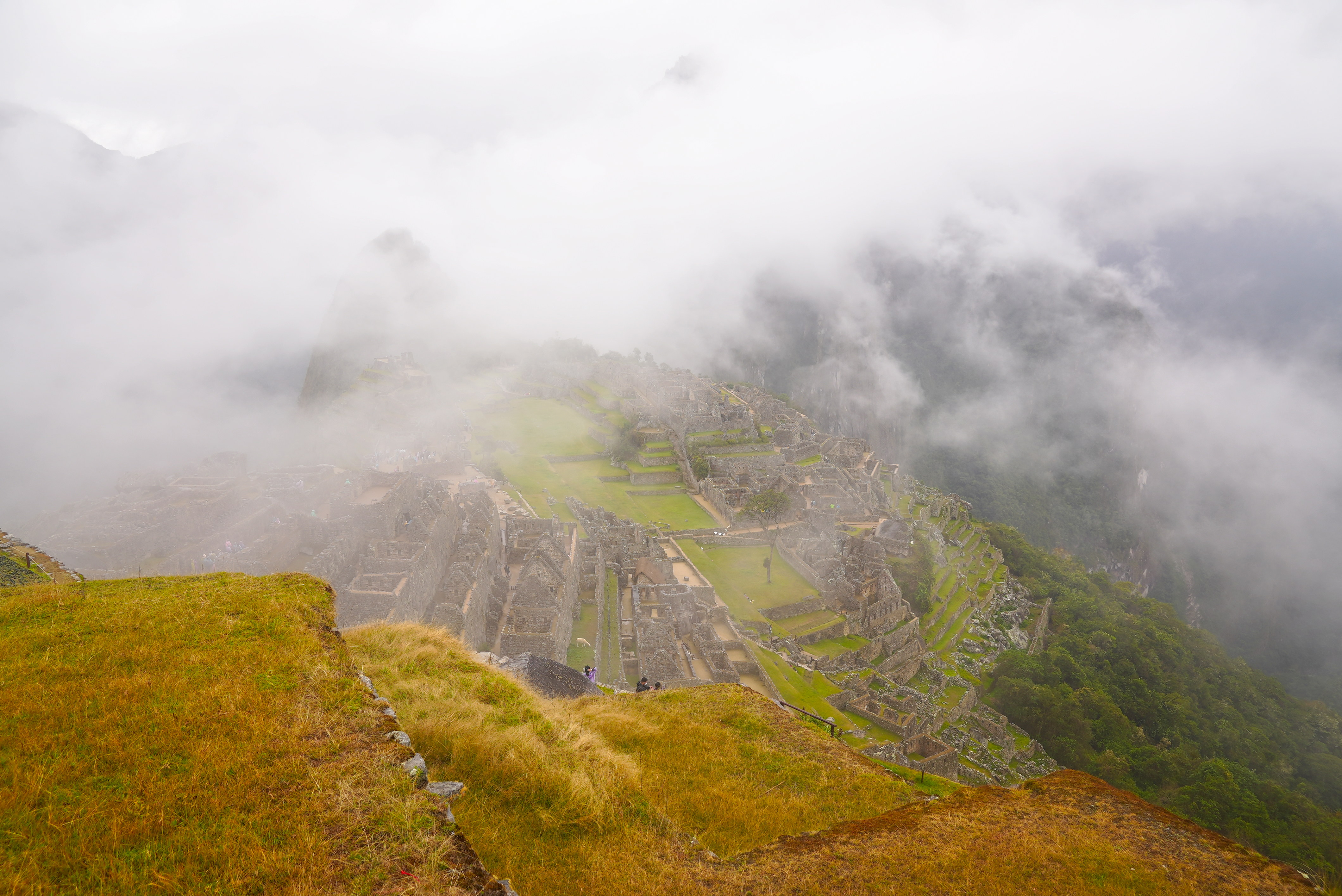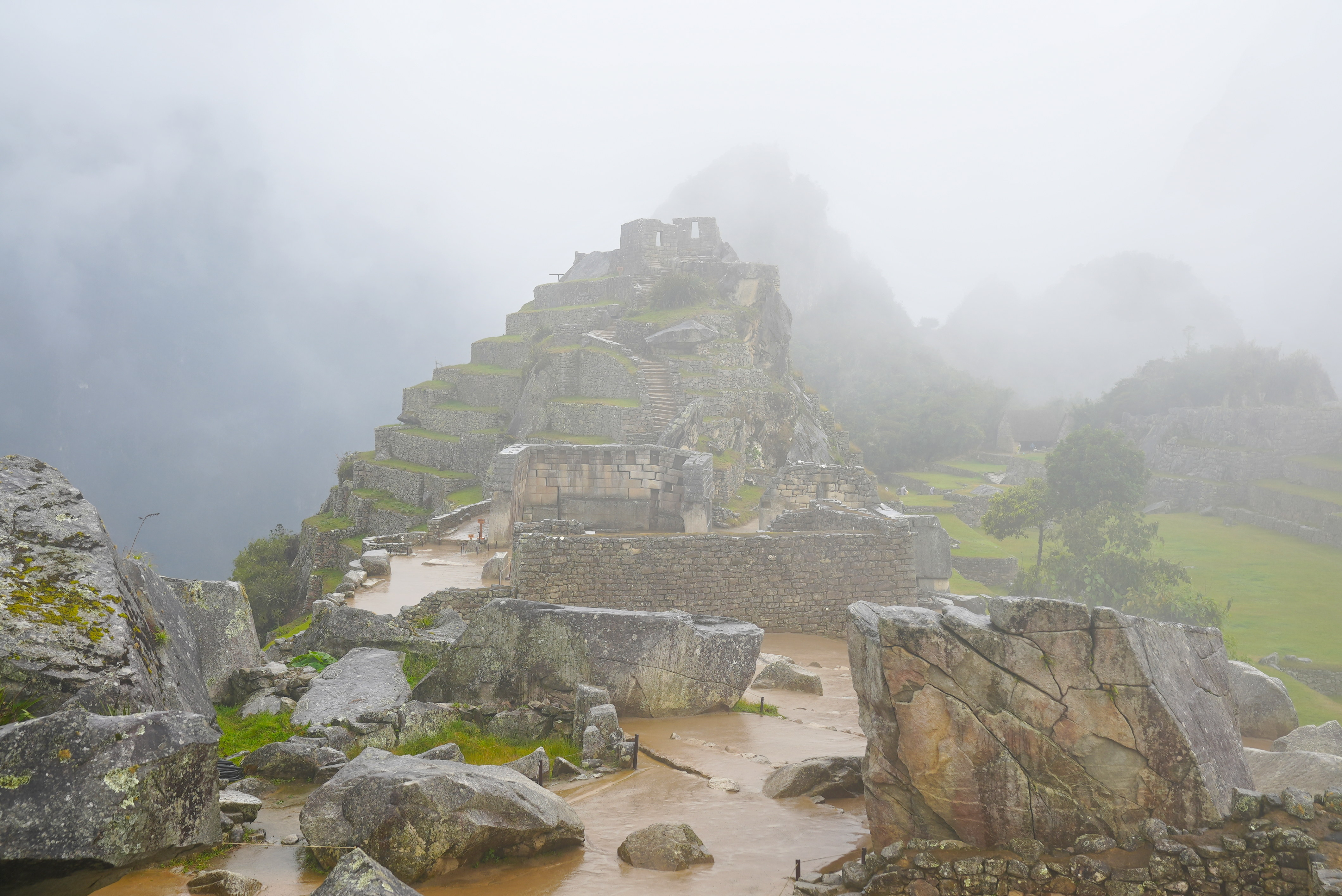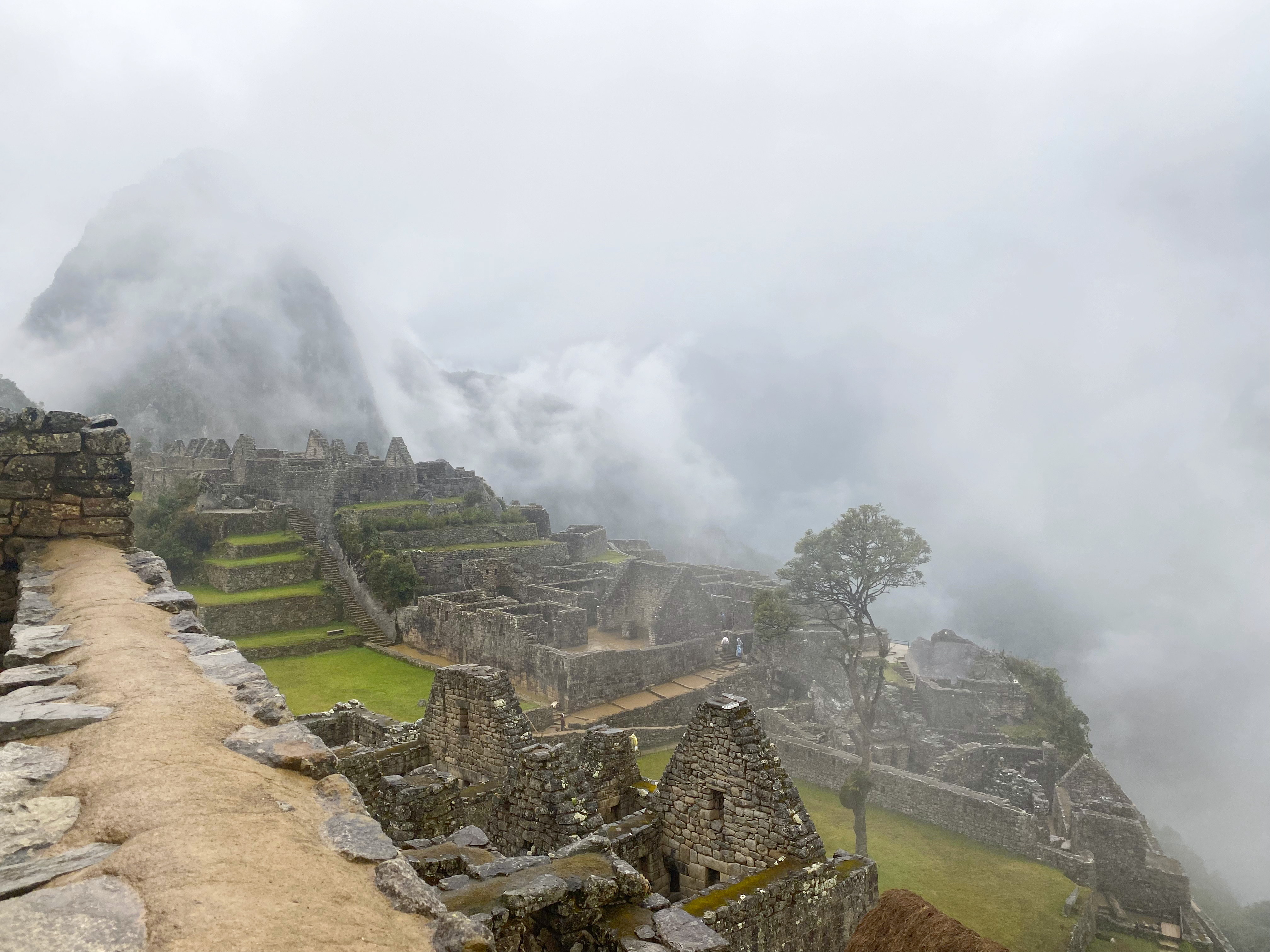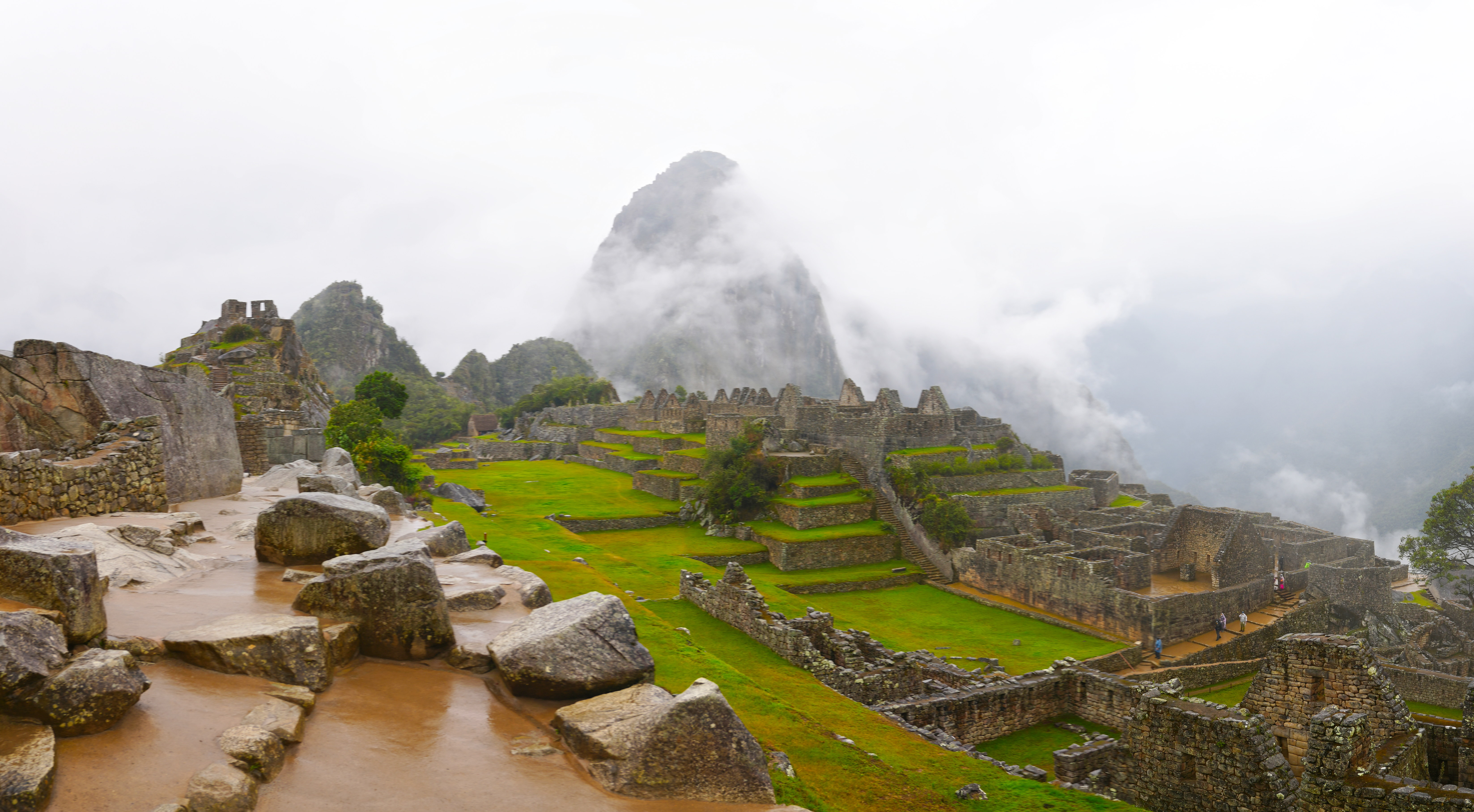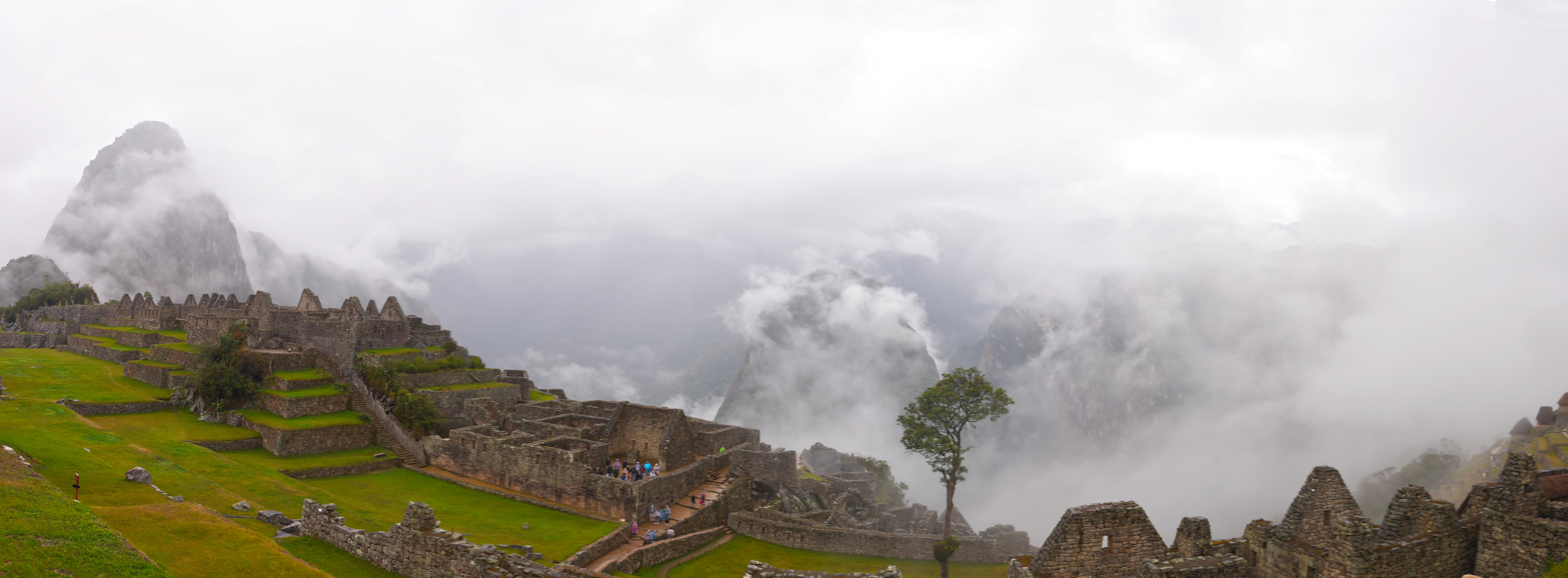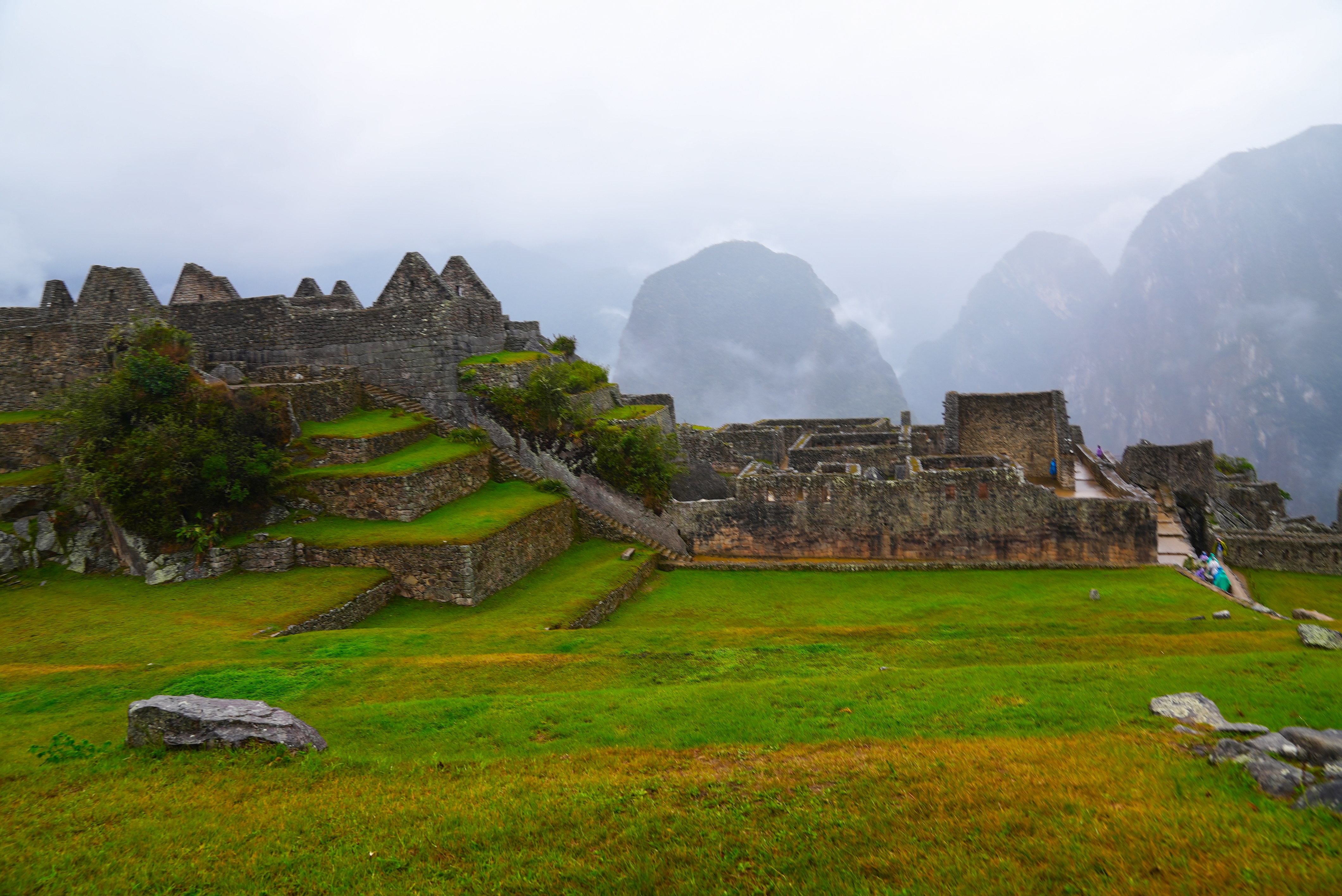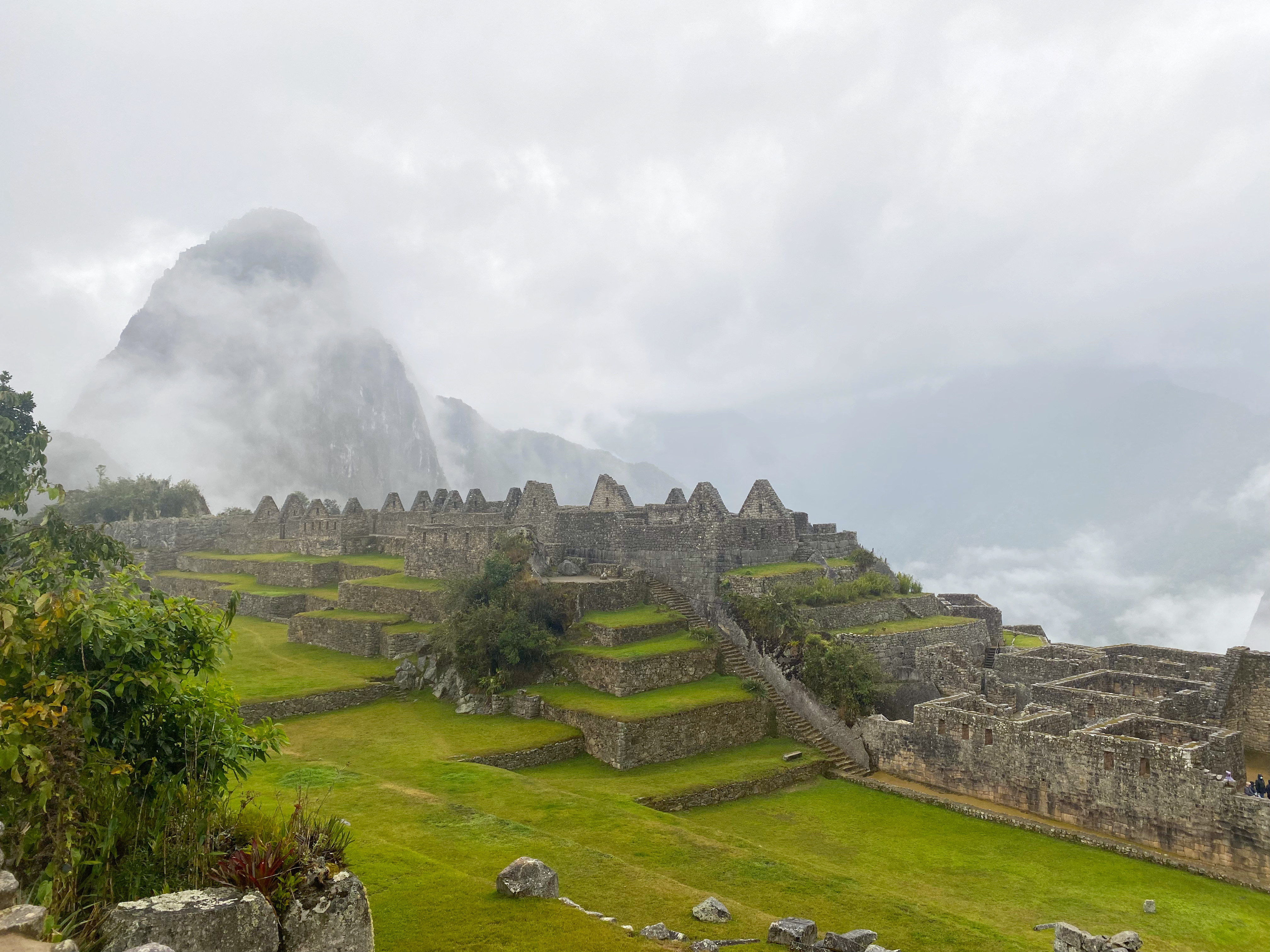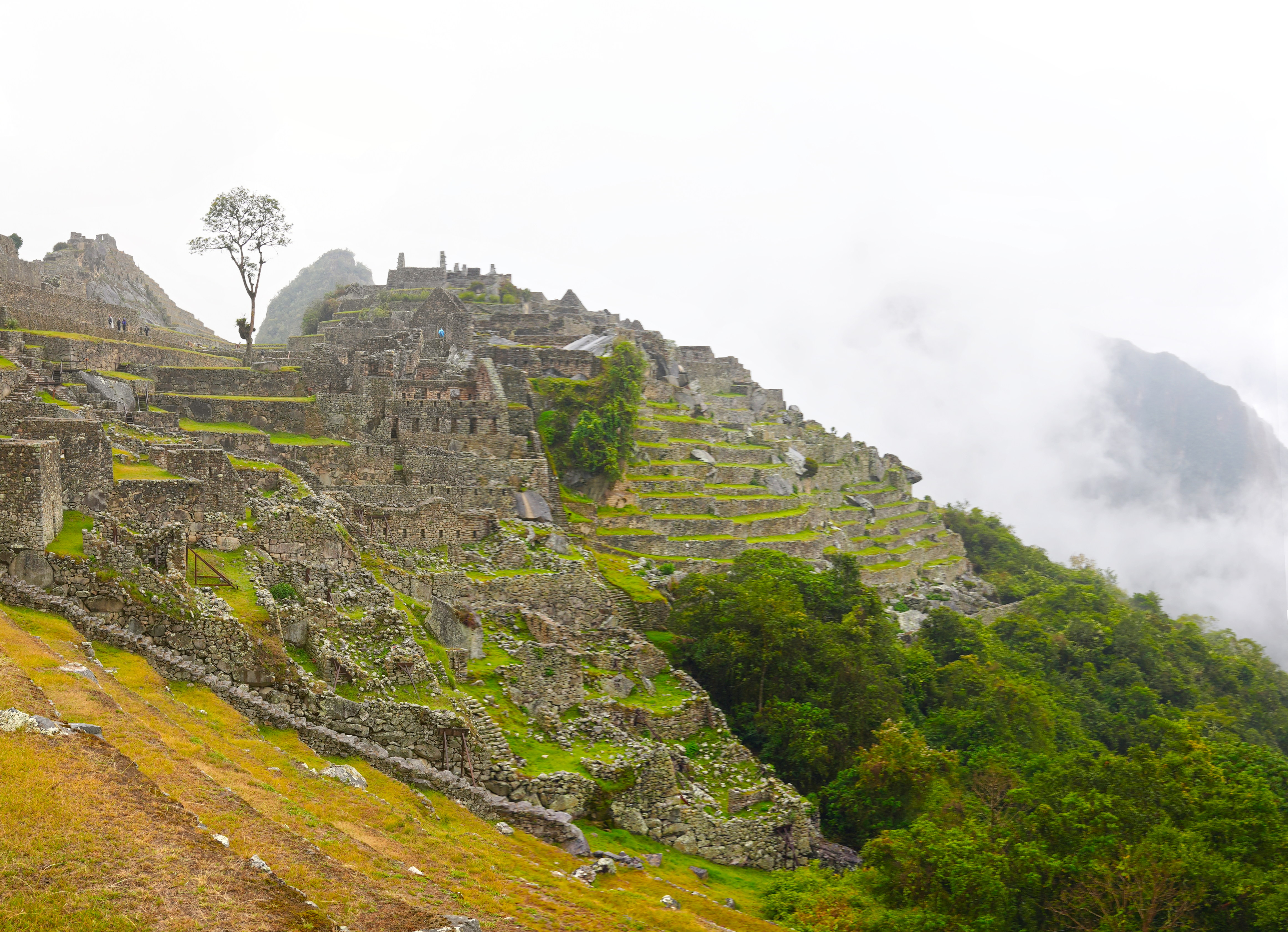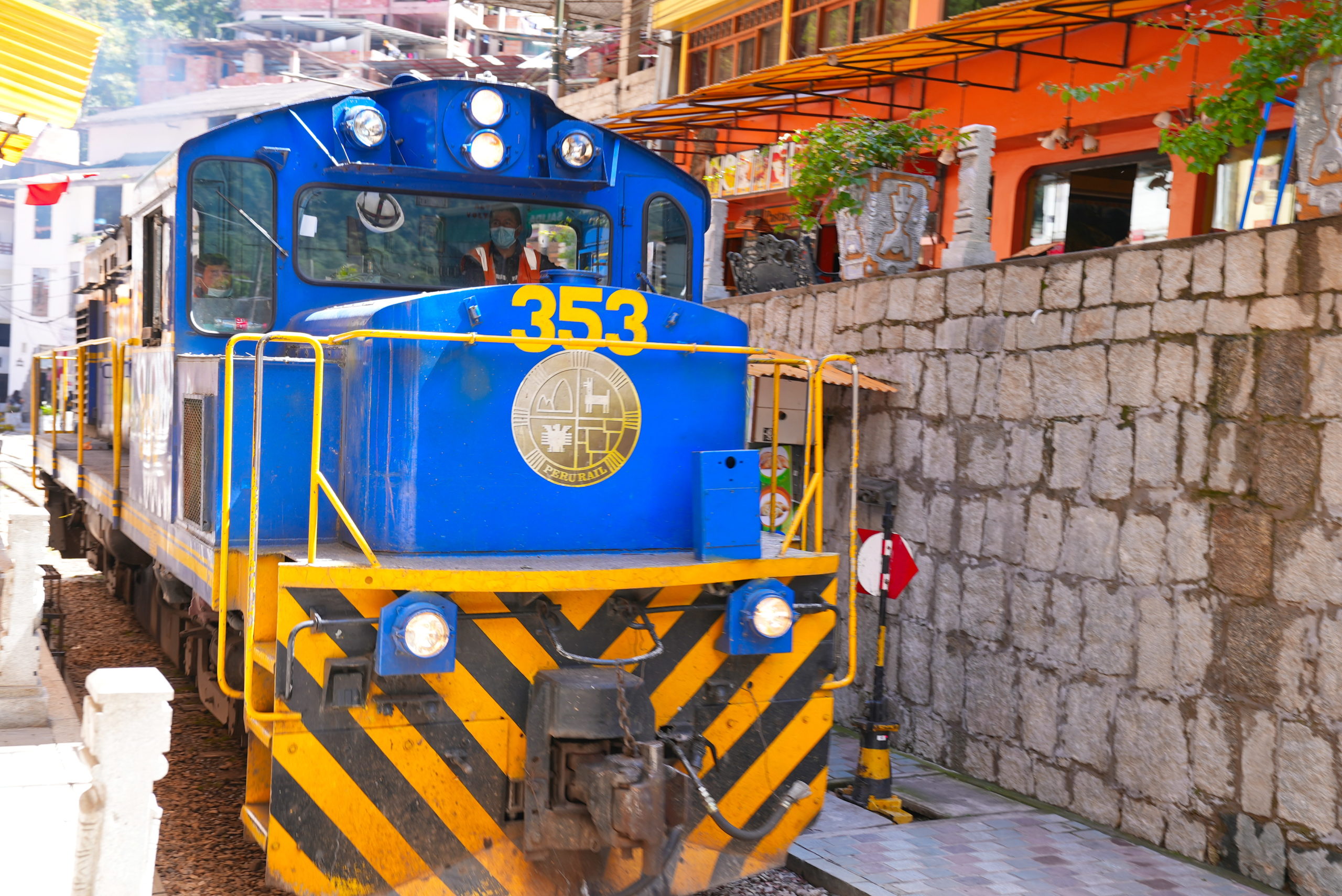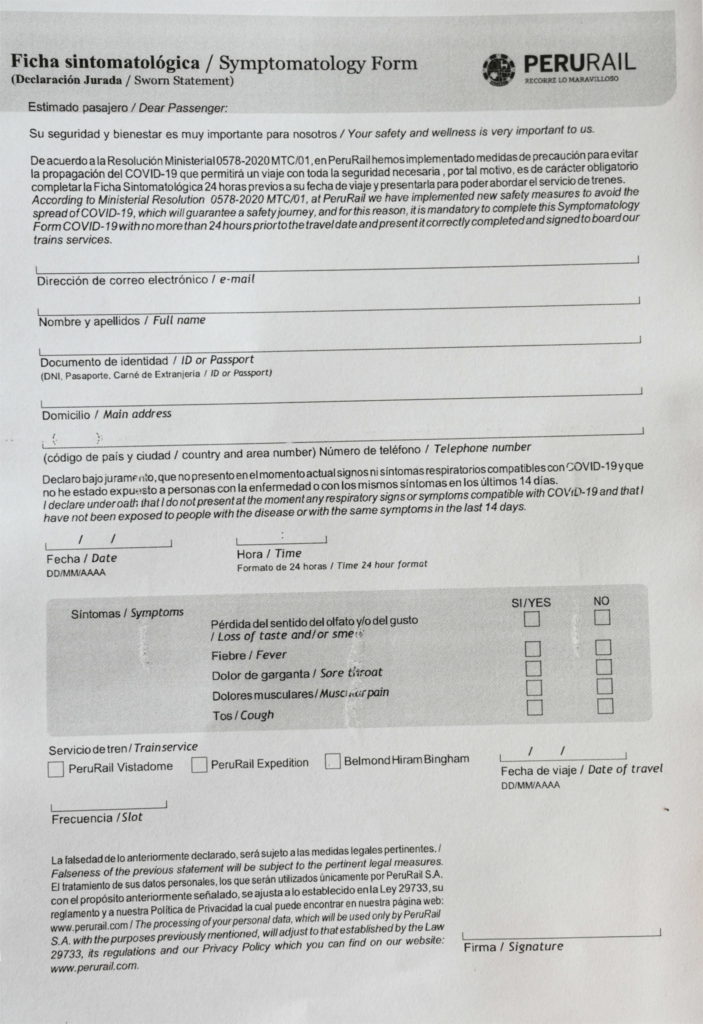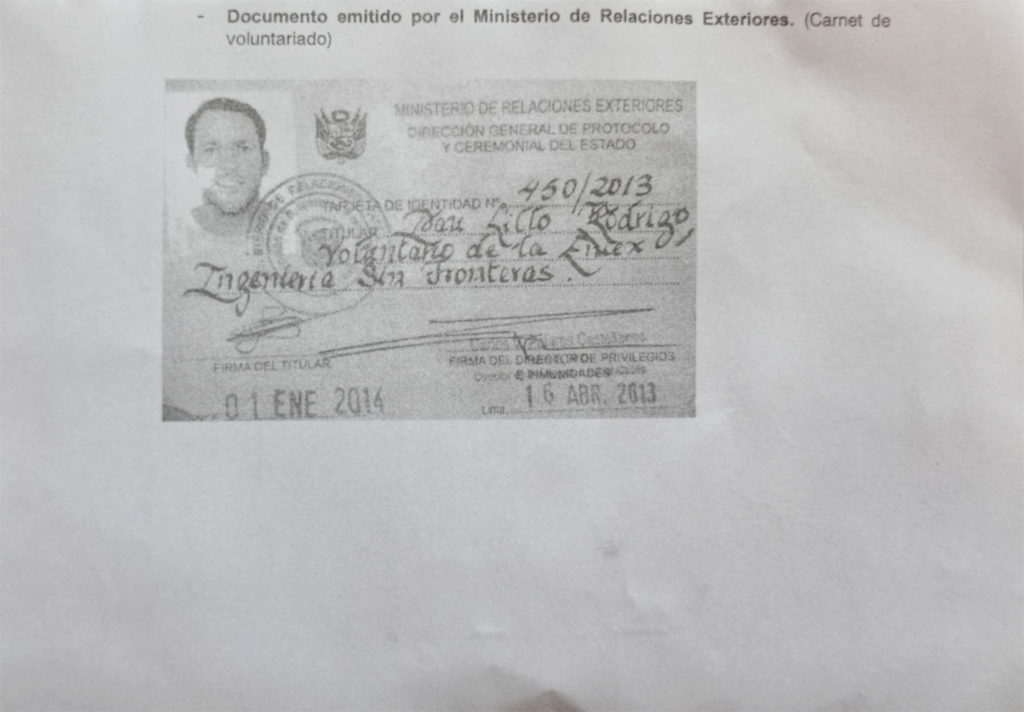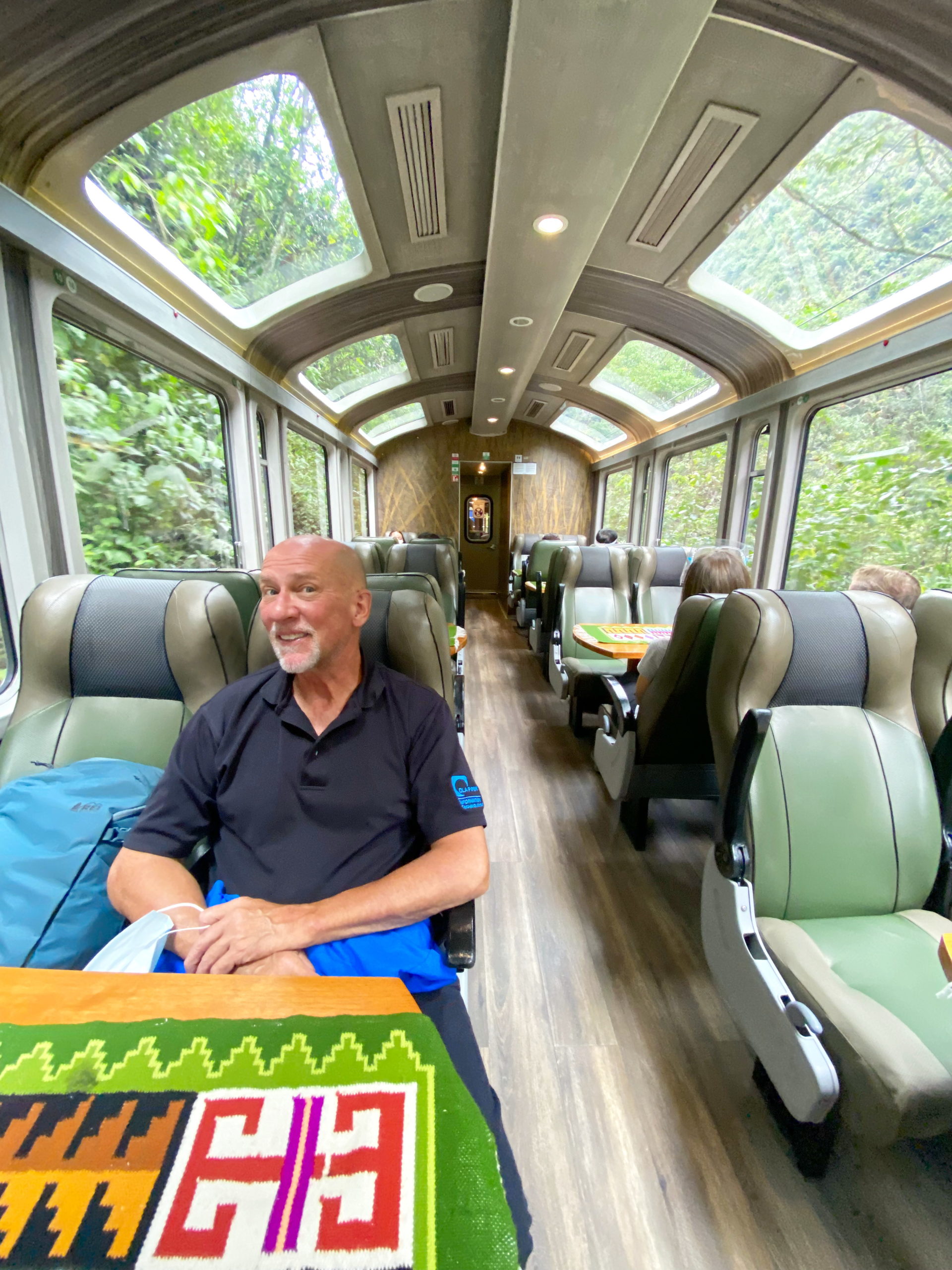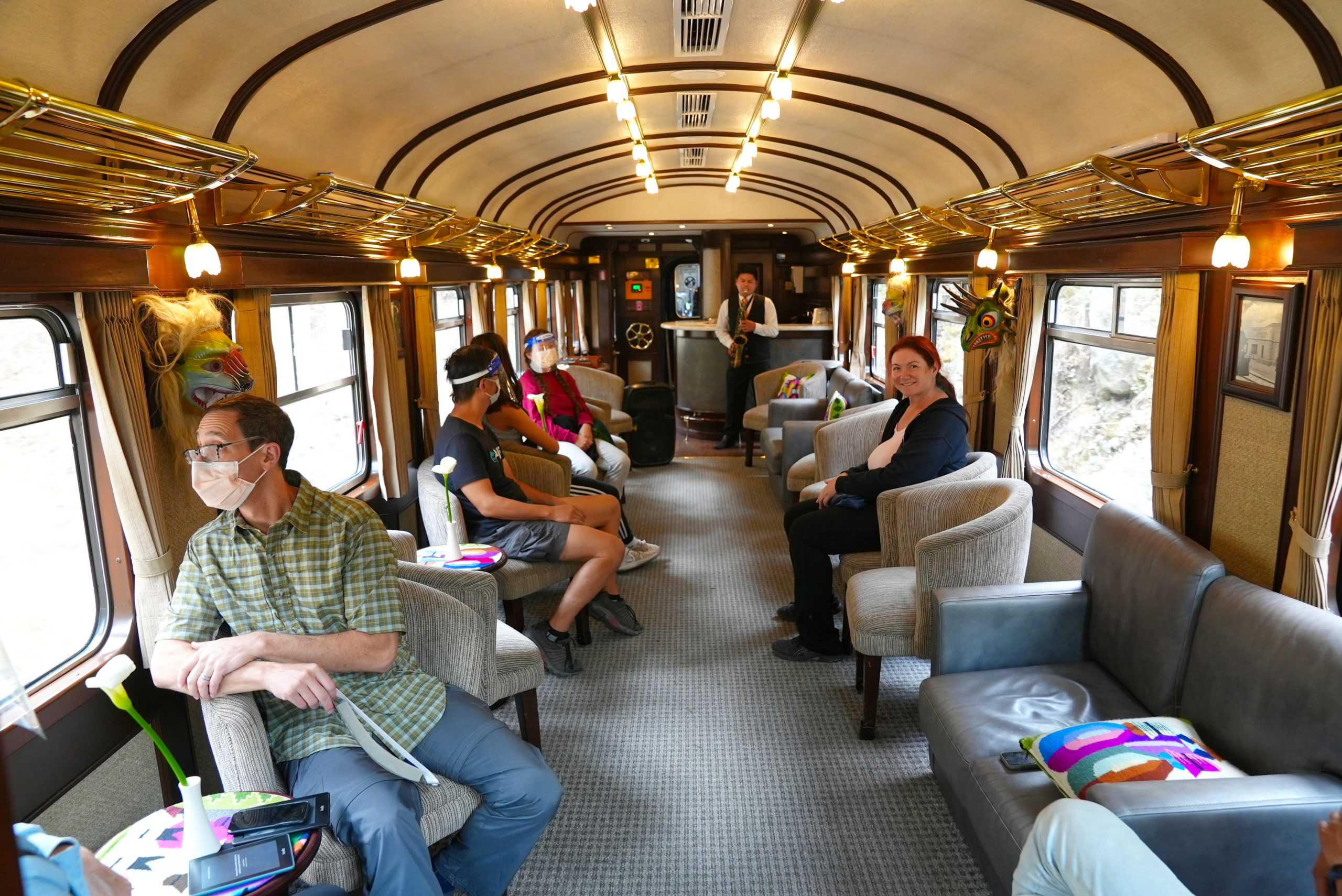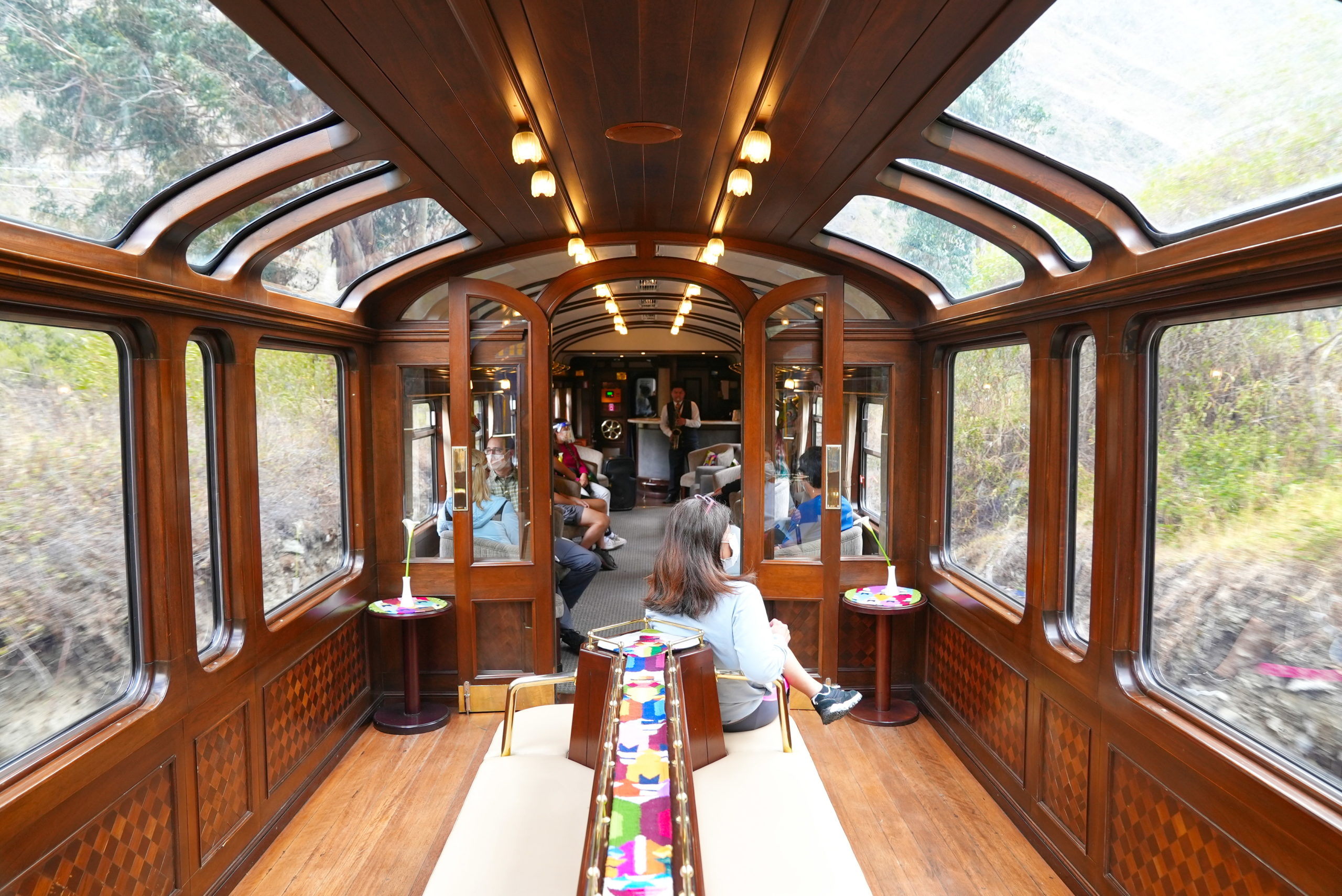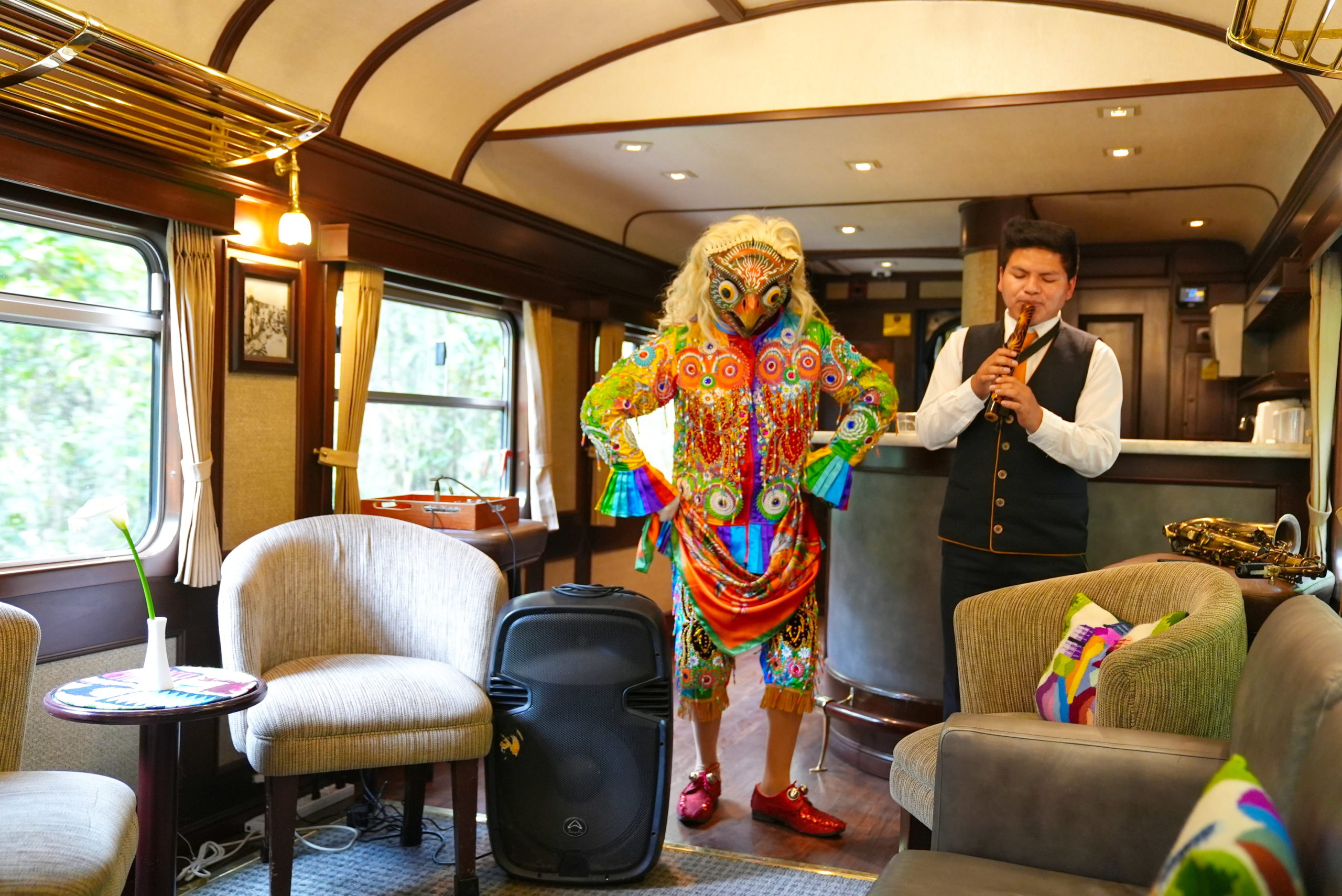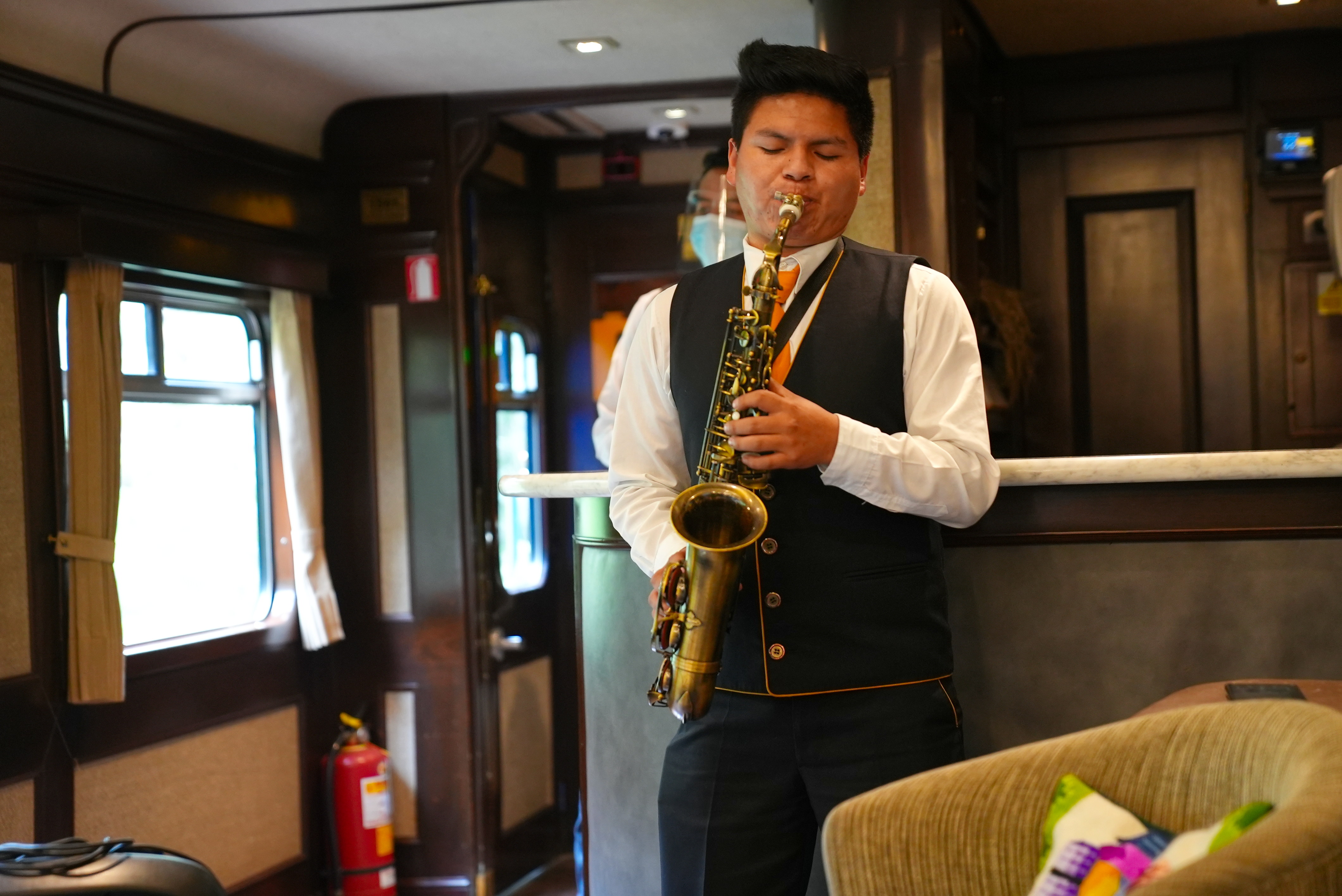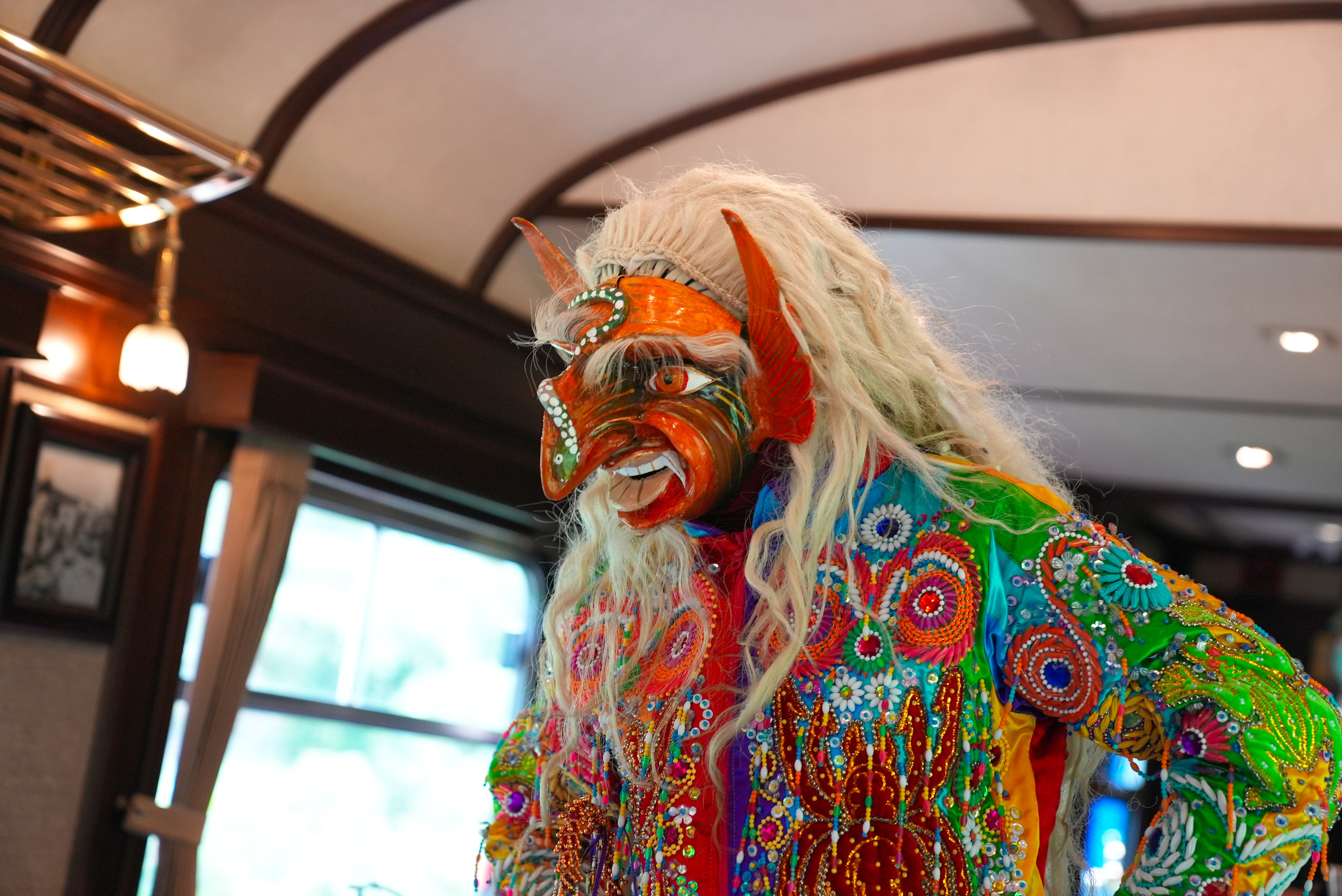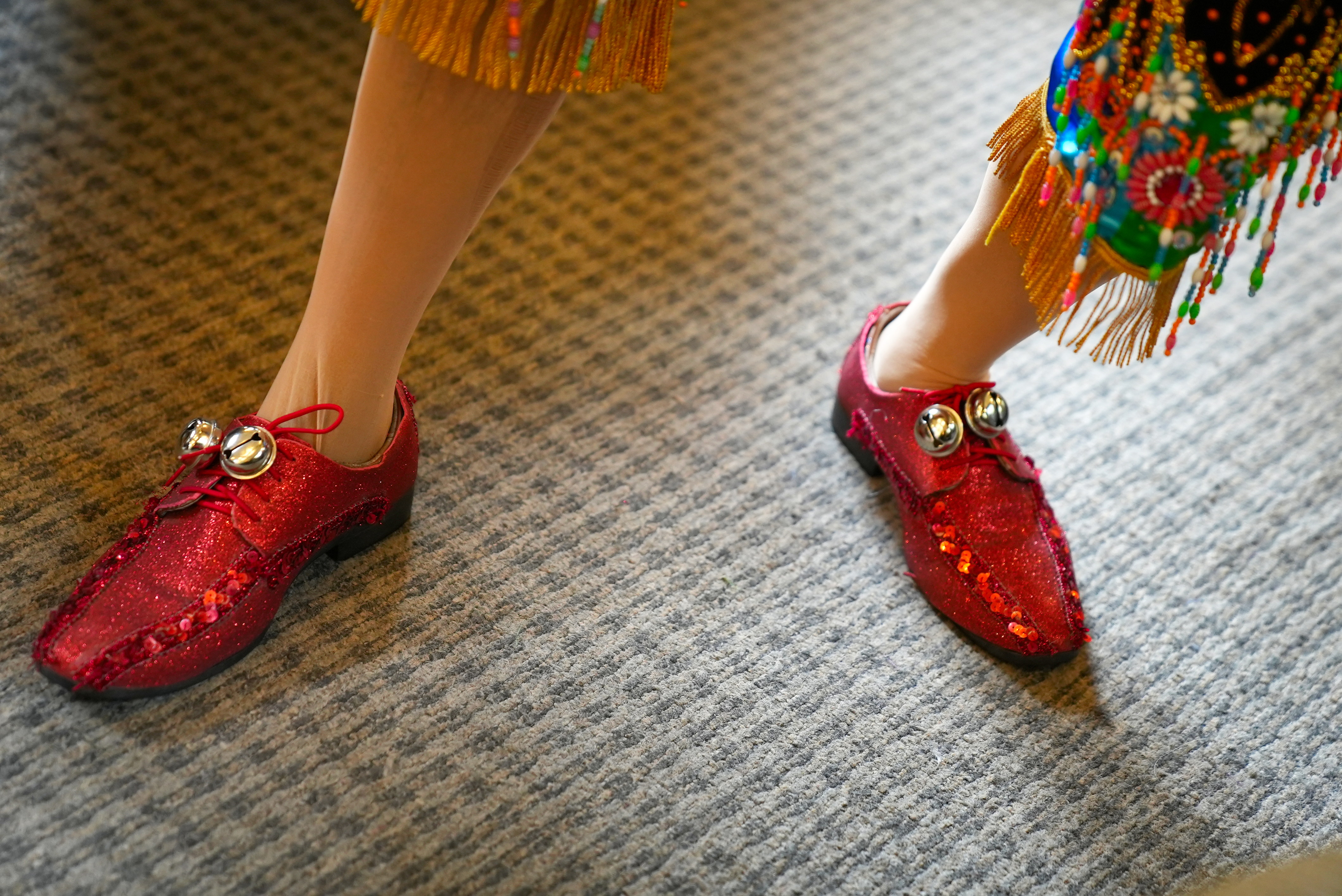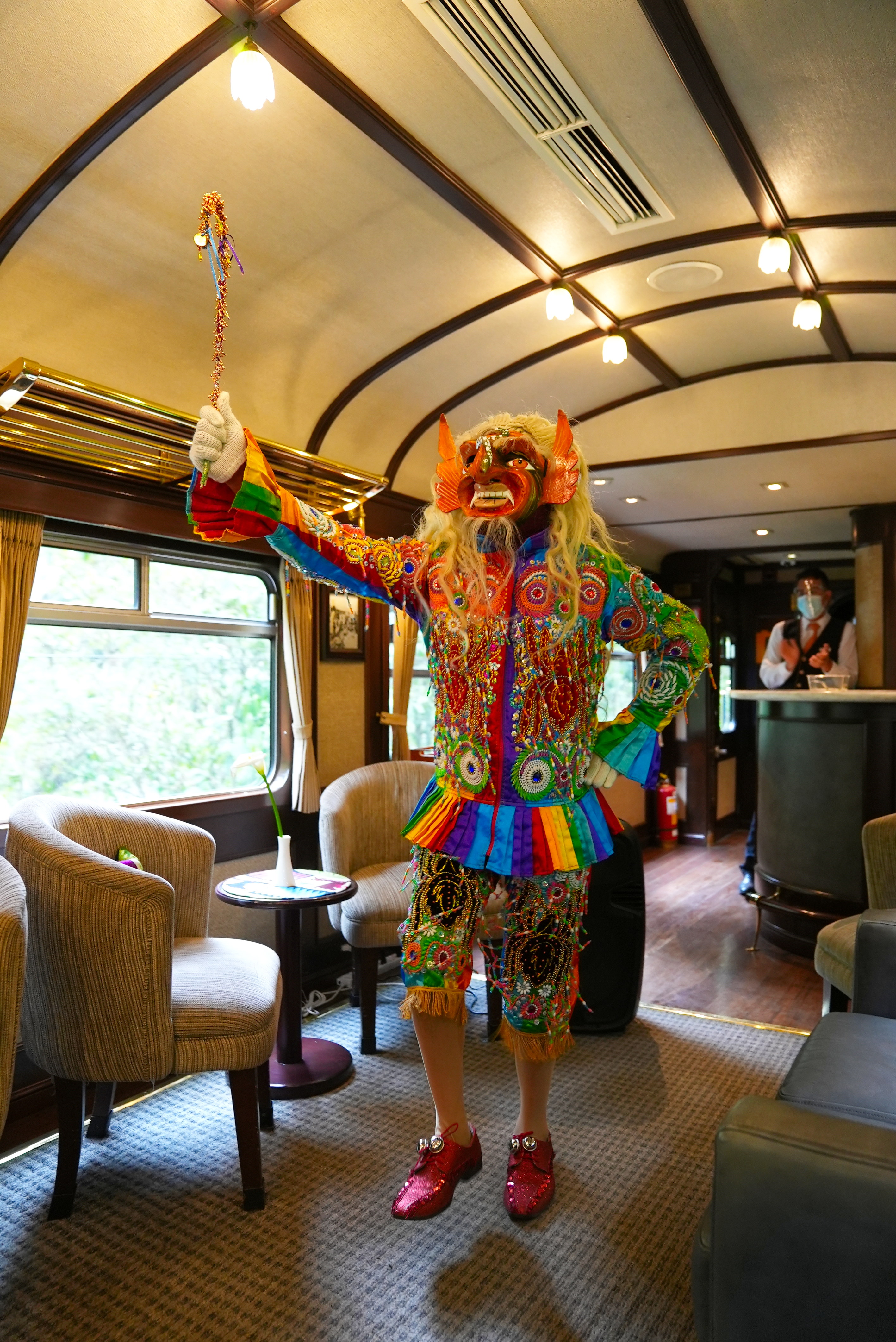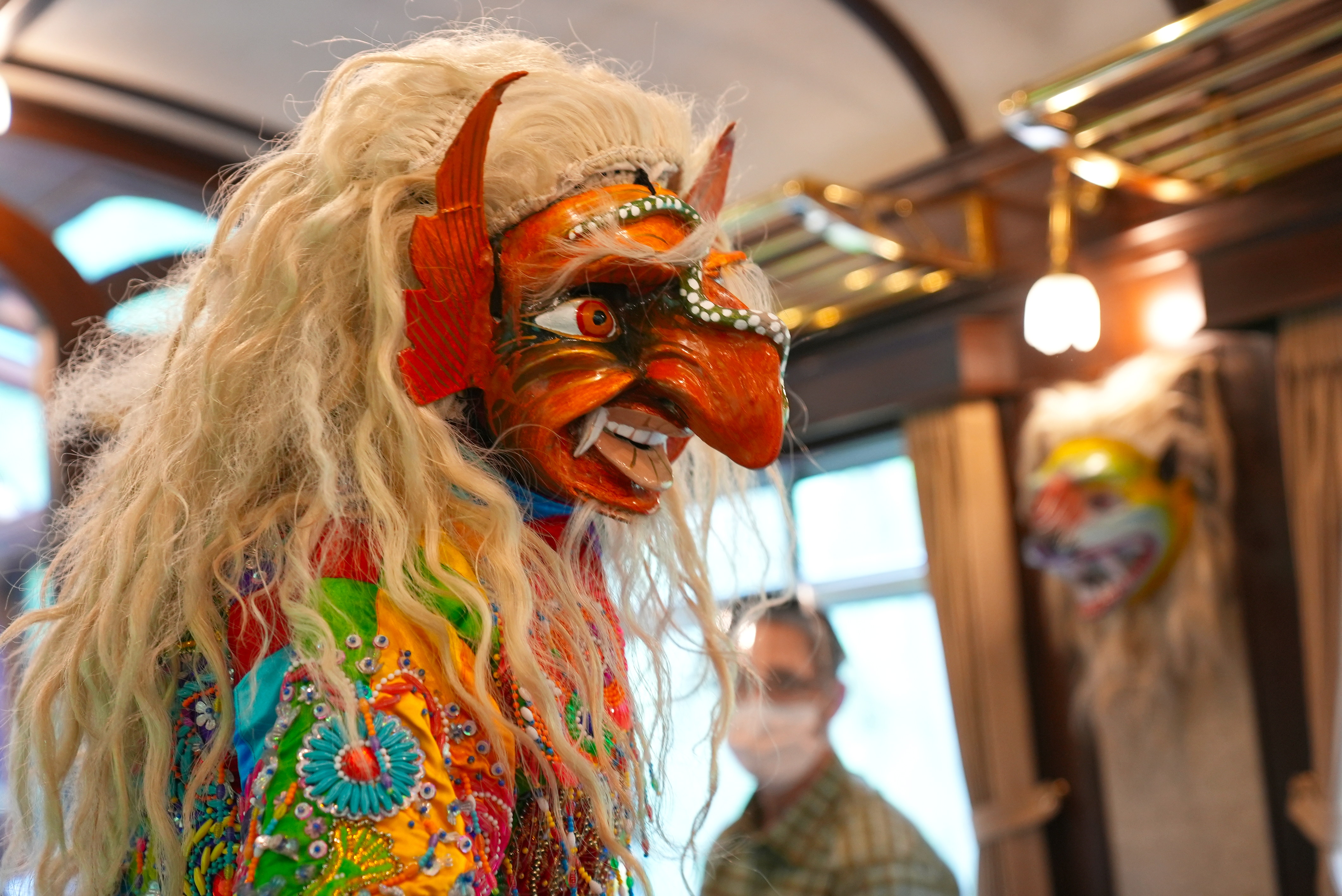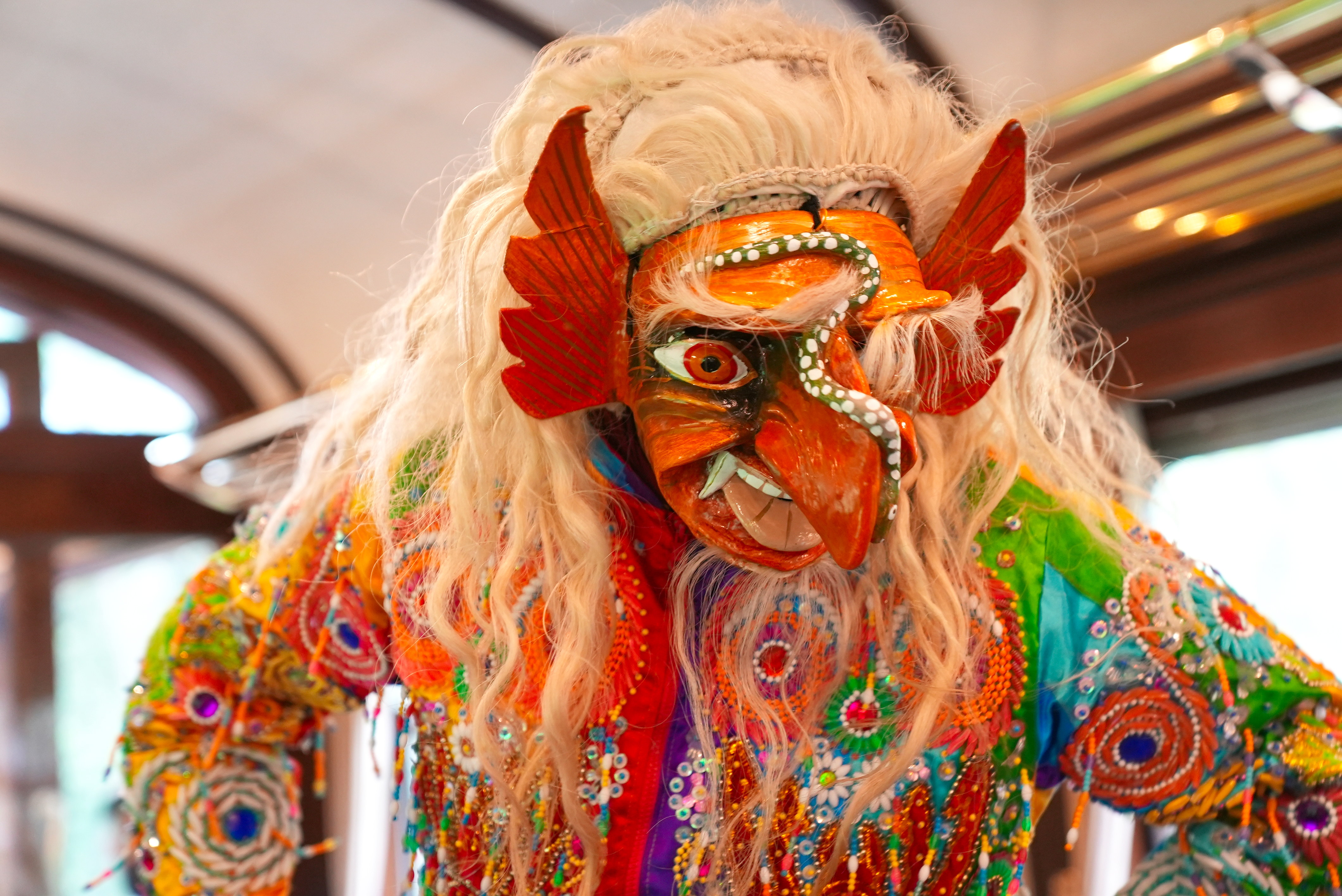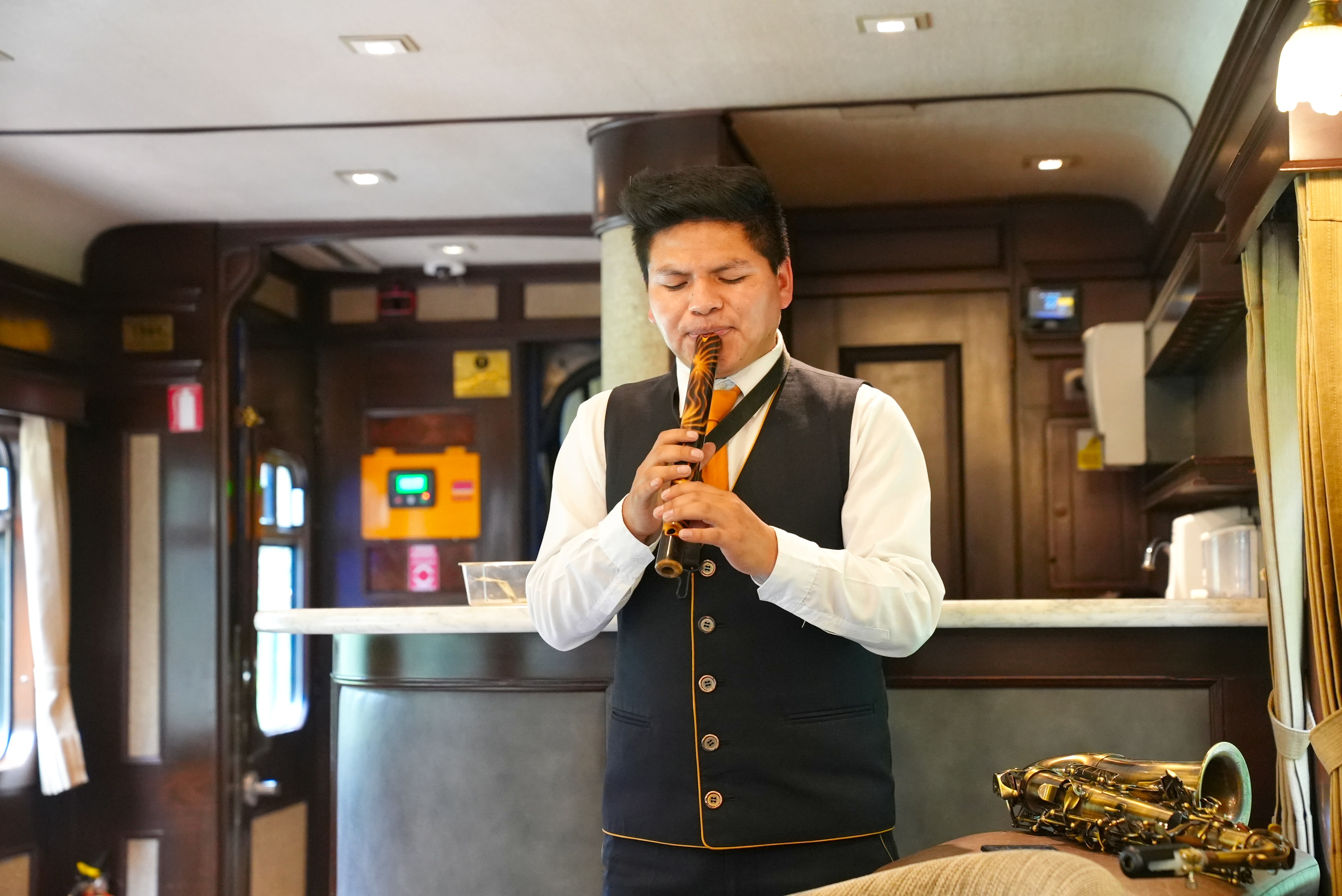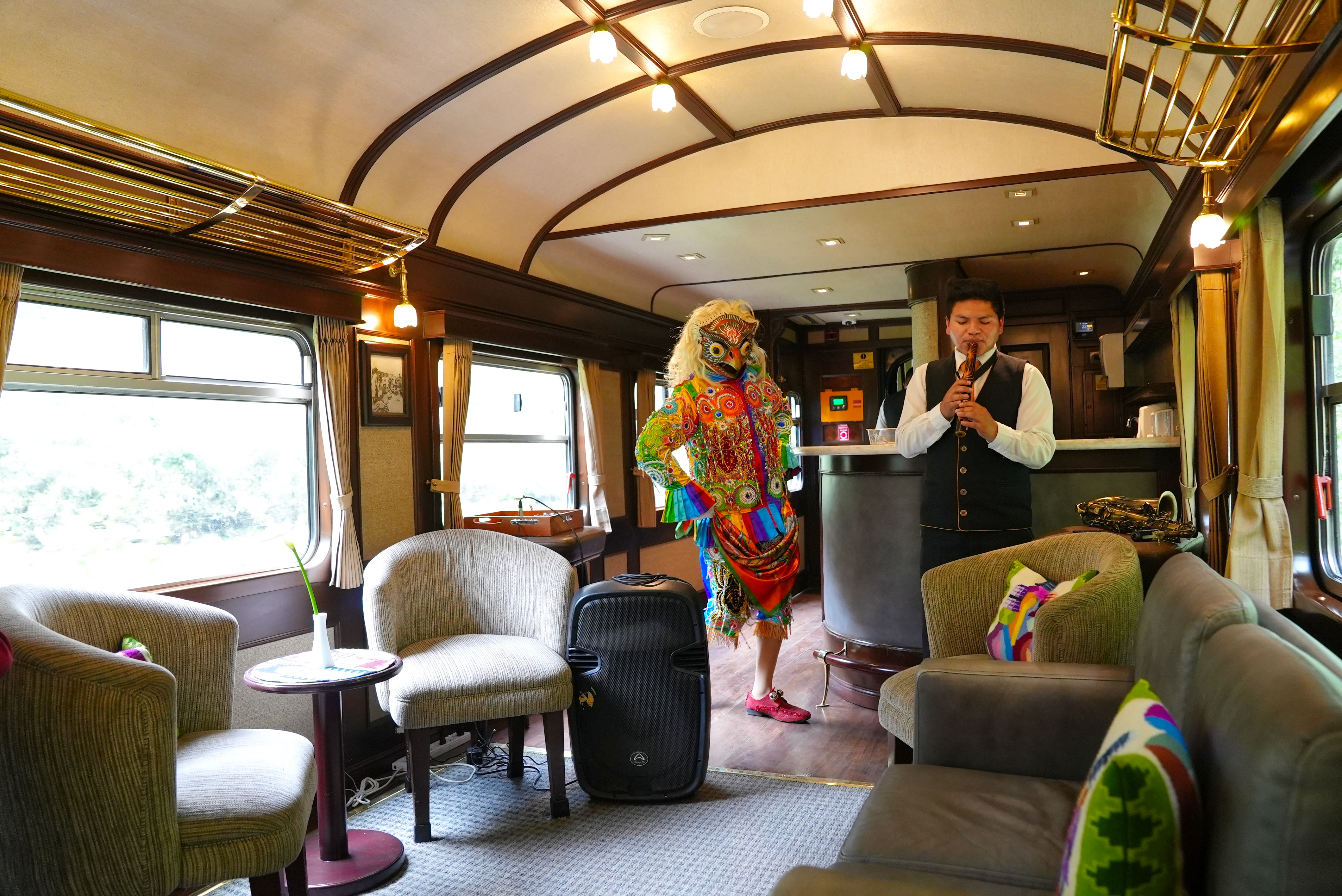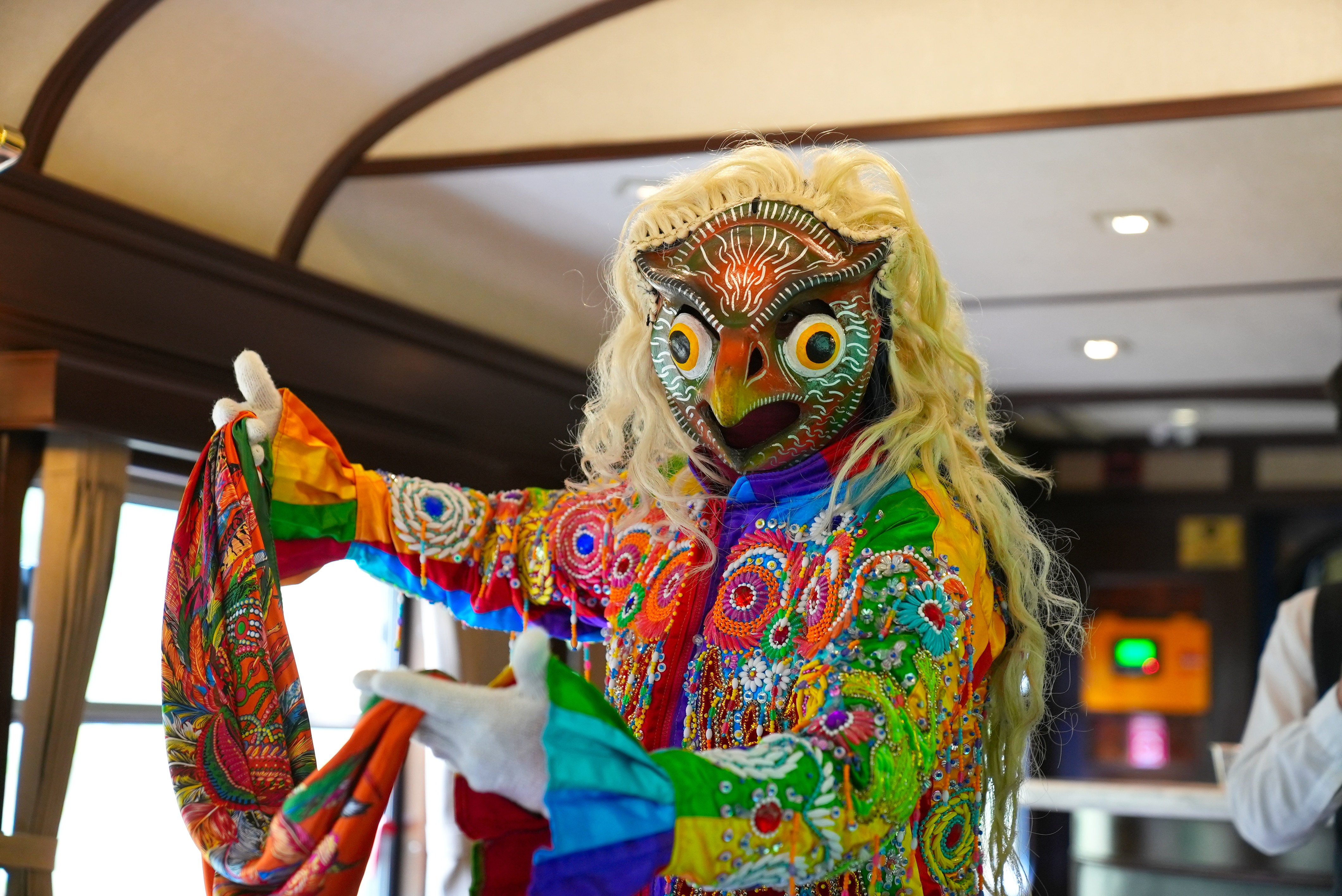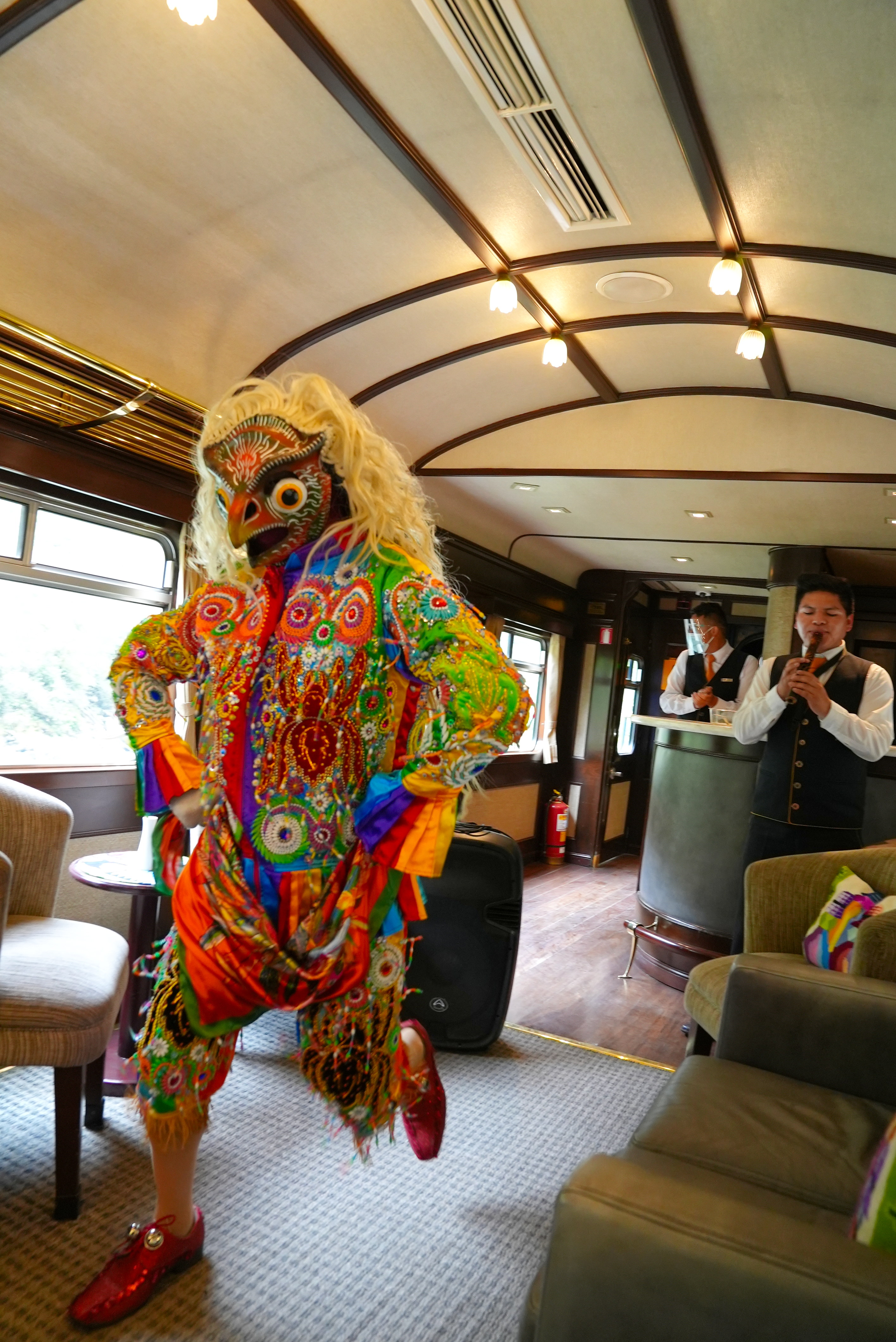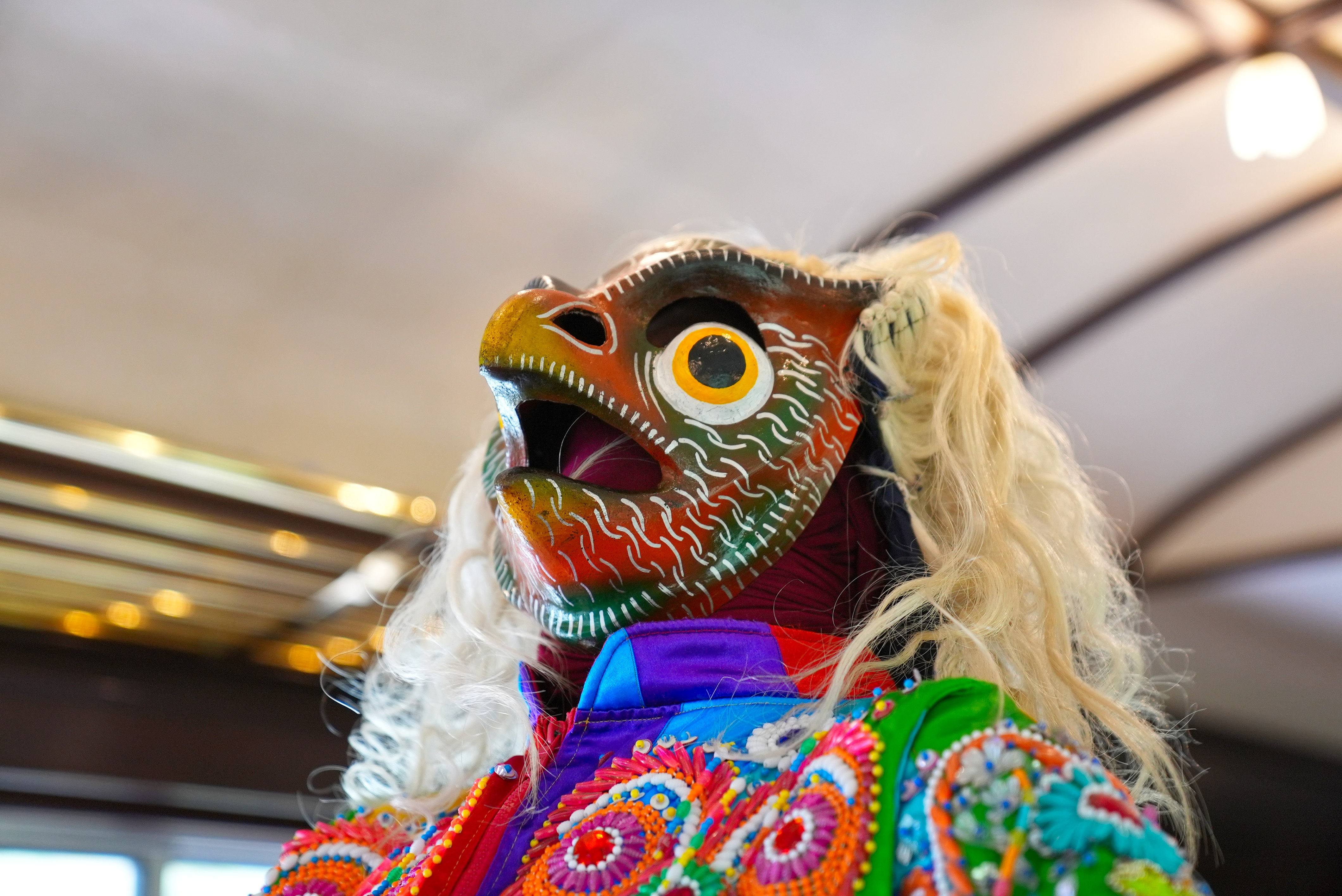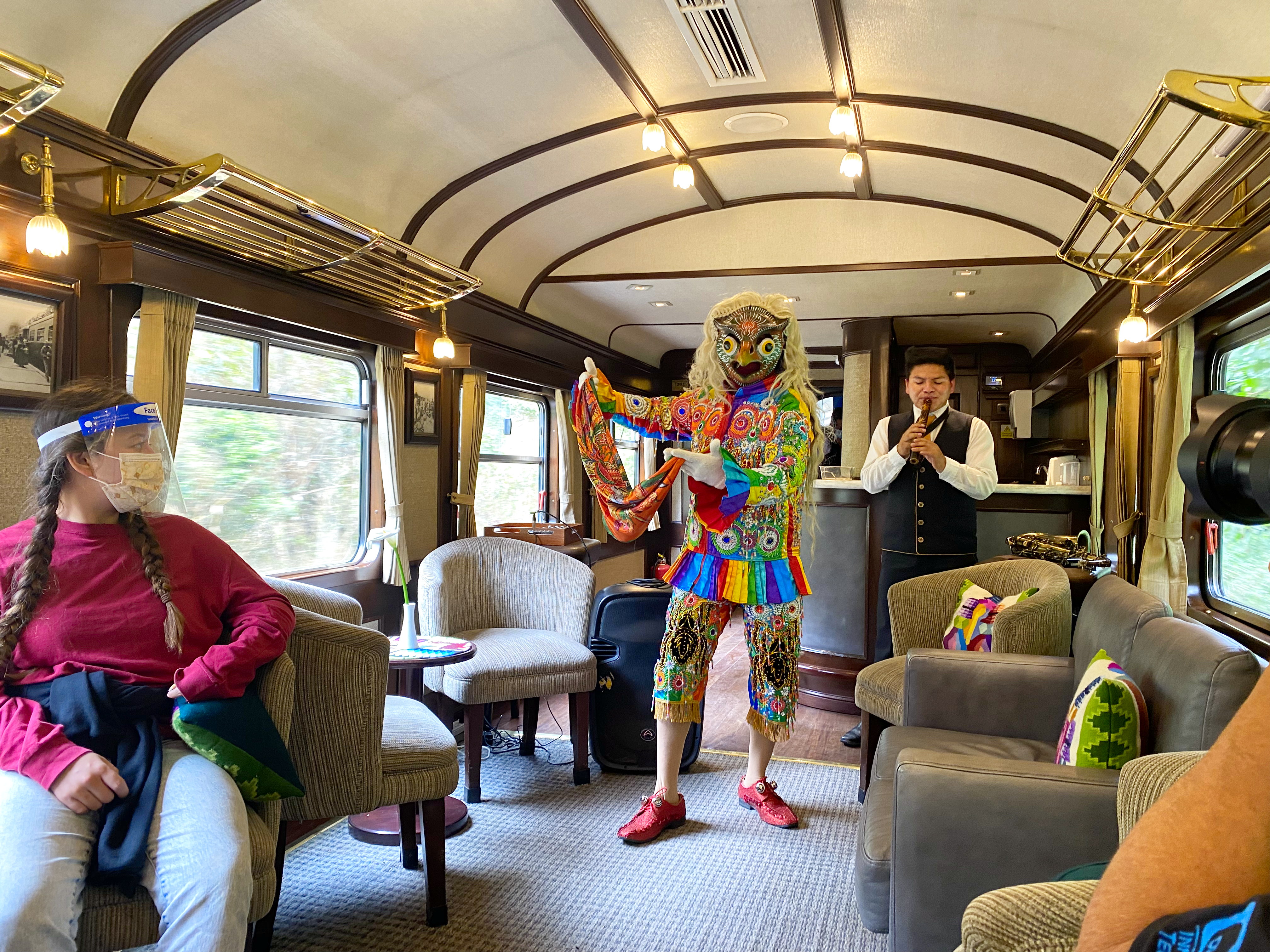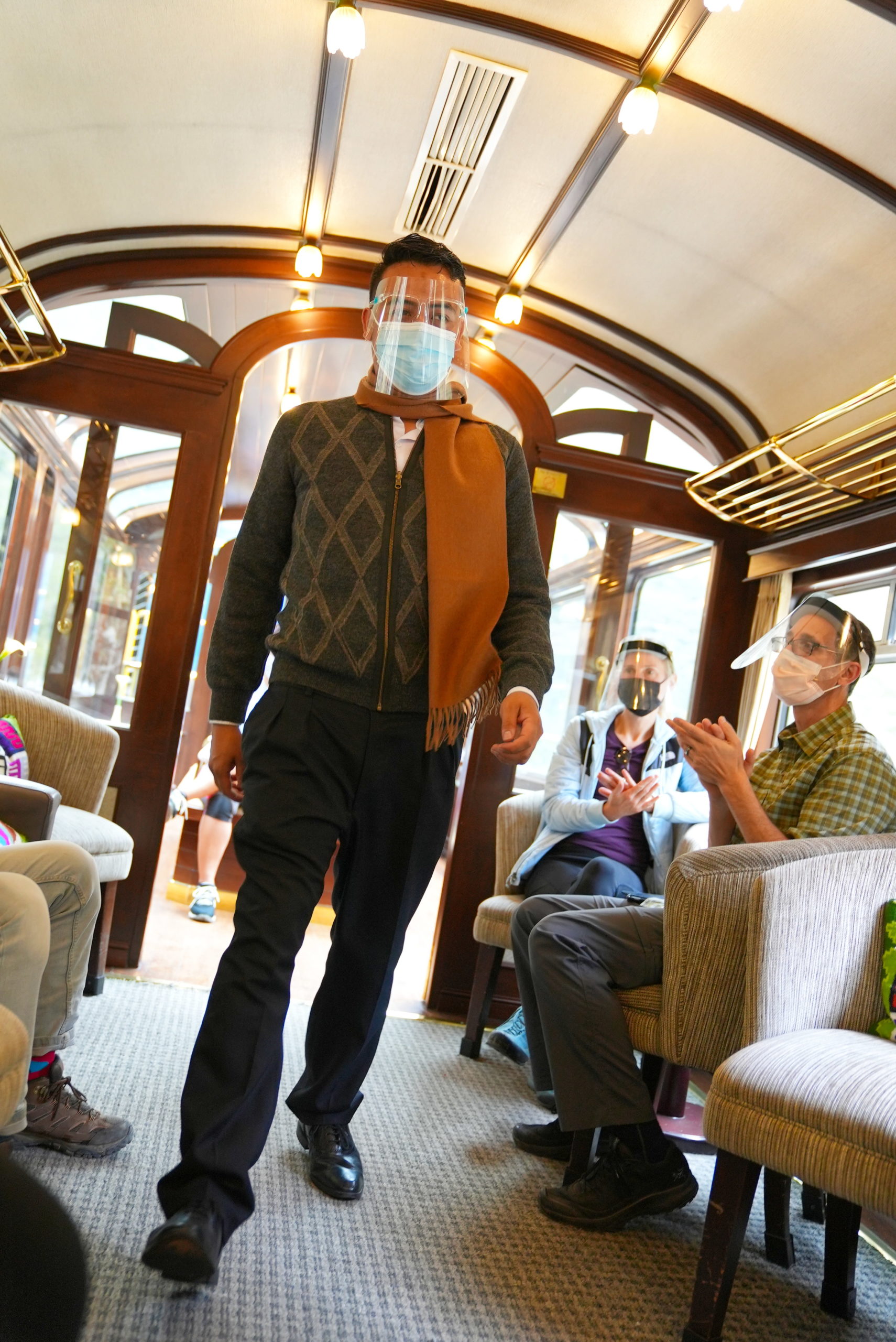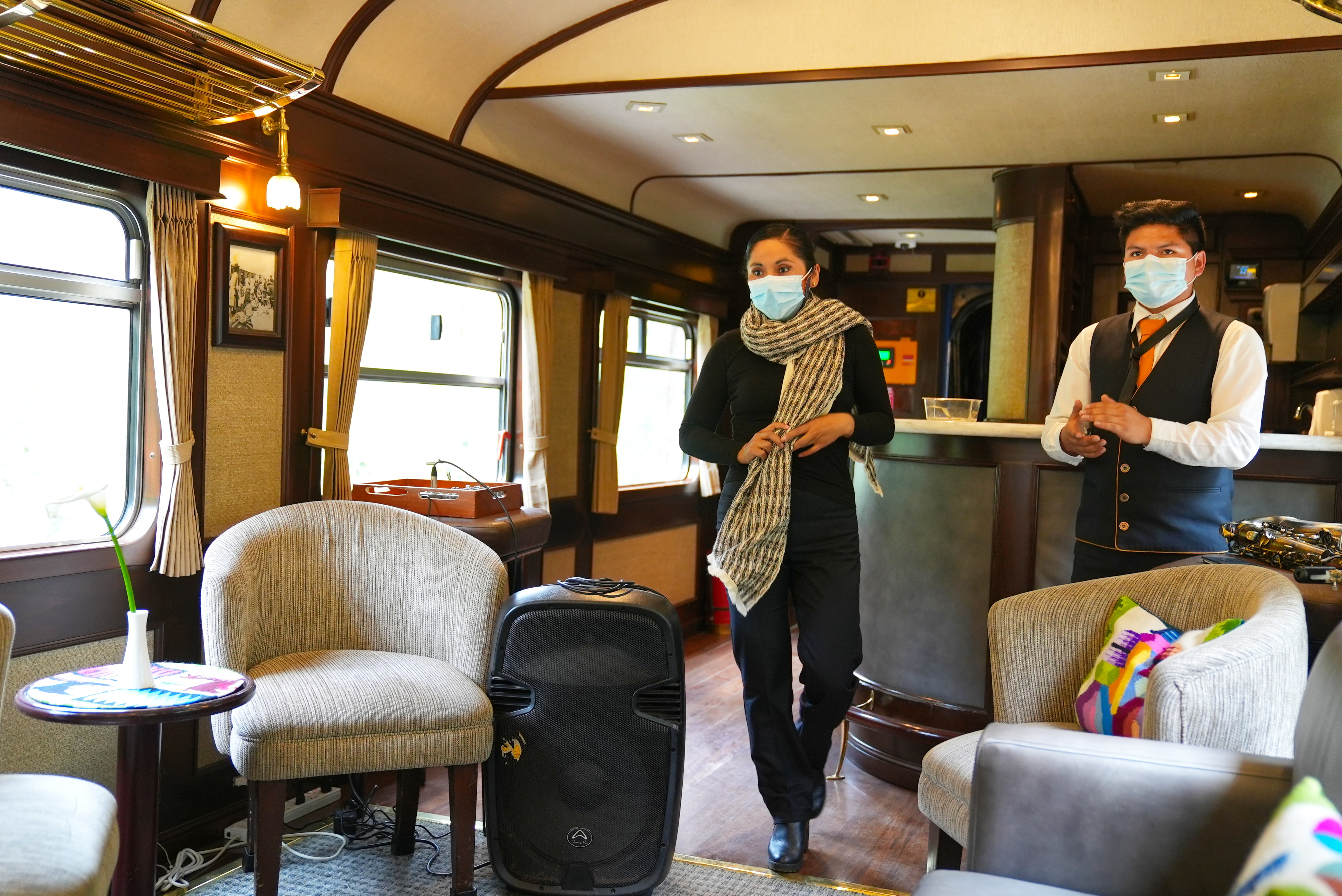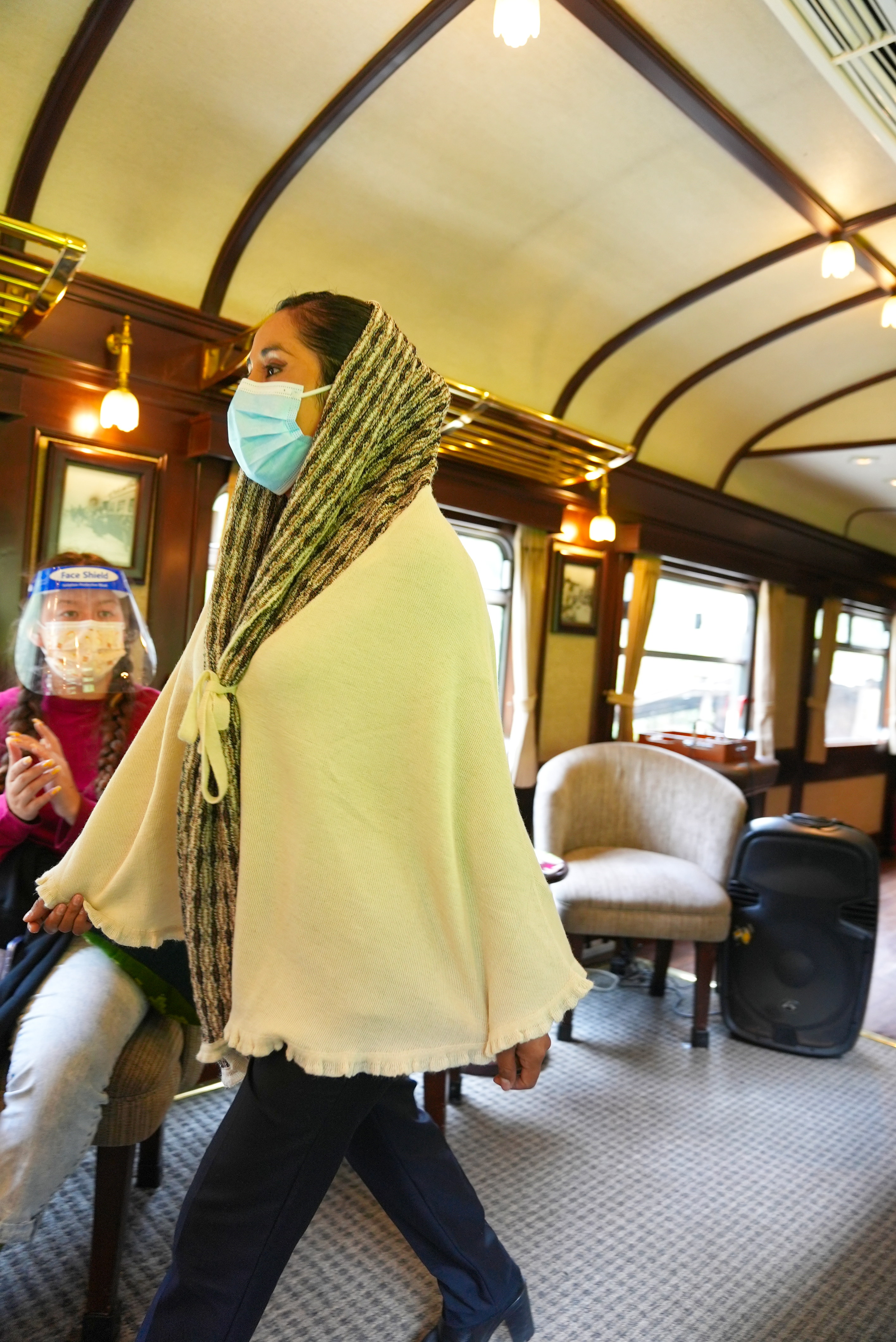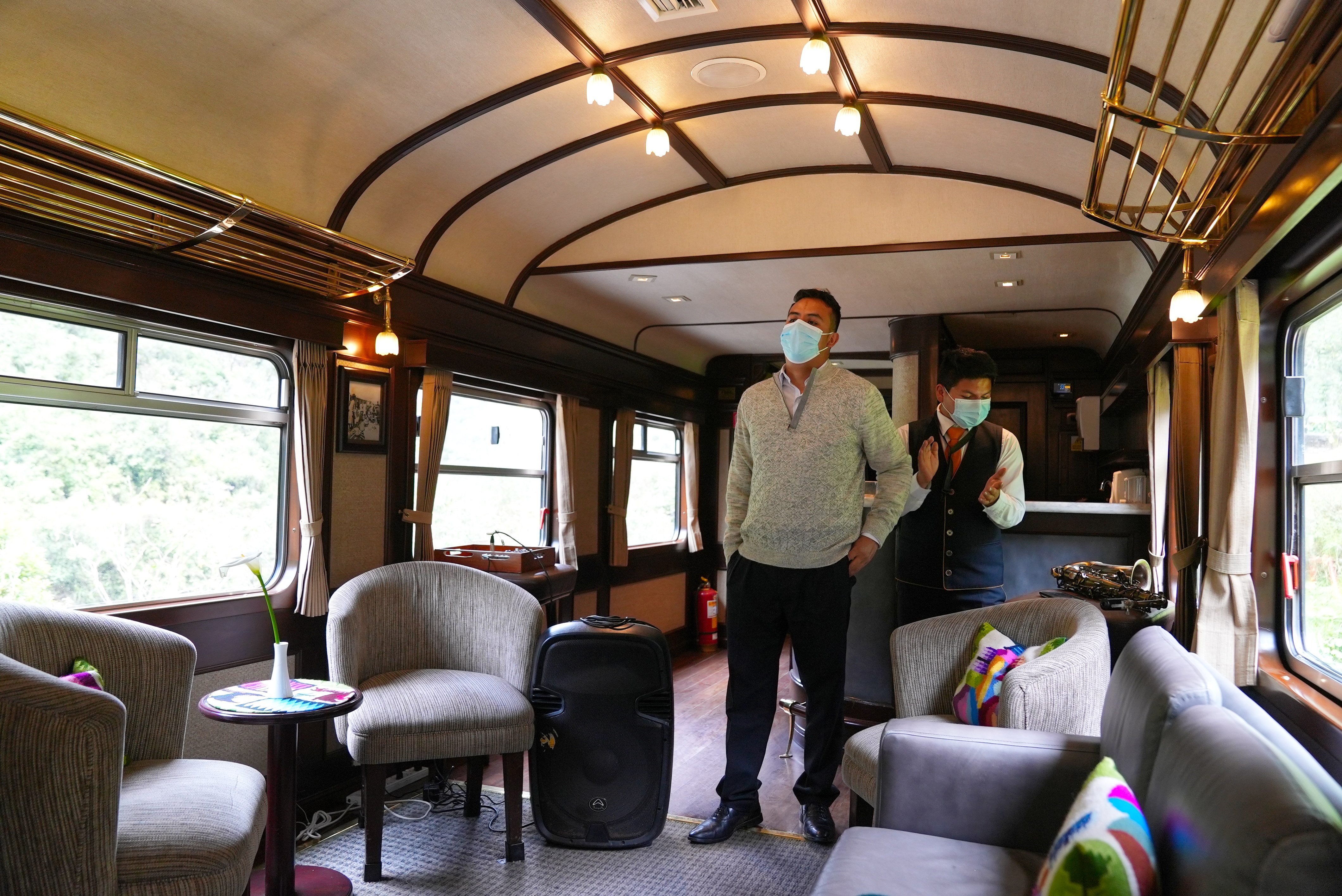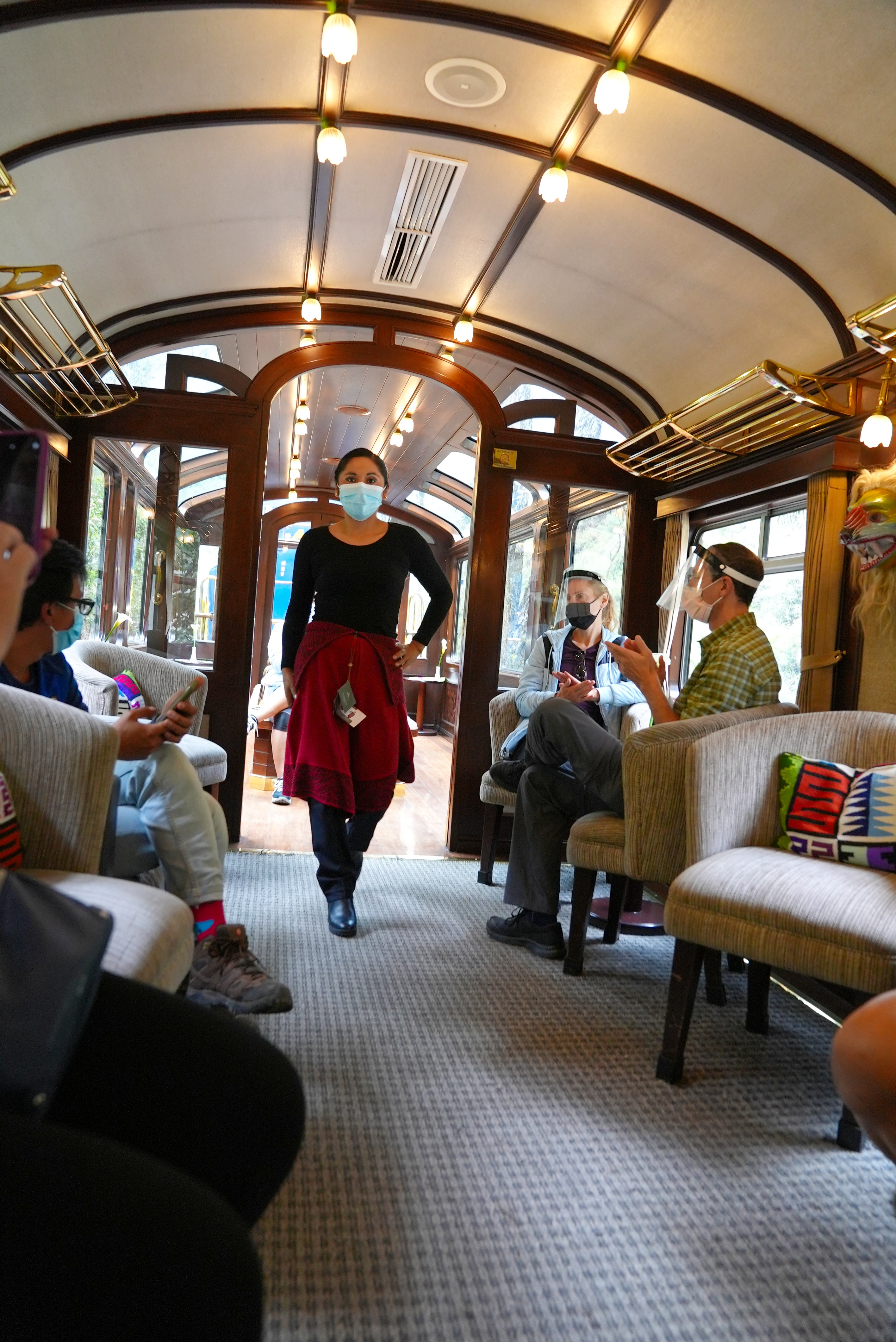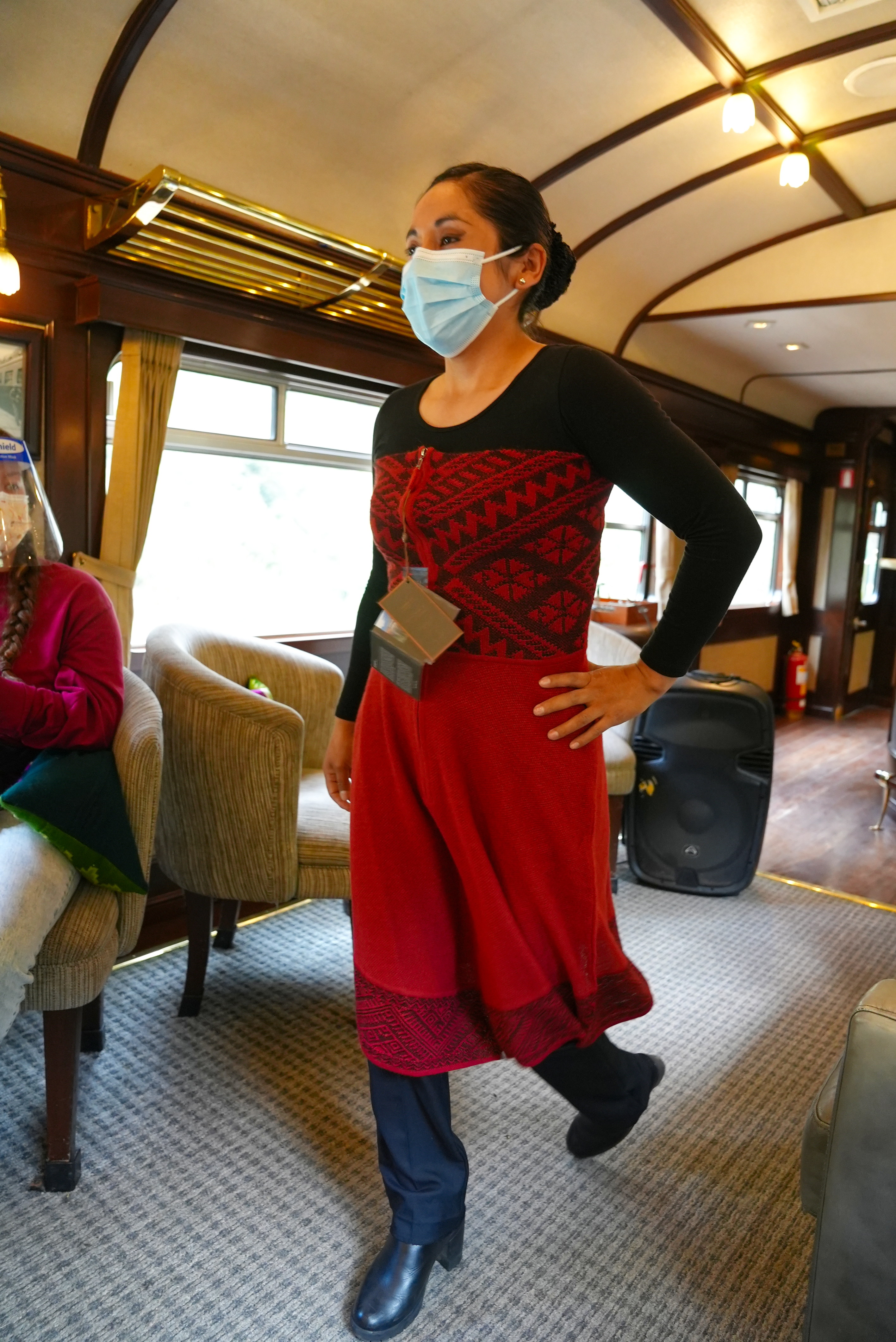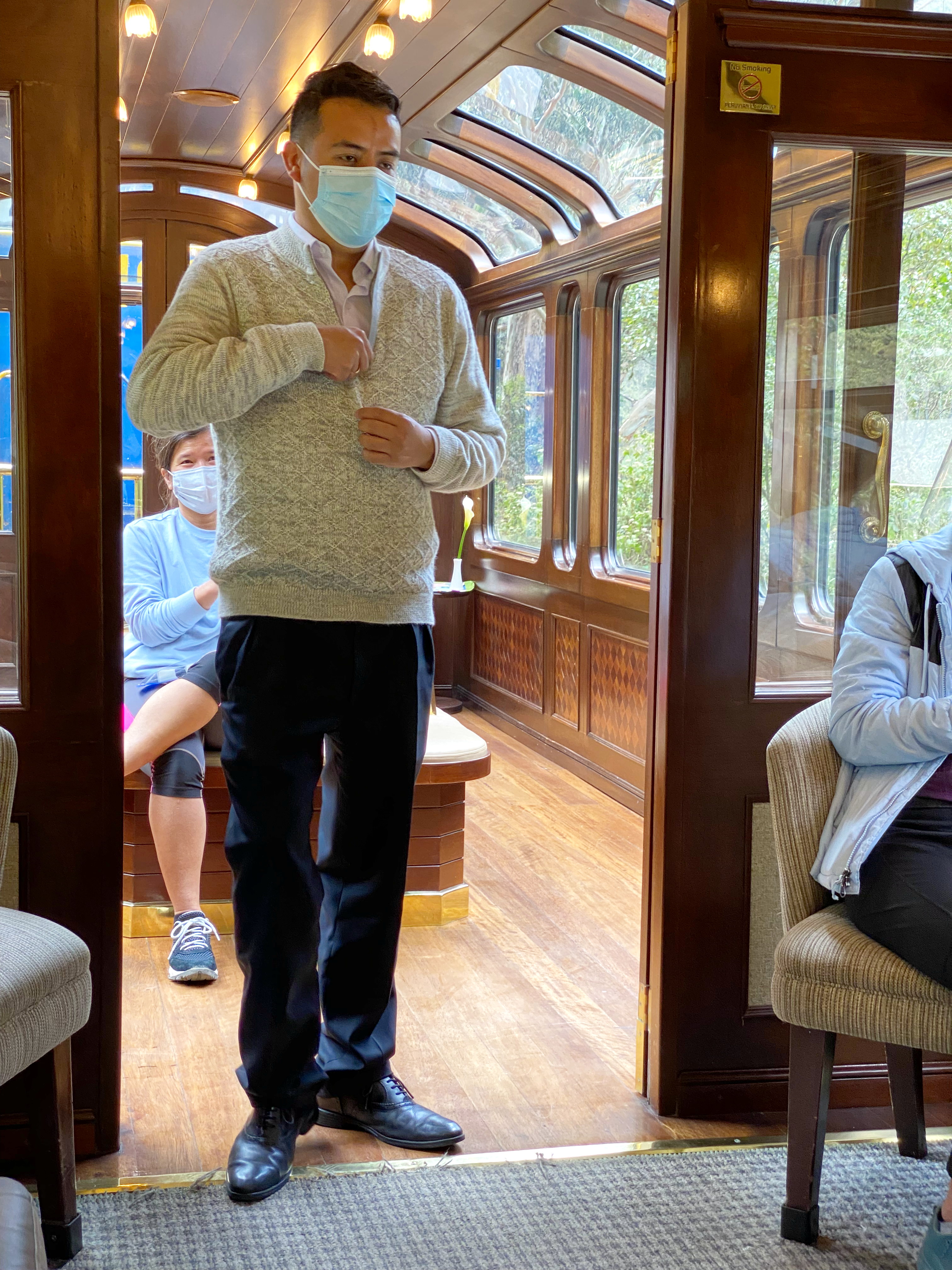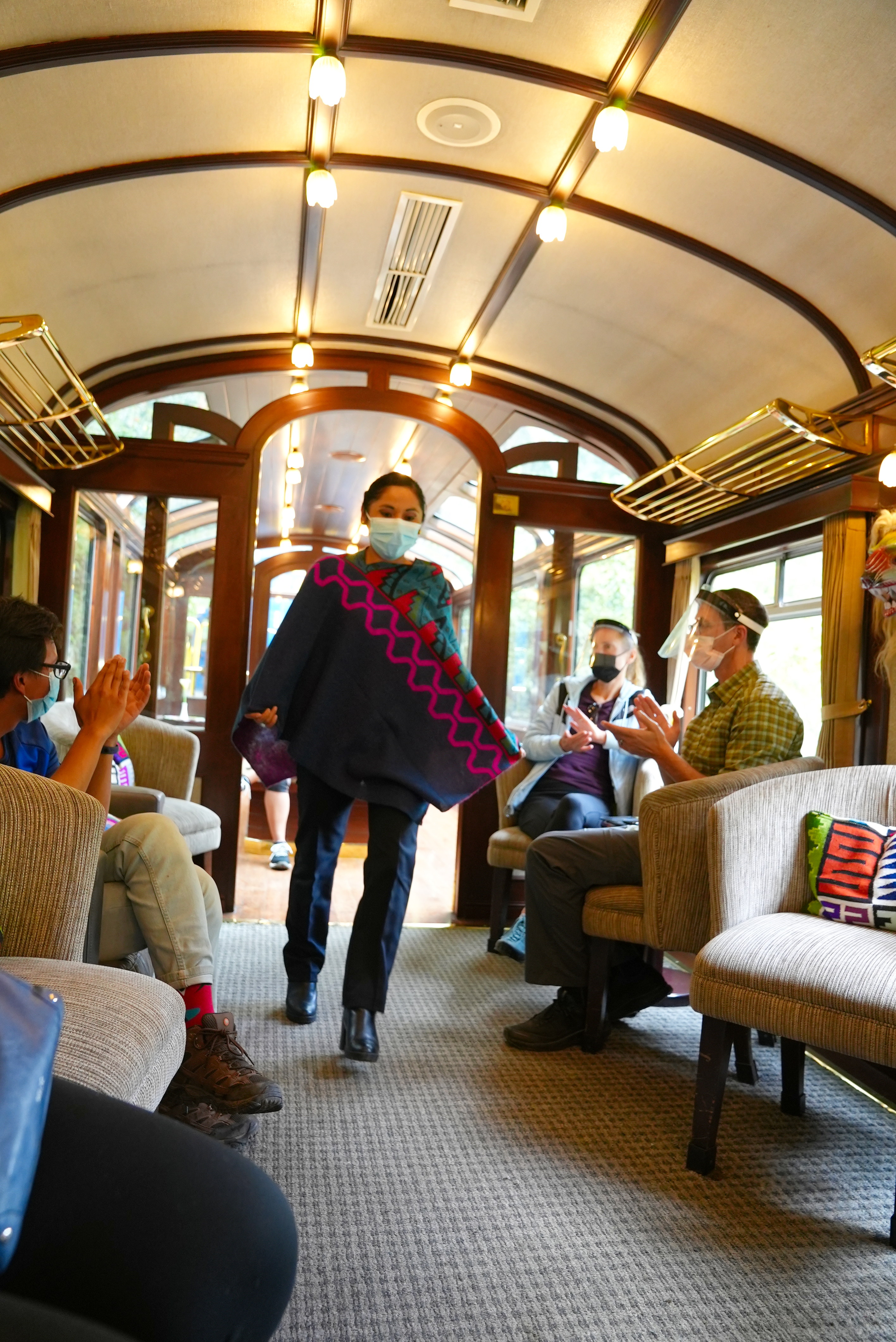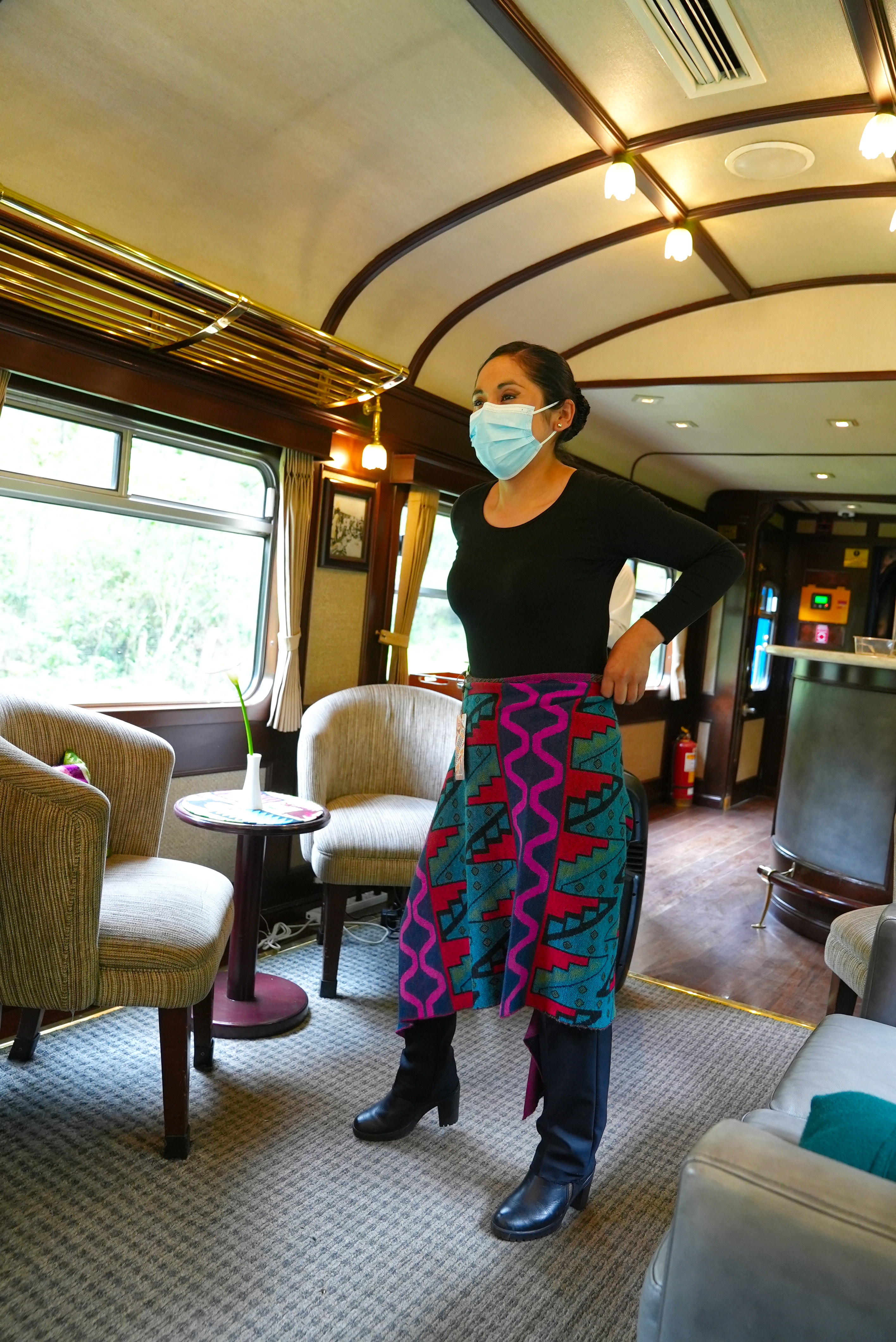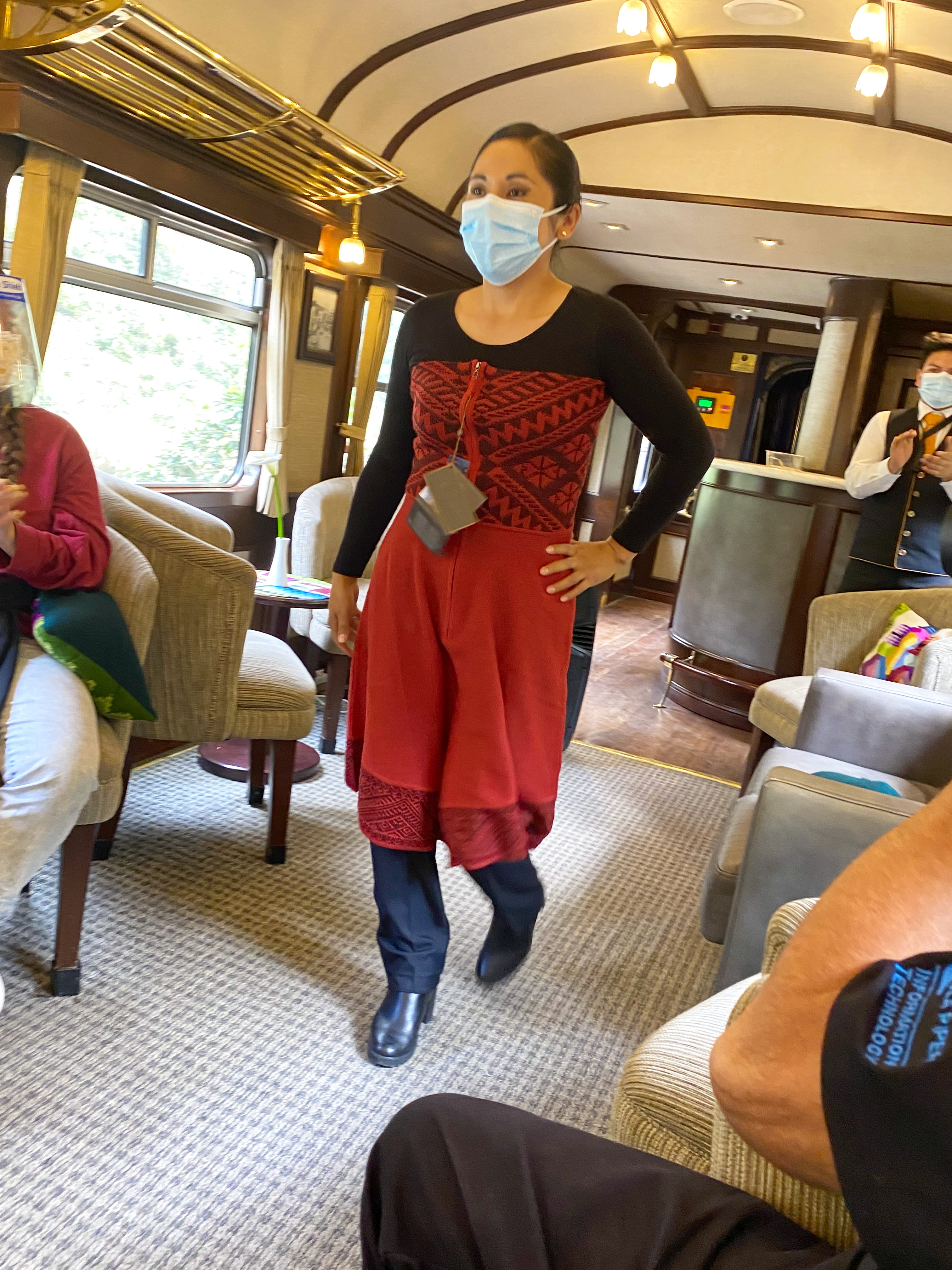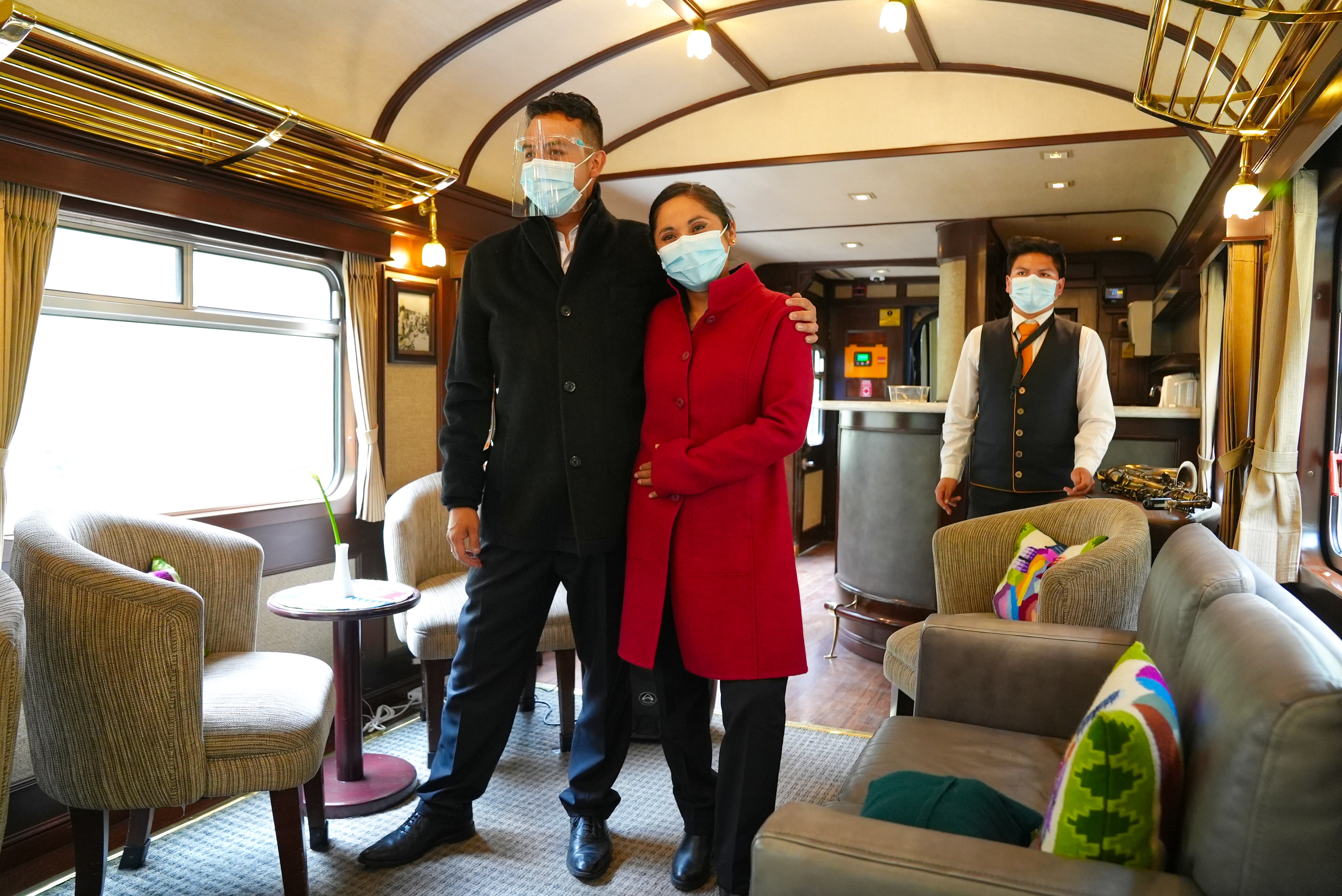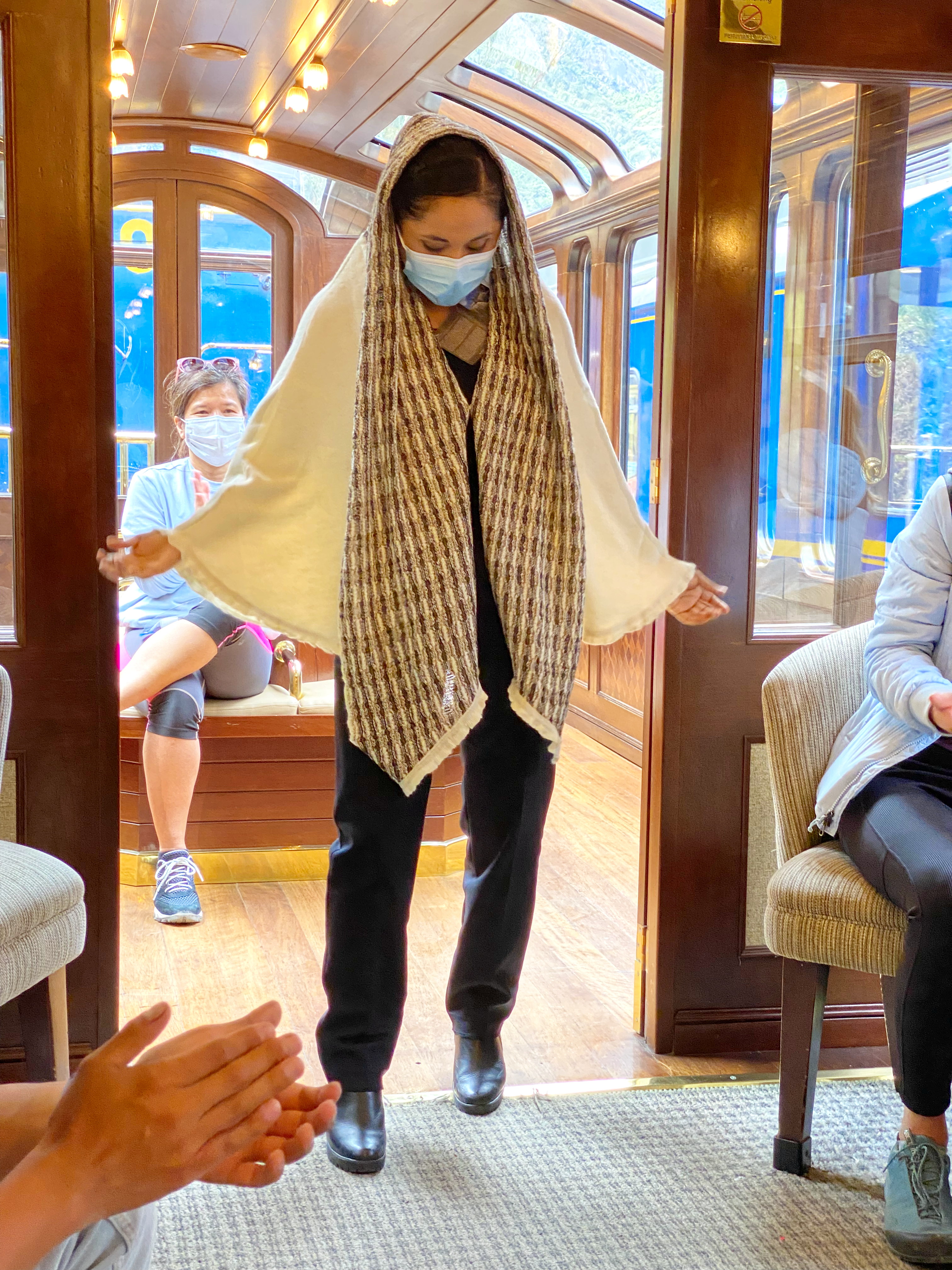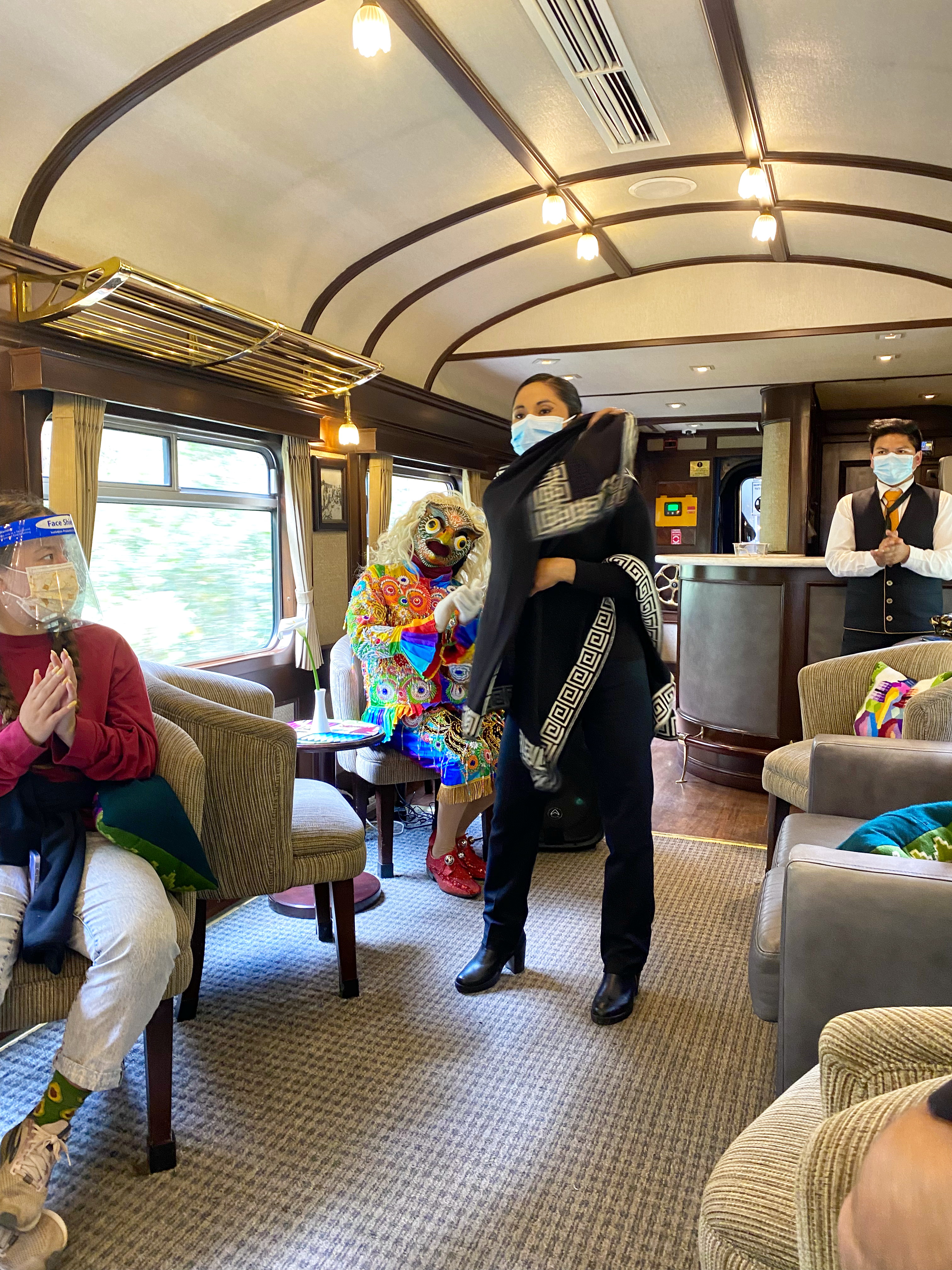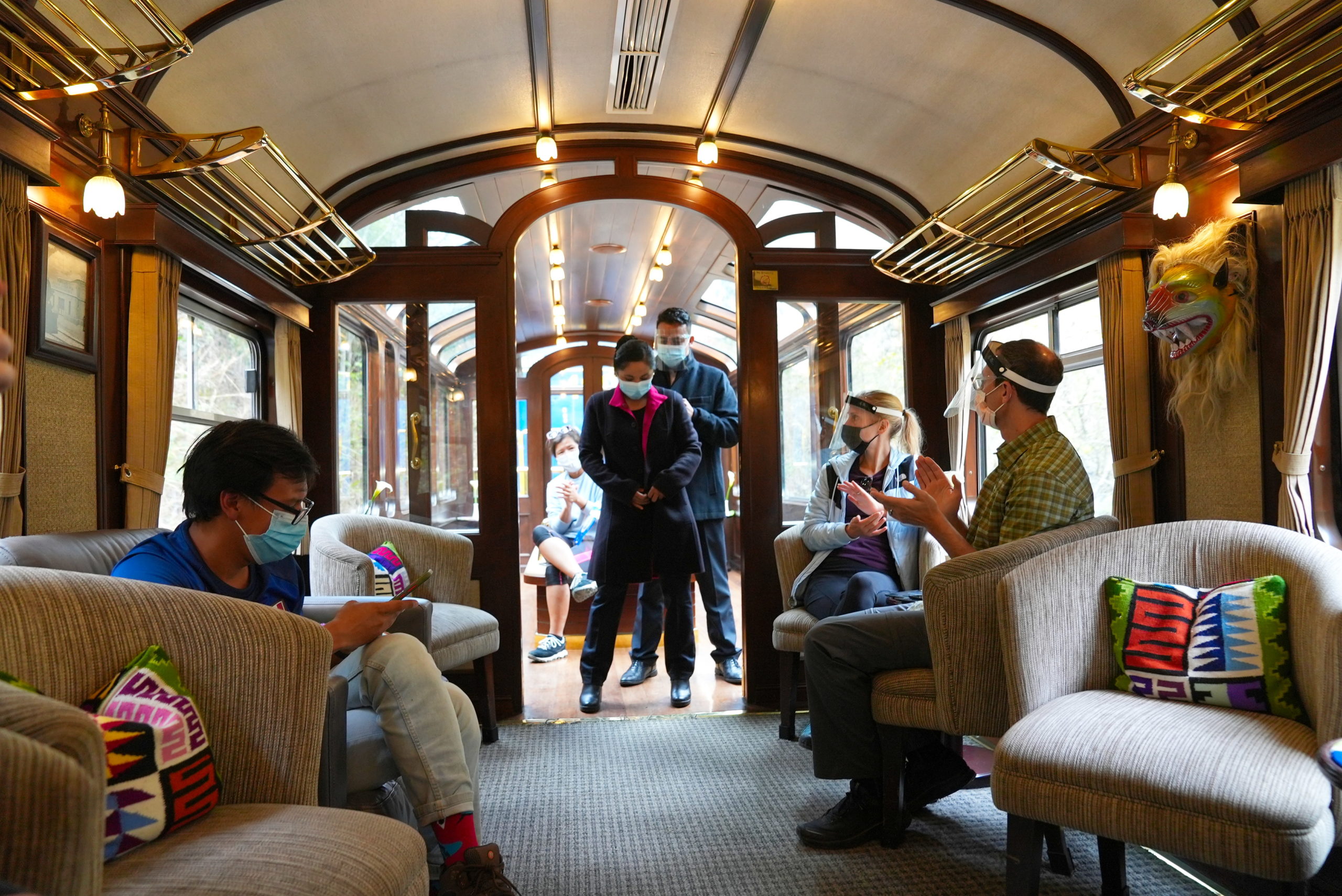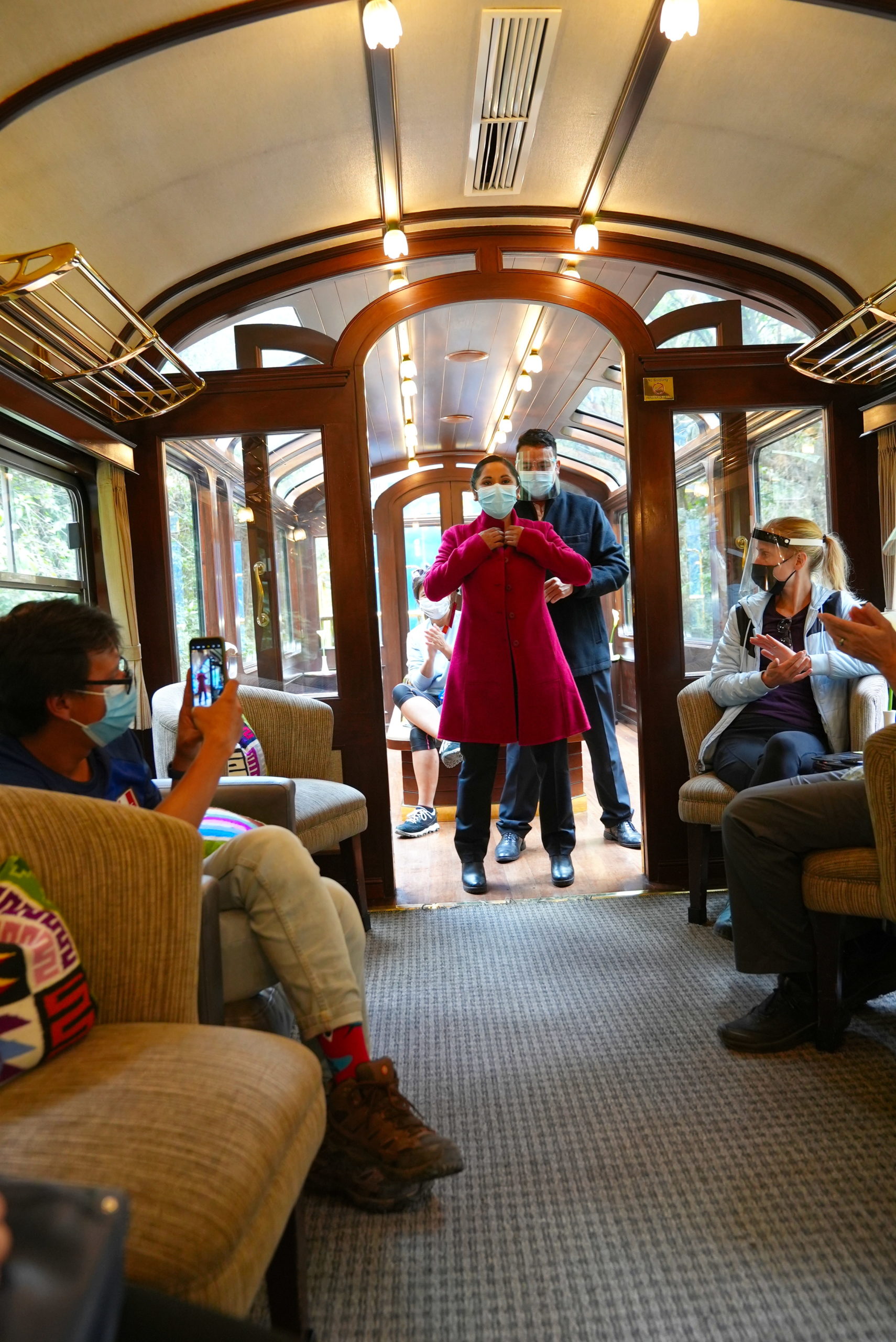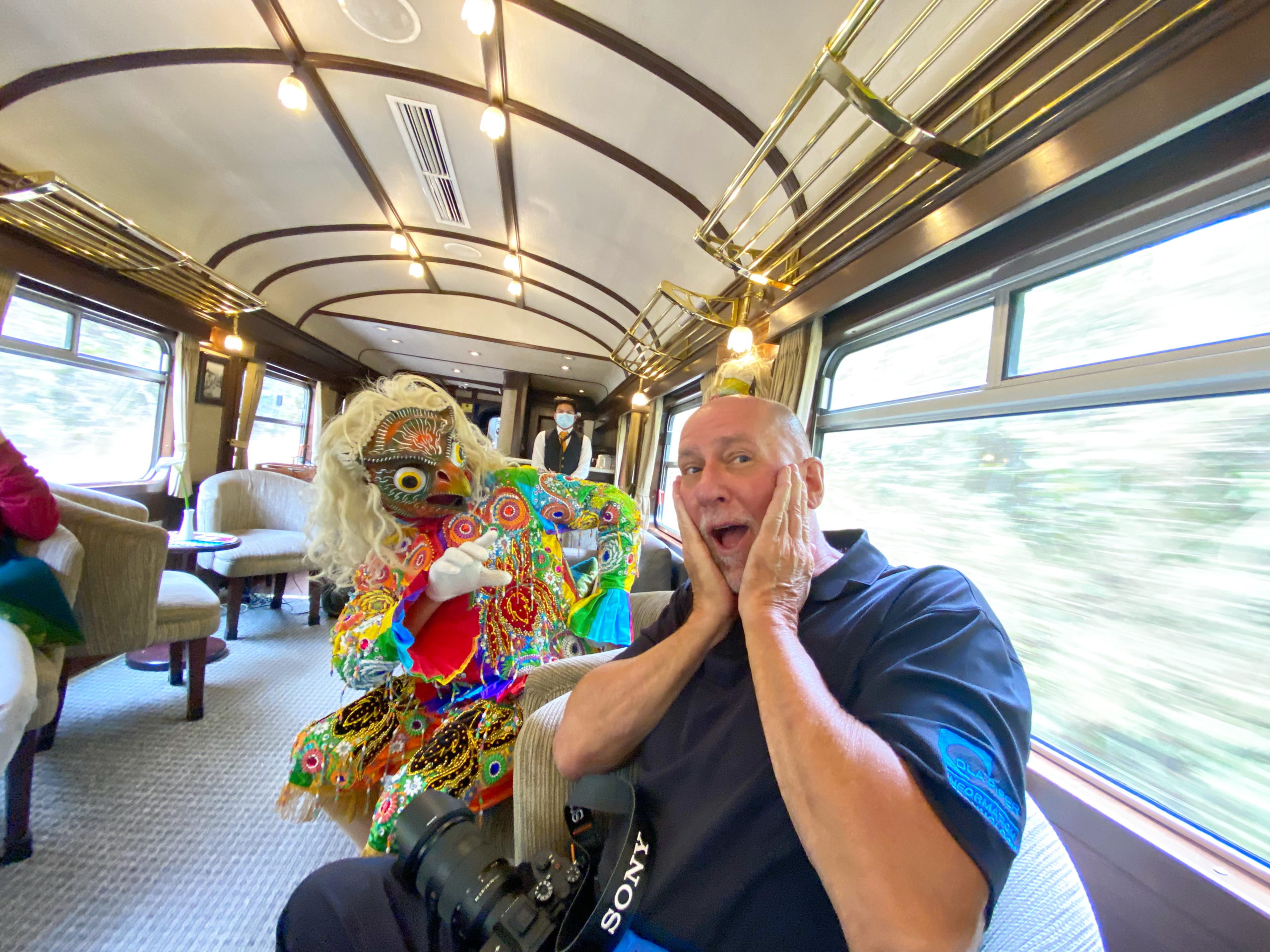Machu Picchu is a place in Peru famous for the mountains near it, and for not being destroy by Spanish invaders. “The Incas had no written language, and no European visited the site until the 19th century, so far as is known. There are, therefore, no written records of the site while it was in use. The names of the buildings, their supposed uses, and their inhabitants are all the product of modern archeologists, on the basis of physical evidence, including tombs at the site.”
PeruRail Outbound
Our journey begins in Cusco, Peru, where we are staying the night before to ensure we don’t miss our early train.
The station is a short walk from our hotel, and it looks closed. However, Estación San Pedro has a small door near the corner of the building, and we are able to navigate the bureaucracy, find our train, and board on time!
Yes, we are here during the Great Covid-19 Panic of 2020-21. In many places in Peru, no masks are worn. Latam Airlines required us to wear two cloth masks. PeruRail, apparently conducting independent research on Covid transmission in rail cars, forces passengers to wear a cloth mask and a plastic mask. If staff on the train see us removing our mask, even to clean it, they admonish us. Yes, it’s boring to work on a train.
We came all the way to Peru to right the rail from Cusco to Machu Picchu. Damn right we are going to take a real photograph of ourselves. Notice that our faces are slightly red? Get yourself more than two miles up and walk around in 50 degree weather, and you’ll have a red face, too. ?
We purchased tickets for the Vistadome Observatory car, a dome car that gives us a grand view of whatever it is we are about to see.
We leave the station and are treated to a view of Cusco, filled with unfinished buildings and other strange sights.
This fellow has a sharp knife and a home-made harpoon. We don’t know what he’s hunting, but he brought his son along to help carry it back.
I’m not sure what I’m looking at, so I take a photograph of it. And, I’m still not sure what I’m looking at.
Although there is a potential to see many wonderful sights, the train travels through valleys and farmland, seldom offering a spectacular view. However, as we pass through this valley, a train attendant points out those tiny white dots on the side of the hill.
The train attendant tells us the people hike to these coffin-like structures attached to the rock face and camp (for lack of a better term) in them. I suppose the view is impressive. Then they can hike back down, or they can zipline to the valley floor.
So, we pass the time, unable to speak clearly or read facial expressions, on our way to Machu Picchu.
We finally arrive in Aguas Calientes (more on that in our next article), make arrangements, and here we are!
Huayna Picchu
Huayna Picchu is the mountain commonly associated with Machu Picchu. Apparently, the mountain can be hiked, but it’s not fun.
There are many interesting views of Huayna Picchu. This is what it would have looked like to the ancient Incas, if any of them lived in Machu Picchu before it was abandoned for unknown reasons.
This view is slightly above the ruins. You can see the townhouses on the left and the courtyards with a single tree. As far as we know, that tree is not 600 years old, so is not representative of the vegetation present when Machu Picchu was abandoned in the 1400s.
Okay, so about 600 years ago, unknown people had a conversation.
Inca A: “Let’s climb to the top of that really high mountain, clear off the trees and stuff, and build a city.”
Inca B: “Okay, but that’s a shit-load of rocks to move around and shit-load of food to carry up from the bottom to feed the workers. We are too high up to provide defense, and no ruler can be this isolated. No one will live here. It will be abandoned long before we are finished. No one will remember you, no one will remember this place, and the world will marvel at our foolishness.”
Inca A: “I know what I’m doing. Location, Location, Location.”
Inca B: “Plus, I’m sleeping with your wife.”
Inca A: “What?”
Okay, poetic license, but you can’t prove it didn’t happen.
Machu Picchu Village
The Sacred Valley of the Incas stretches 60 kilometers, beginning in Pisac and ending at Machu Picchu Village. (We can’t find out who it is sacred to, and it is only occasionally a valley.)
Here we are, finishing our hike of the Sacred Valley, cold and wet from the rain. No, we did not hike the entire 60 kilometers, but just the last 50 meters or so; and now we are finished. ?
Okay, let’s hike down there and see what we can see.
We are wet and cold; however, anyone with half a brain has already left, so we have the place (almost) to ourselves. Notice that the ancient Incas did not know how to construct a Roman arch.
Our guide tells us that some folks conjecture that this structure had a special purpose, as evidenced by uniformity of the rocks, as compared with the rocks stacked above. Beyond that, its purpose is anyone’s guess.
Is this wall unfinished or finished? Did it have a wooden door or was it open all the time? The rocks are uniform, so this structure might have been important…but, why is there a rock taking up most of the building?
It is conjectured that the structures had roofs made of dead plant material and no doors. However, most other peoples had fire pits in their house to keep themselves warm and dry, so I’m thinking this is just to impress tourists.
Okay, we planned for the cold and wet, and we are staying reasonably warm and dry, and having lots of fun.
We have more photographs of us posing at Machu Picchu, because it’s our magazine and we can do what we want. ?
Machu Picchu Fog
Our guide tells us to pay attention to the fog and how it will shape our perceptions of Huayna Picchu and Machu Picchu.
Fog makes this place look mysterious. And cold and wet.
Those brightly rain-poncho’ed tourists are still there; yes, it is a thick fog here in the Andes.
When the fog lifts, the clouds sometimes remain, giving us a unique and fleeting view of the mountains. I wonder if the builders of this place also enjoyed such views.
Nah. It was probably more like, “Okay, whose bright idea was this? Too high, no food, cold AND wet. Jeez.”
Machu Picchu Critters
The mountains of Machu Picchu are home to many critters, a few of which we are lucky enough to see (and photograph).
What could a llama possibly be looking at? And why is there a boomerang above our llama? We don’t know.
We climb above llama; apparently, it is just enjoying the view, because there is nothing at all to eat where it is perched.
These ruins are home to viscacha, a rodent in the same family as chinchillas. No one will tell us if they are good to eat.
Our guide points out this viscacha, staying dry and/or hiding in this small nook in the wall. We are impressed that the varmint was able to get up there.
Notice that, although the Inca did not have a writing system, they still numbered and lettered their building stones with the Latin Alphabet and decimal numbers.
An aplomado falcon perches high on a rock, scouring the countryside for delicious food. Or maybe it’s just resting. Here in Machu Picchu, anything is possible!
Ah, there it is. We can see that the falcon is sizing up its next meal, waiting for just the right moment to pounce! Clever bird, this falcon.
These llamas spend A LOT of time looking outwards. You’d think that they would learn to look up, given the presence of the deadly aplomado falcon.
We are told that the Machu Picchu llamas are accustomed to people enough that they don’t spit (a nasty habit) on folks who get close to them. I want to test that idea, but my journey is blocked by a rope. Well, gotta follow the rules, I guess.
Machu Picchu Steps
You may have noticed that Machu Picchu is not handicap accessible. This is because the ancient Incas did not have wheels, thus no wheel chairs, thus no need for ramps.
It appears that the builders of Machu Picchu did not have concepts of gently sloping walkways. It is rare that we can find a place such as this with a few hundred square meters of flat.
On the left are two people, one of them in a blue poncho. This gives you an idea of the size of these steps, and makes you wonder, “Why?” Is it just so the guy who lives in the house at the top can go home every night? The Incas left no clues.
We find a spot where we can photograph a portion of the road that brought us here. The merry builders of Machu Picchu did not build this road; the Department of Peruvian Roads did that. The Incas probably had about one million more steps built into the mountain so they could come to work every morning.
At least, that’s my hypothesis.
Enjoy even more Machu Picchu.
PeruRail Return
Thus ends our time in Machu Picchu, and it’s time to return to Cusco Villas. (Well, we do spend a few days in Aguas Calientes, the town at the base of the mountain, but this article is about Machu Picchu, so we are pretending that’s all we did. We will write about Aguas Calientes next time.)
No, this isn’t our train. In fact, it’s just the locomotive. But trains are pretty cool, so I included this photograph.
Yes, there are people who will pay thousands of dollars to get to this obscure part of the world and, when they must return home, will indicate they have a cough and then not be allowed on the train and be stranded for two weeks, possibly losing their job back home. Or are there…?
We flip the paper over to see if there is more to fill out and discover that PeruRail re-uses paper. For a while, I consider stealing this fellow’s identity, but then realize that my handwriting is not nearly this pretty and I’d never get away with it.
On this train, the train staff are not enforcing mask wearing. There are colorful tablecloths. It has a different feel to it.
Shortly after we leave the train station, we are invited to the next car for…something. Signs tell is that it is not allowed to switch cars while the train is moving, but, when in Rome, right? I grab my camera and we follow the train attendant.
This is the car that costs A LOT more money to travel on. It has a bar and live entertainment.
It also has a much nicer observation car. Yeah, this is where the cool kids hang out. So why are we here?
We are here because there are performers who present old-timey Peruvian dancing, but no one purchased tickets for this car. So we common folks have been given a free upgrade. Let the festivities commence!
Note that Covid does not bother you if you are playing a wind instrument. Fact!
Dance, my beaked friend, dance!
But wait, there’s more!
The performance is followed by a fashion show, displaying the finest woolen clothing the Peru has to offer.
They wear the silly masks.
As a special treat, the female fashion model begins slowly stripping. Yes, this is a much different experience than the other train ride!
The wool coat is two-sided! You can be a classic coat wearer, or spice it up with a flashy pinkish-red coat, all for the same price!
At the end of the show, they tell us that everything we’ve seen is for sale. Although it is all very nice, we explain that we live in San Diego where, although it gets cold, it does not get High Andes cold.
The Dance of the Inca Bird!
Hallelujah

